- info@naturebylennart.com
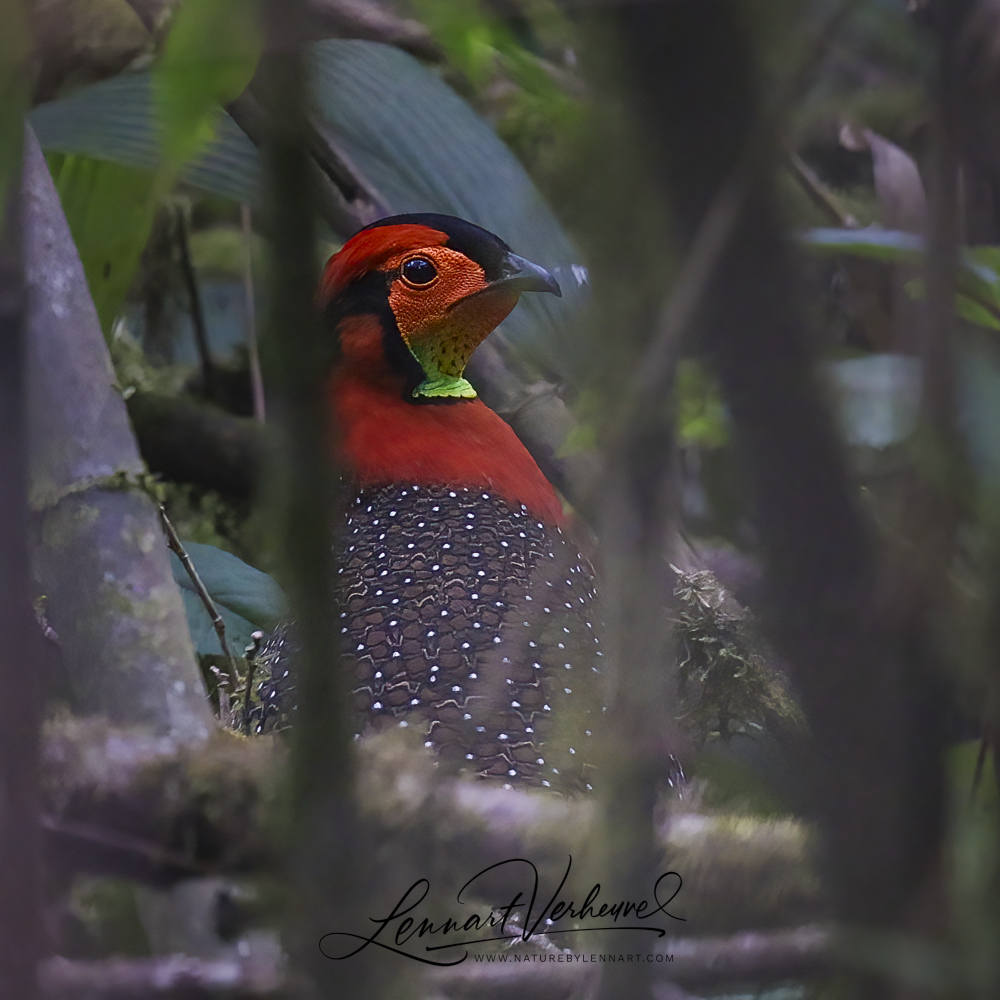
My journey to India started on March 1, 2023. After some obstacles, I managed to get to the high Himalayas where the Snow Leopards cooperated fantastically. I even managed to see my favorite small cat: the Pallas’ Cat! On Monday morning, March 13, Andreas and I were ready again at the small airport of Leh. As we had already become accustomed to, the safety check was again very thorough and I had to put all my electronics in different boxes. Maneuvering six boxes of expensive equipment plus a jacket and two bags would remain to be the least favorite part of my trip in India, but unfortunately there was no avoiding it. Taking many domestic flights also enabled us to make the most of our stay in India. Luckily I came through it without major problems.
We had a real day of travelling ahead of us. In the morning we would fly from Leh to Delhi. The annoying thing about the airport in Delhi is that there are 3 terminals with terminal 1 being quite a distance from the other two. To reach the other ones you have to take a bus. Fortunately, the flight to Leh was without delay and we had plenty of time to make our transfer. After the unavoidable security checks we sat at a table eating a pizza before the flight Delhi – Guwahati: our final destination for today.
It was an evening flight. I had been bestowed with the responsibility to be an emergency exit passenger with the associated responsibility to open the door if the plane should come to crash. For a moment during the flight it indeed seemed to come that far because when we were about to land at Guwahati airport, our pilot deemed it necessary to pull up the plane again, while we were only separated by one meter from the tarmac. From the message through the intercom I thought there was something wrong with our landing gear, but afterwards that seemed to have been an excuse from the pilot who had just screwed up the landing. A good thing though that he took his time to fix his error. It took us an extra half hour to circle, but then we were safely on the ground. To our delight, our checked luggage had also arrived from Leh without a hitch. That night we spend in a hotel close to the airport. Tomorrow the second part of the journey would begin: to Eaglenest!
Eaglenest Wildlife Sanctuary was once part of a battle scene and apparently the Red Eagle Division of the Indian Army was also based here. This is where the place takes its name from. Today it is a protected reserve that is especially popular with birders. Many attractive specialties of the foothills of the Himalayas can be enjoyed here, with one bird always receiving special attention: the Bugun Liocichla. This species can basically in the whole world only be seen at one specific spot in Eaglenest. If you are a dedicated world bird lister, you don’t want to miss it! However, we had very different plans. We thought we could deduce from other tripreports that Eaglenest might just be the place to see Asiatic Golden Cat. Andreas had already tried that species here, but unfortunately without the desired result. This cat is one of the hardest to see worldwide so well worth another try.
In the morning we met Janco van Gelderen in the lobby with whom I had already traveled through South America and the Western Sahara. Right on time the car that would take us to Eaglenest arrived. Traffic in India is always an uncertain factor, but it went quite smoothly. Our driver knew exactly how to drive just to the limit and not over it. An additional obstacle was that a special permit is required to enter the state Arunachal Pradesh. The check took quite a long time, but eventually we got the okay to continue driving. At a stop for lunch I photographed an Oriental turtle dove. I had seen it last as a rare vagrant in the Netherlands in 2015.
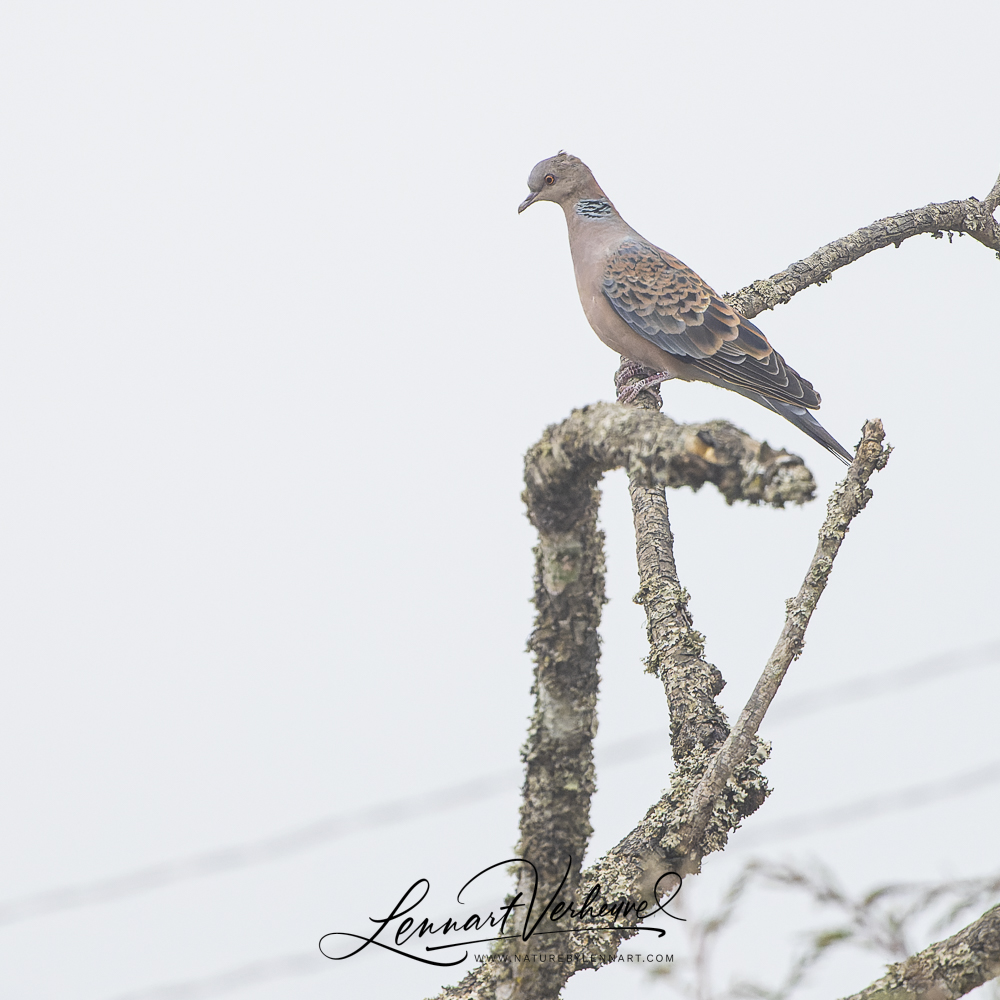
Oriental turtle dove
Later in the afternoon we stopped in a small village on the Tenga River where we met our guide Jintu and a driver in a so-called gypsy. That is an open jeep with benches in the back which would make spotlighting a lot more pleasant. Fortunately there was also some time to walk to the river where I had the opportunity to see some beautiful new species including a typical river specialist: the Plumbeous Water Redstart.
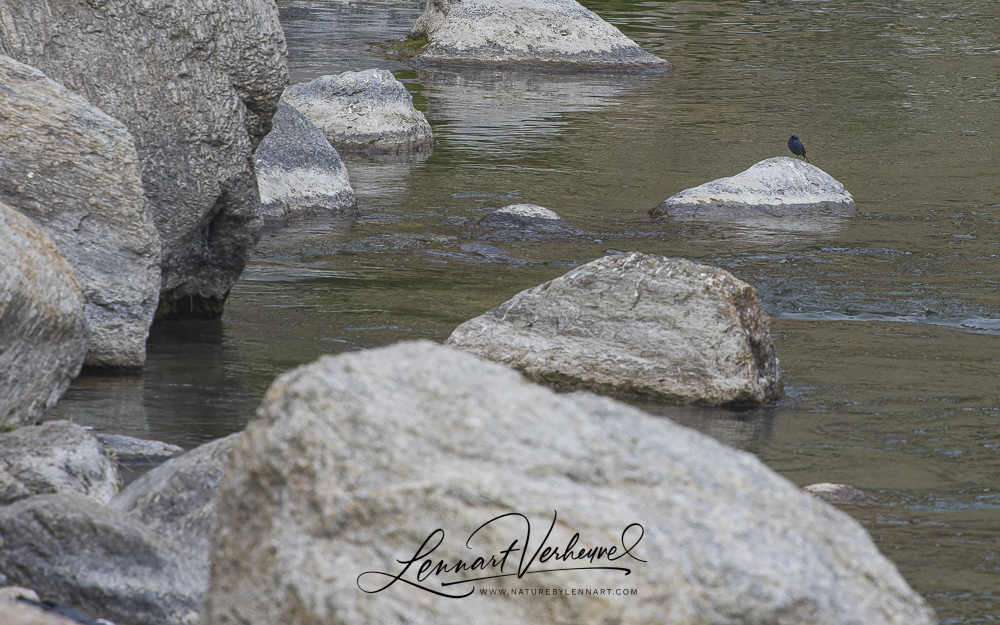
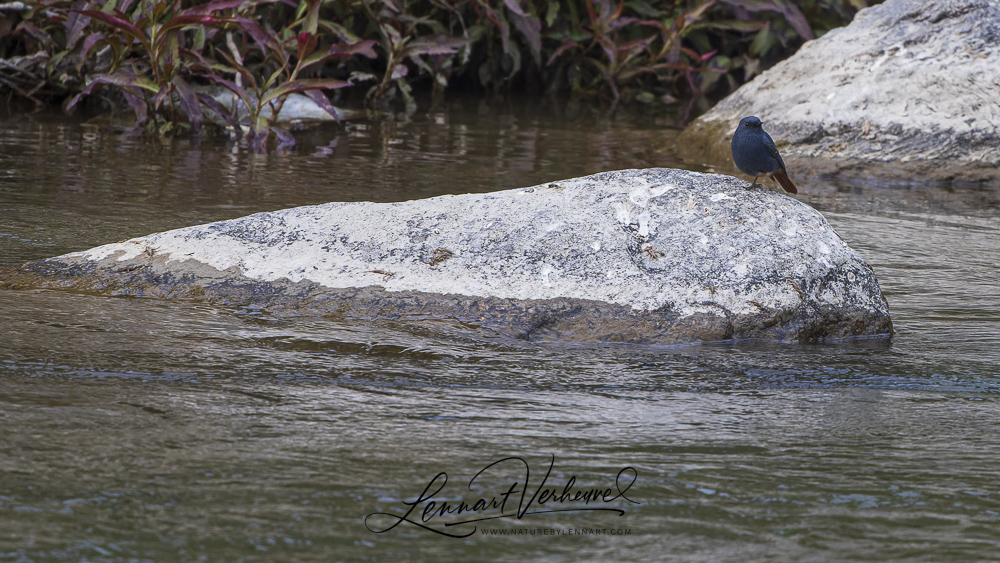
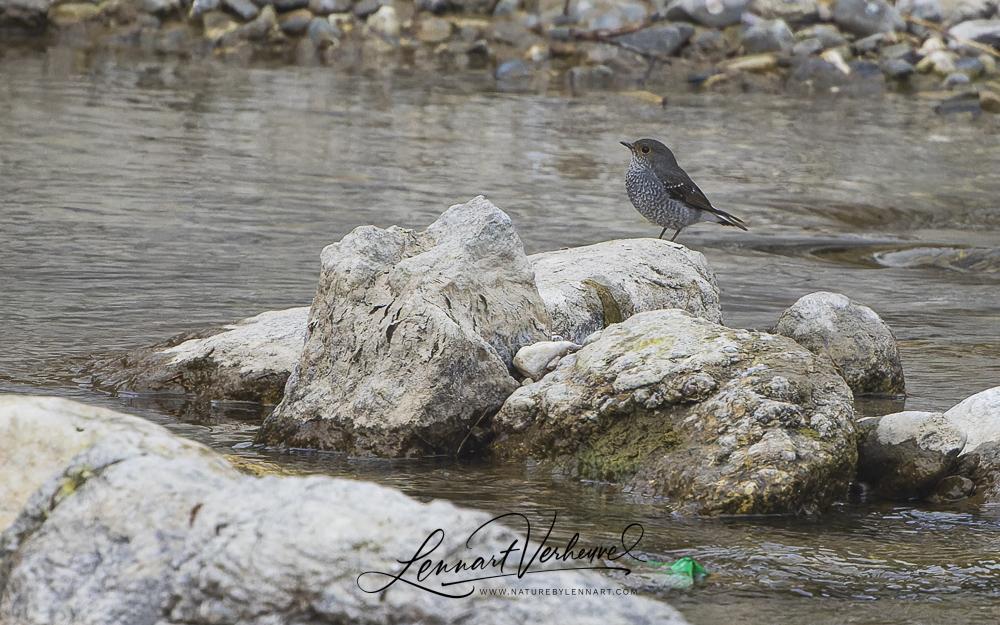
Plumbeous Water Redstart
I was also happy with a White-capped Redstart because I had missed it in Ladakh.
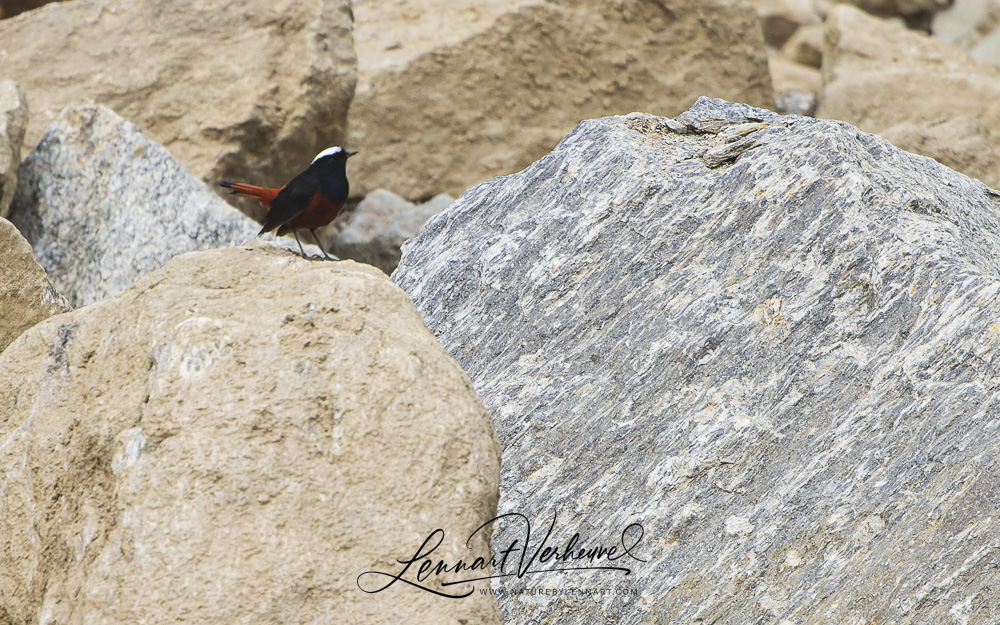
White-capped Redstart
I also had missed the Brown Dipper there and I saw that one as well. However that was from the moving car so I didn’t have any pictures.
After this stop we drove the last part to Eaglenest. At the check at the entrance of the reserve I saw a Yellow-breasted Greenfinch singing in the top of a pine tree.
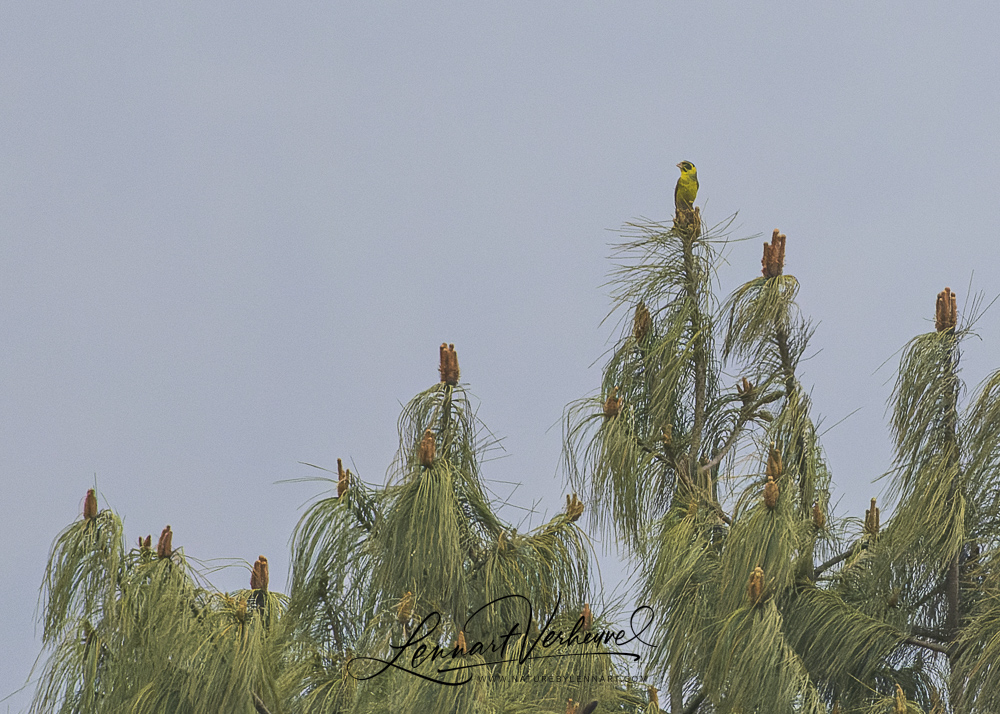
Yellow-breasted Greenfinch
Eaglenest Wildlife Sanctuary turned out to be much larger than I had imagined. The reserve basically consists of one long road that runs through the woods and over the mountain slopes. The two main sites along that road are Lama Camp and Bompu Camp. Lama Camp is closest to the entrance and it is a about 15 kilometers drive to get there from the entrance. Bompu Camp is at least twenty kilometers further from Lama Camp. Due to the bad roads, the transfer between the camps takes a few hours. We would spend one night in Lama Camp and the other nights in Bompu. That was because the Golden Cat seemed to be seen most often near Bompu. For me as a birder this was not ideal because around Lama Camp there were birds that I probably wouldn’t be able to see in Bompu Camp. The afternoon ended in dense fog with no photographic highlights.
Of course we immediately went out that night to make the first attempt for the cat. I got a new bird species: the Grey Nightjar.
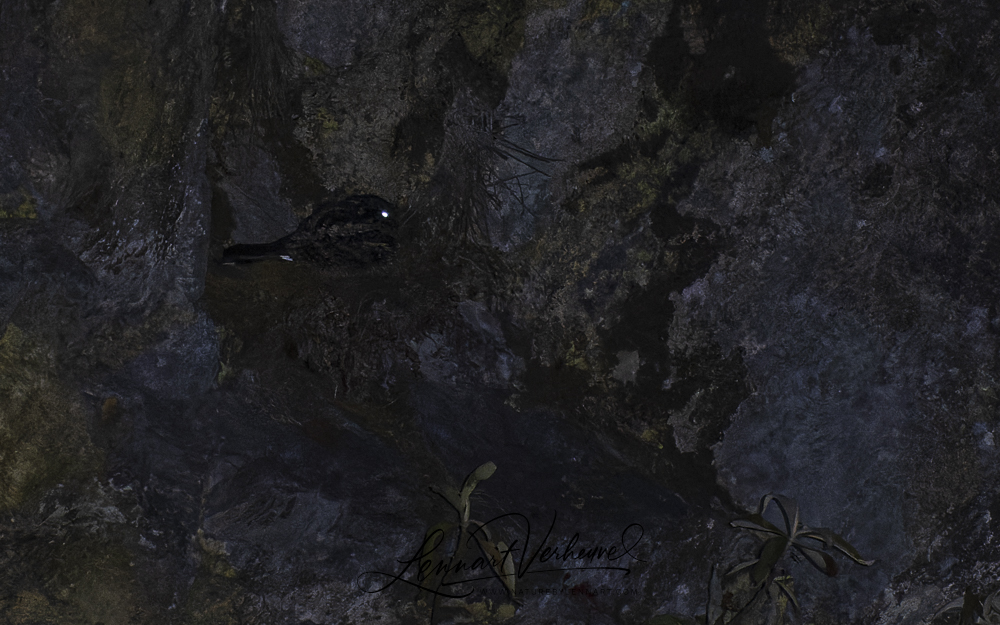
Grey Nightjar
We were also pleasantly surprised with many sightings of the Bhutan Giant Flying Squirrel. That is really a huge flying squirrel and a real local specialty. We had one absolute brilliant sighting of an animal sitting a few feet away at the bottom of a bush. It would not get better than this. Up close, it was striking how huge they are.
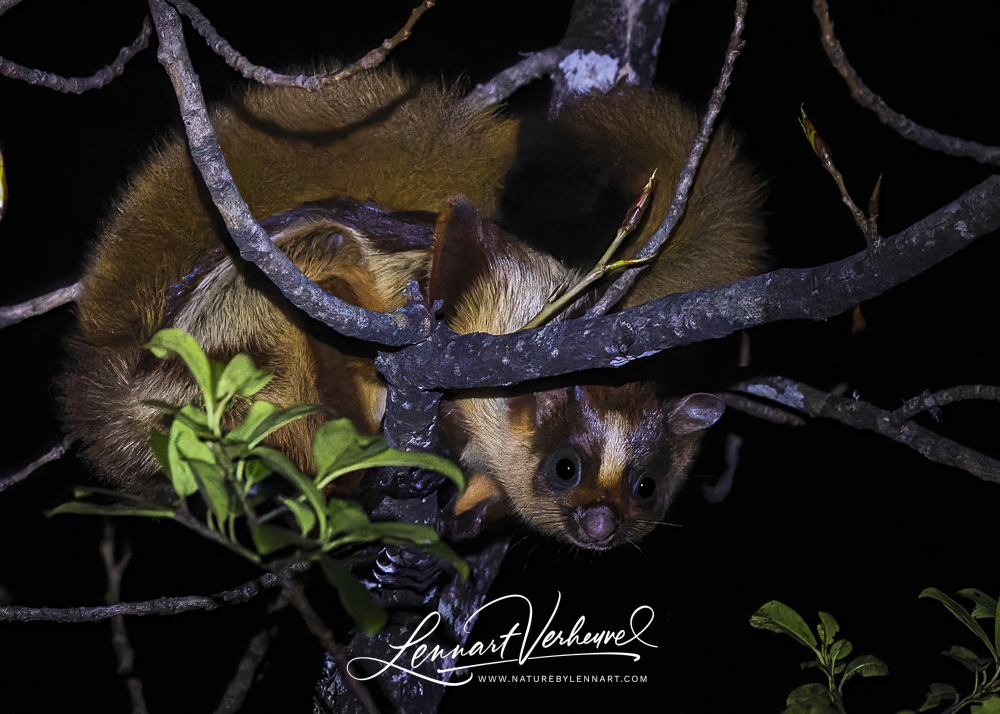
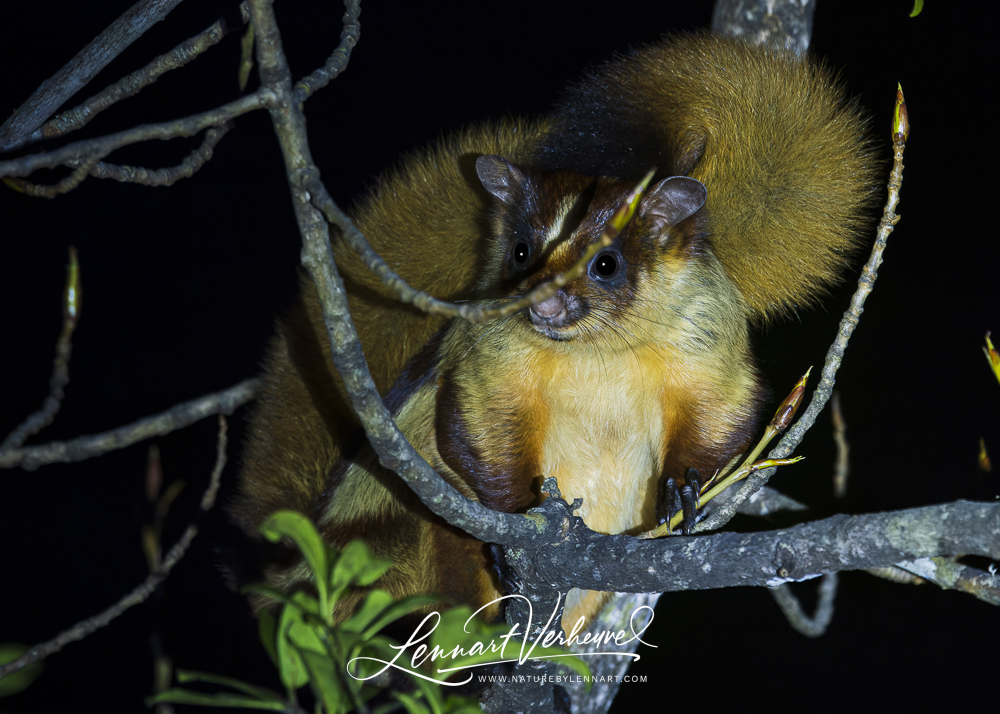
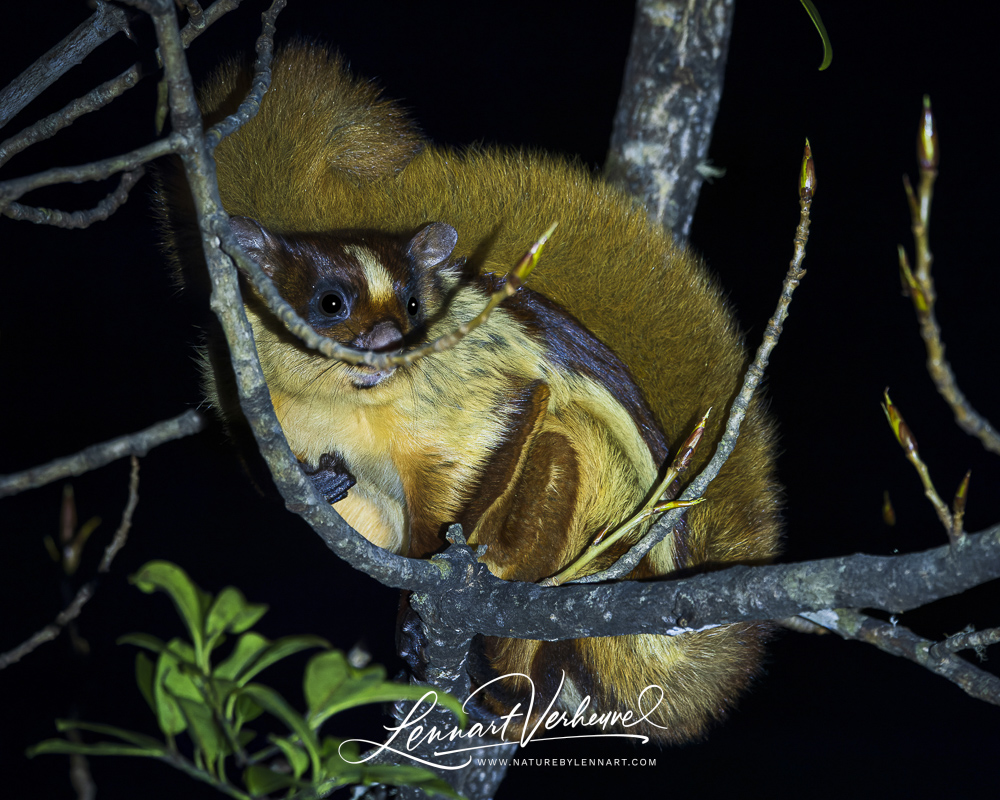
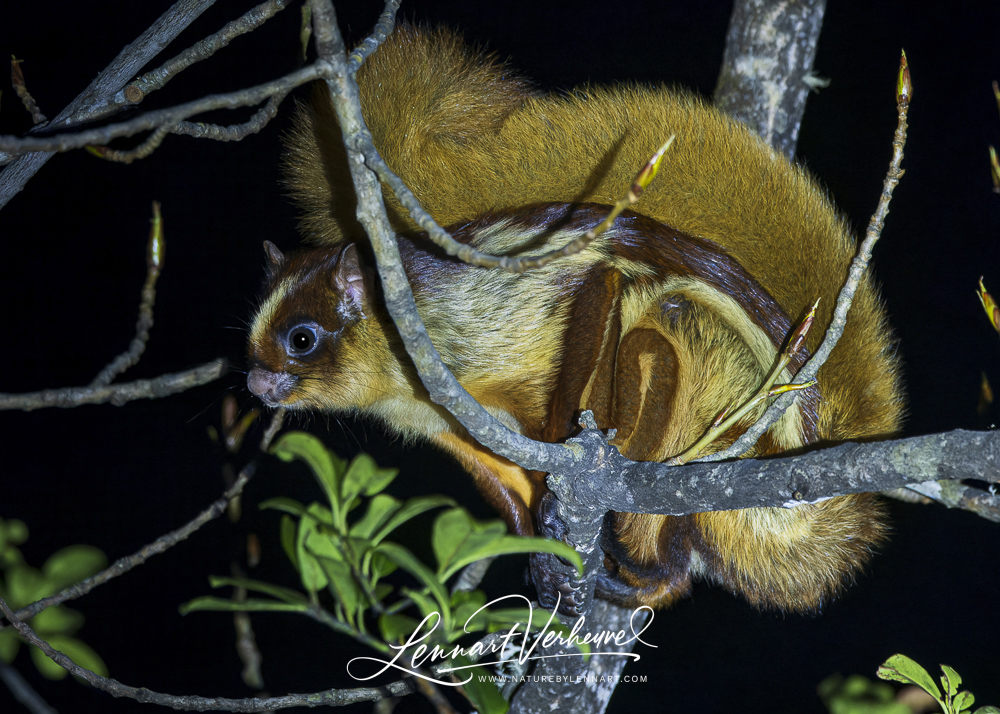
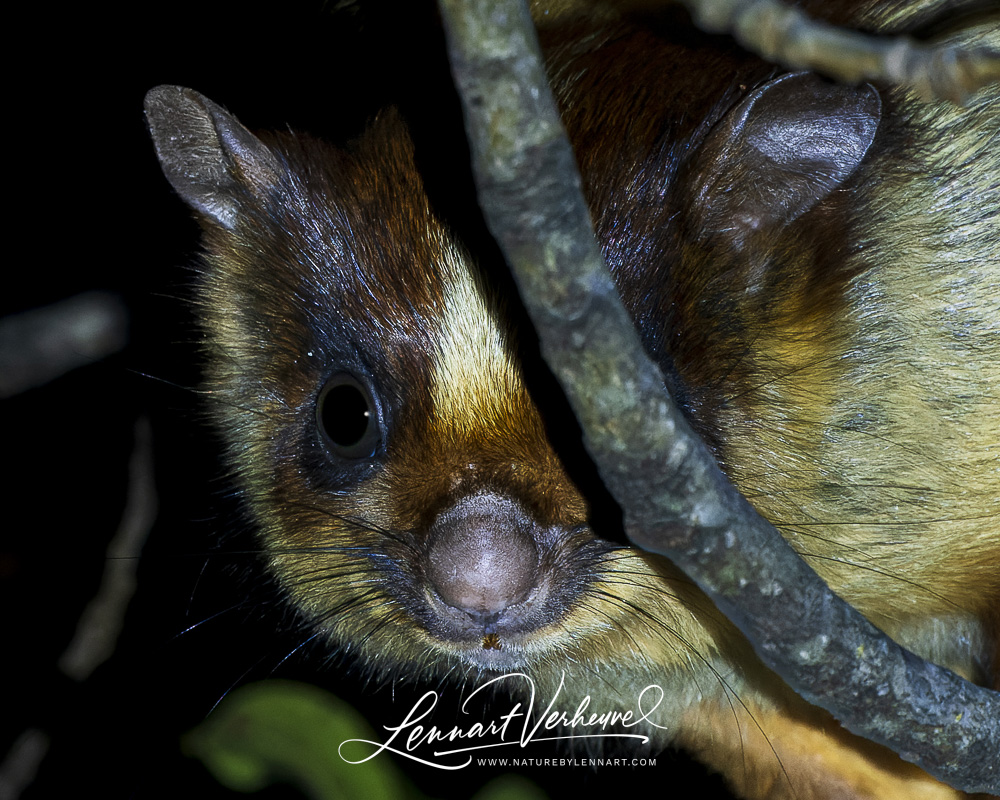
Bhutan Giant Flying Squirrel
Furthermore, we had one sighting of Grey-headed Flying Squirrel. According to the book, this is a species of which very little is known. Andreas had also seen it once before on his other trip here. We were glad that we already had one in the bag.
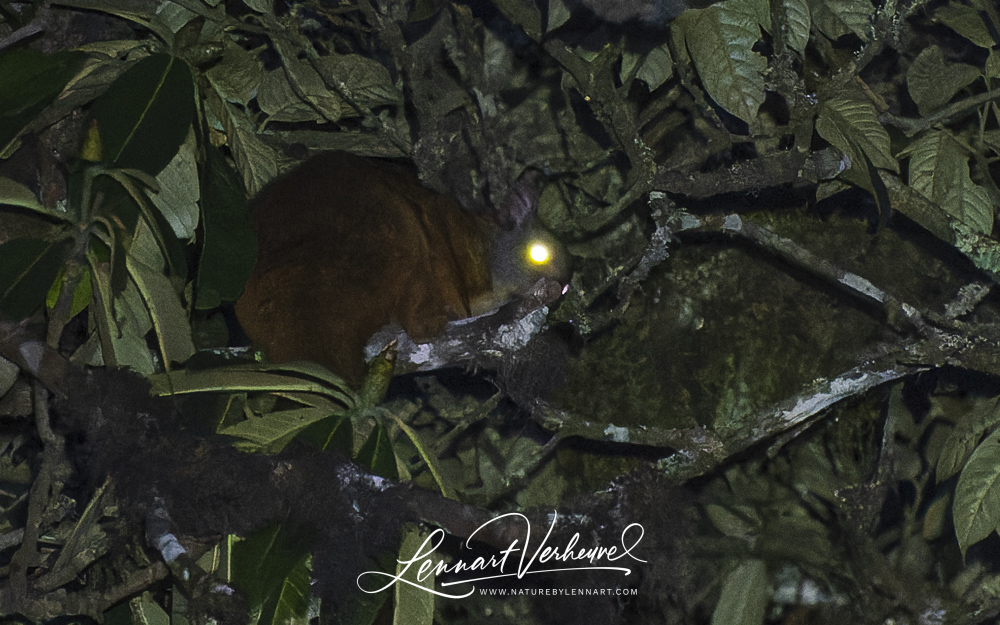
Grey-headed Flying Squirrel
On the way back we were surprised by a large Indian elephant running ahead of us. We followed the animal at a suitable distance because on a narrow mountain road you don’t want to get into a fight with an elephant. Fortunately, the animal eventually disappeared into the forest.
Ambitious we set off again that same night at three o’clock. We could only get a few hours of sleep, but we wanted to get the most out of it. After that one time our guide had enough of that though, so we didn’t do that again. That routine was in any case not really sustainable for the long term. We also saw next to nothing that remaining night. I wanted to be back at first light in the morning at the place where the Bugun Liocichla was usually seen. However, the chances for this seemed to have shrunk considerably because a lot of logging had taken place around the site of the Liocichla for the construction of a power line. As a result, the Liochichla had not shown itself for two weeks. I was not happy about that to say the least and I also did not understand how on earth the locals risked disrupting their main attraction this way.
Anyway, who dares wins, so we were early in the morning on the trail where he was seen regularly. Some other birders were also there. Furthermore, we were welcomed by a Blue-fronted Redstart.
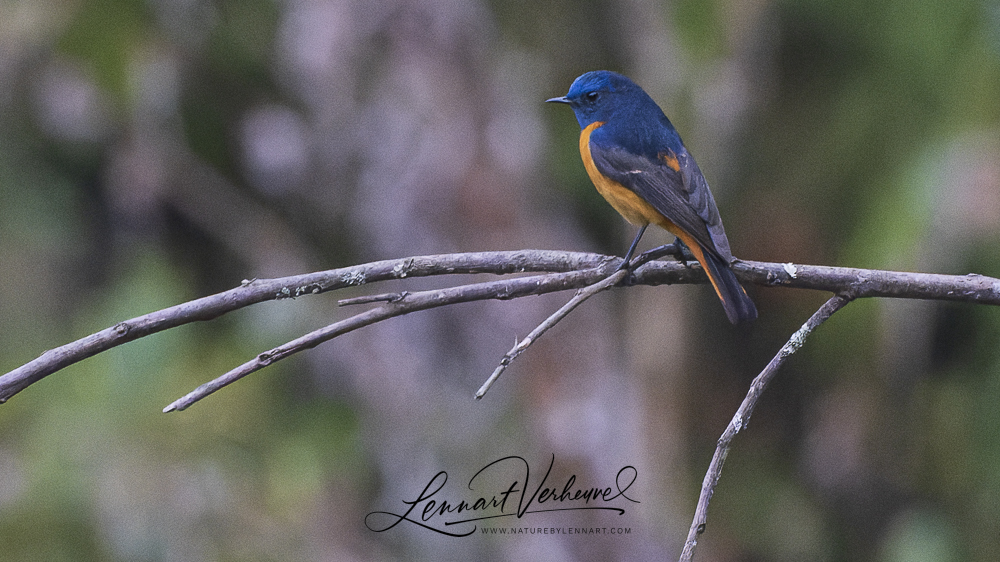
Blue-fronted Redstart
It turned out to be very common on the Lama side, but that appeared to be different on the Bompu side. We stood waiting for a while, while playing some sound every once in a while. Two Bugun Liocichlas actually reacted to that, but they didn’t seem to get any closer. A club of Rusty-fronted Barwings passed by – apparently usually a favorite species for the Liocichla to get along with – but not this time.
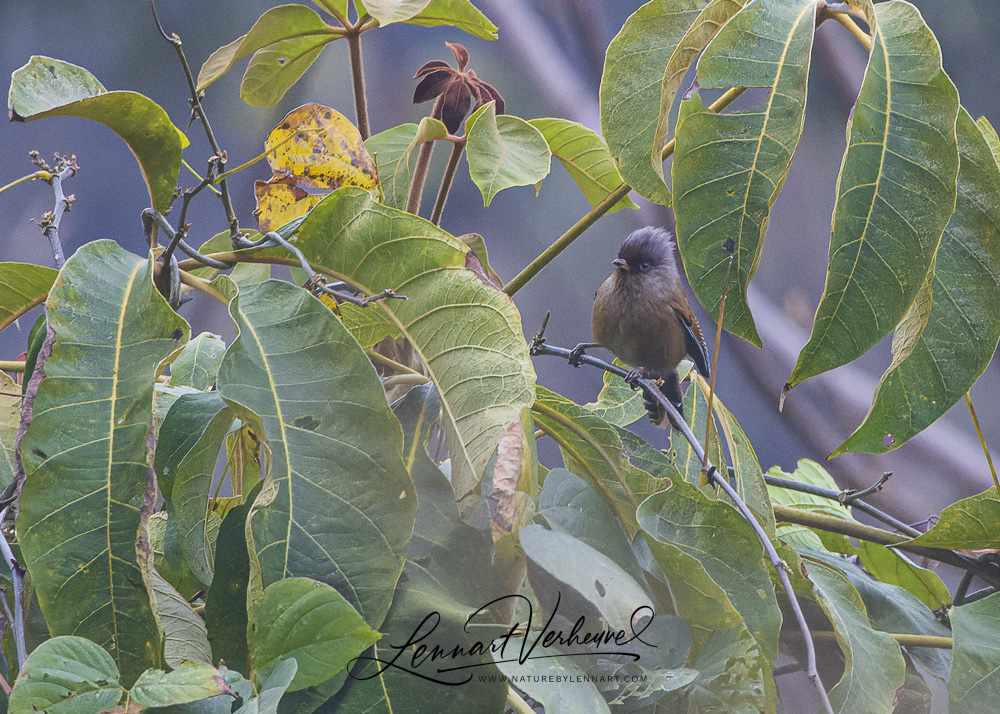
Rusty-fronted Barwing
Time was ticking and at a certain point I walked back to the road to do some more birding from there. Then suddenly a whole gang of laughingthrushes came flying across the path to disappear into the undergrowth on the other side. Laughingthrushes have the annoying habit to be very noisy, but at the same time never showing themselves well. I frantically peered into the bushes to recognize something. After all, basically every bird was still new. Then I suddenly saw a green bird with a gray cheek and strikingly red wing tips: the Bugun Liochichla!! Immediately after I saw it he was gone again and the next bird I saw was a Chestnut-crowned Laughingthrush which most of the group turned out to be. The Bugun was too fast for a photo, but I was very glad I saw it! I just couldn’t explain that gray cheek, but no other species has those red wing tips. Maybe I hadn’t seen something right because it went so fast. Back at the camp, however, I saw on the pictures hanging on the wall that the female of the Bugun has a gray cheek. Apparently I had only seen pictures of the male. That reassured me. How lucky to see Eaglenest’s best species in the few hours I had!
Then we walked along the road where we could get a good look at the tiny Himalayan Striped Squirrel.
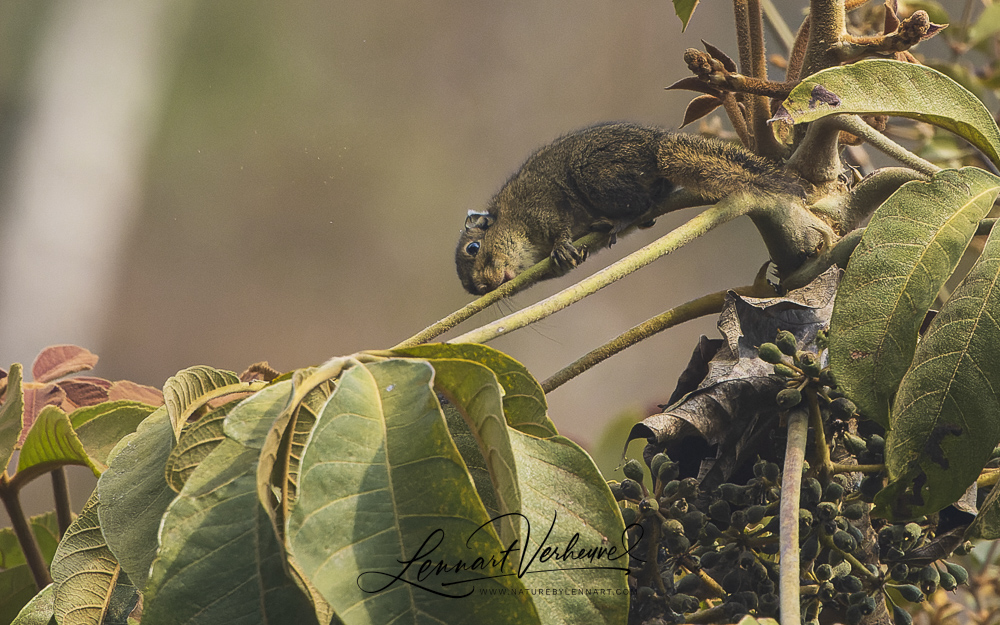
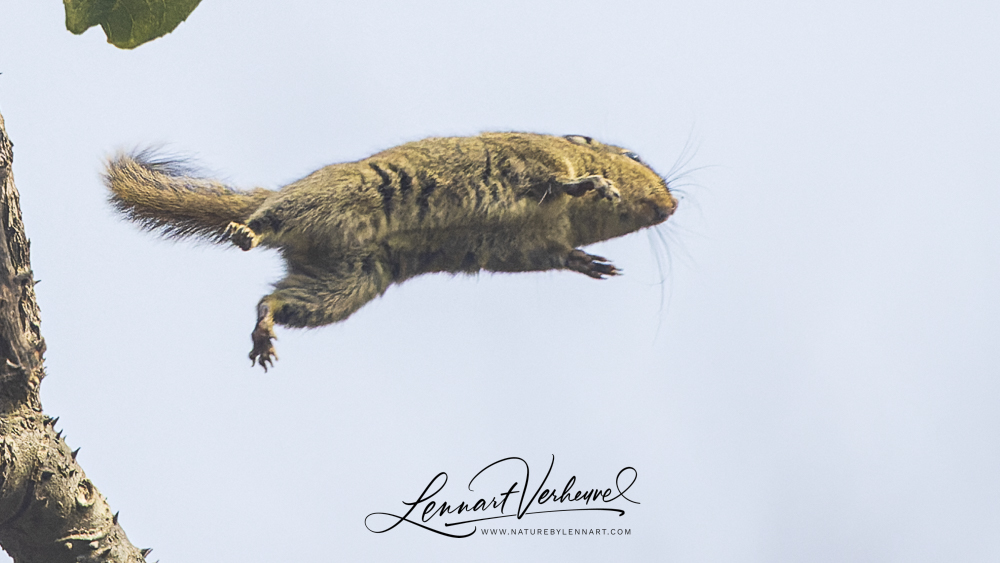
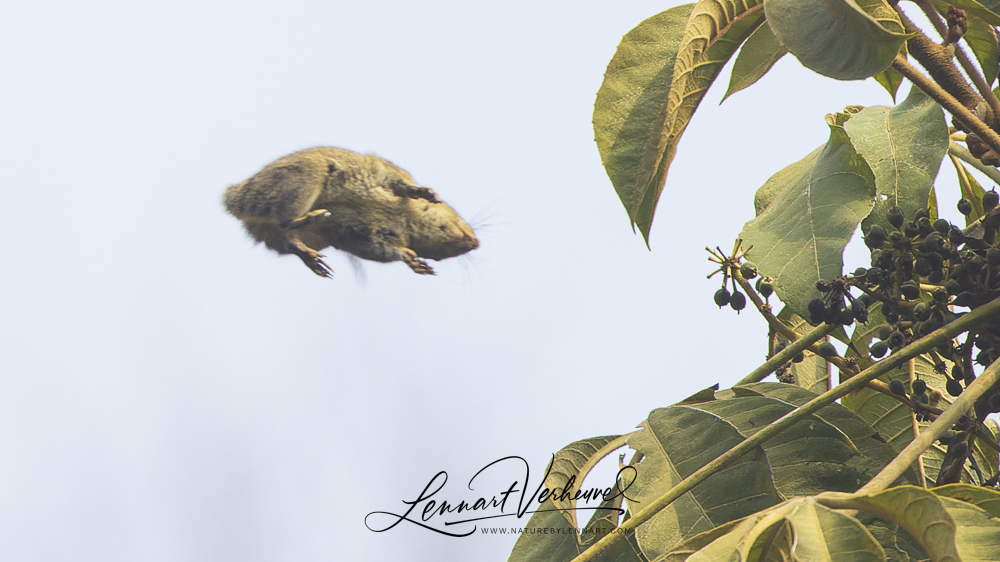
Himalayan Striped Squirrel
Then it was time for breakfast and our transfer to Bompu Camp where we would spend the rest of our stay. We still had five nights ahead in which we would try to see the Asiatic Golden Cat and of course we also would do our best during the day.
In Bompu Camp we slept in tents. The accommodation was a bit primitive, but the food was excellent and powering various devices went better than expected. Also we were welcomed by Olive-backed pipits.
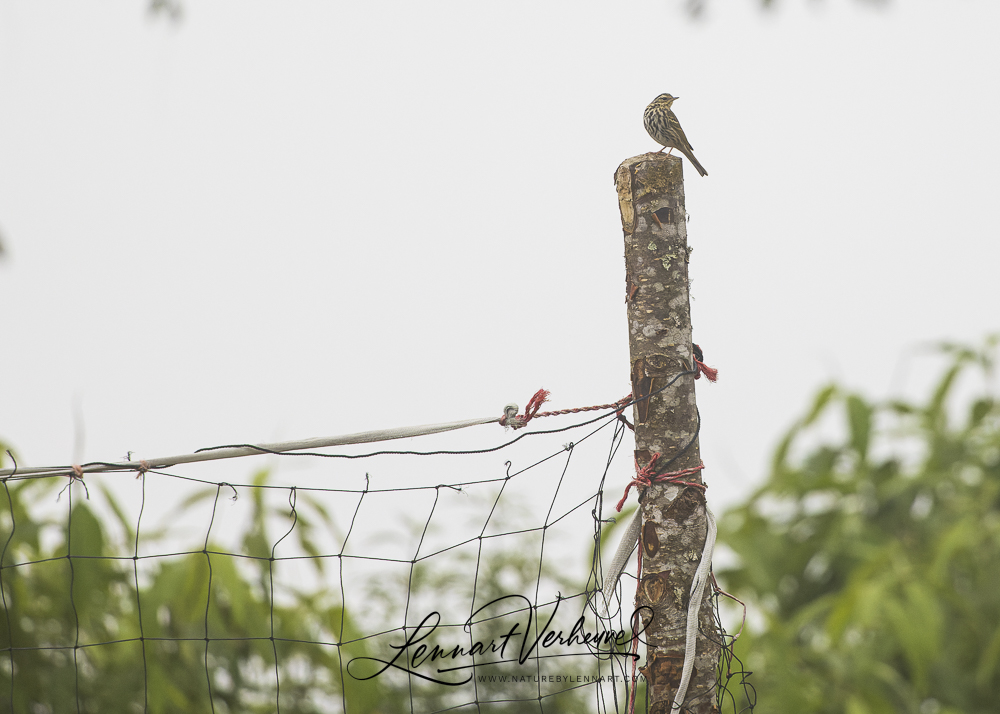
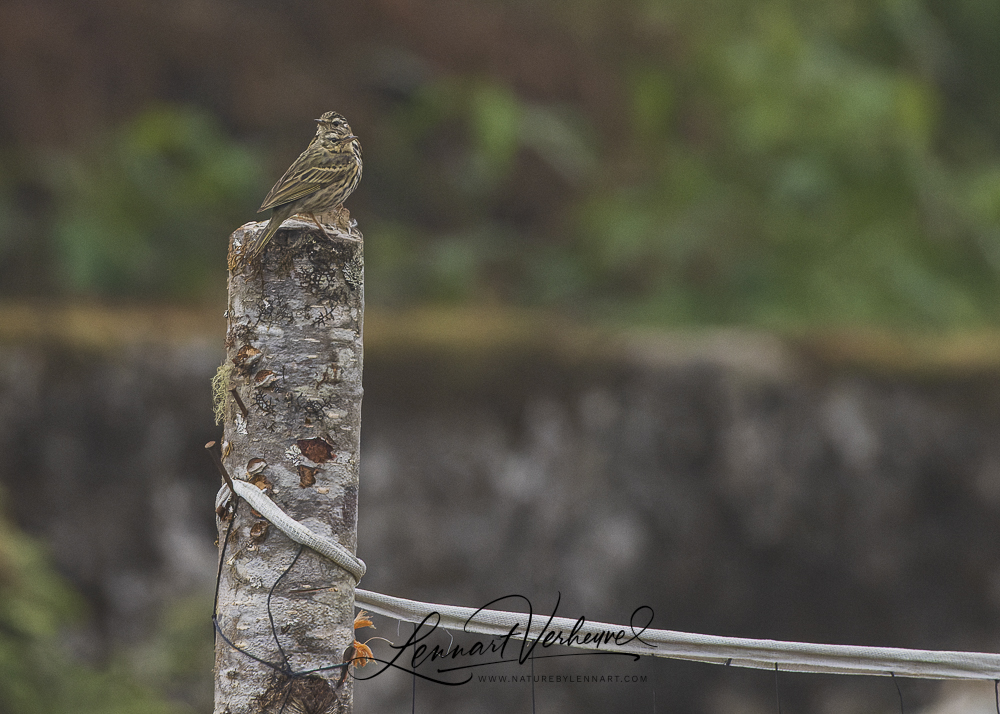
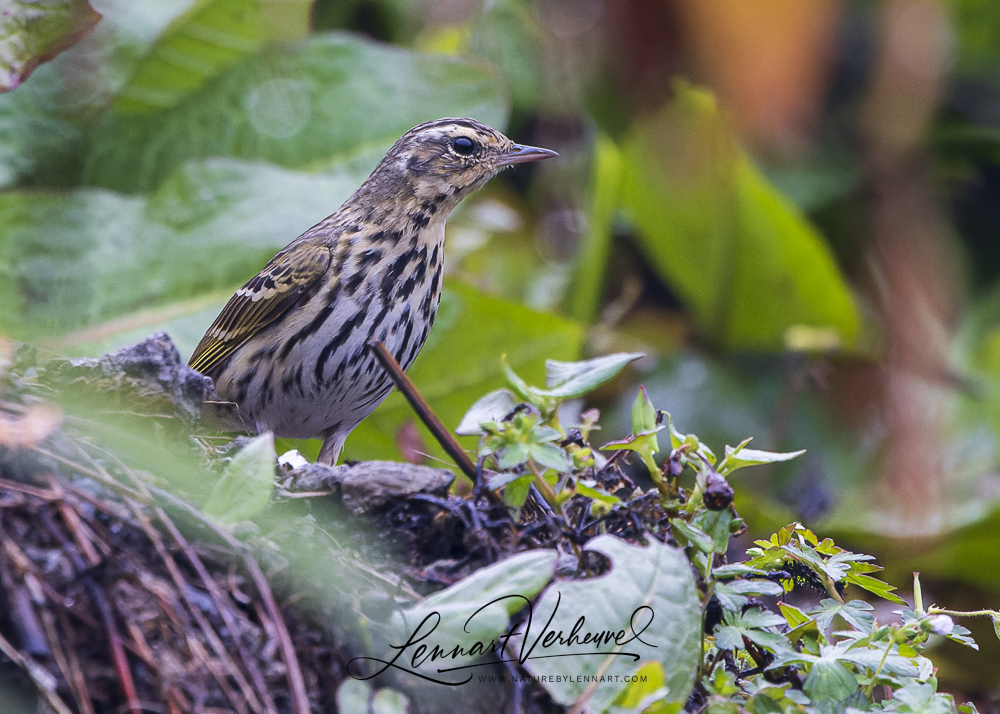
Olive-backed pipit
As far as birds are concerned, I really only had one major goal: to see the Blyths Tragopan. This bird is one of four species of tragopan and can be seen in this part of India. We had already bumped into a female during our transfer to Bompu Camp, but really only the male counts.
Seeing tragopans is similar to seeing pittas or antpittas. These are also birds that are very good at sitting quietly in a thicket, making them difficult to notice. Once found however they are very striking with beautiful colours. However, getting tragopans to come to playback is a lot more difficult than with some pittas which means you need to find them ‘the old fashioned way’. The advantage is that these chickens are fairly large, so that they are clearly audible when they move through the bushes. I met some Indian birders in Bompu Camp who tried to see this species for five days every morning and late afternoon, but with no luck.
However, I was more lucky! Around four o’clock in the afternoon I went for a walk from the camp. Suddenly I heard rustling in the bushes above me. I immediately stopped walking and soon I saw a big bird walking through the bushes. The size looked good! I tried to approach the bird as quietly as possible and then the bird ran straight down the road in front of me and into the bushes!
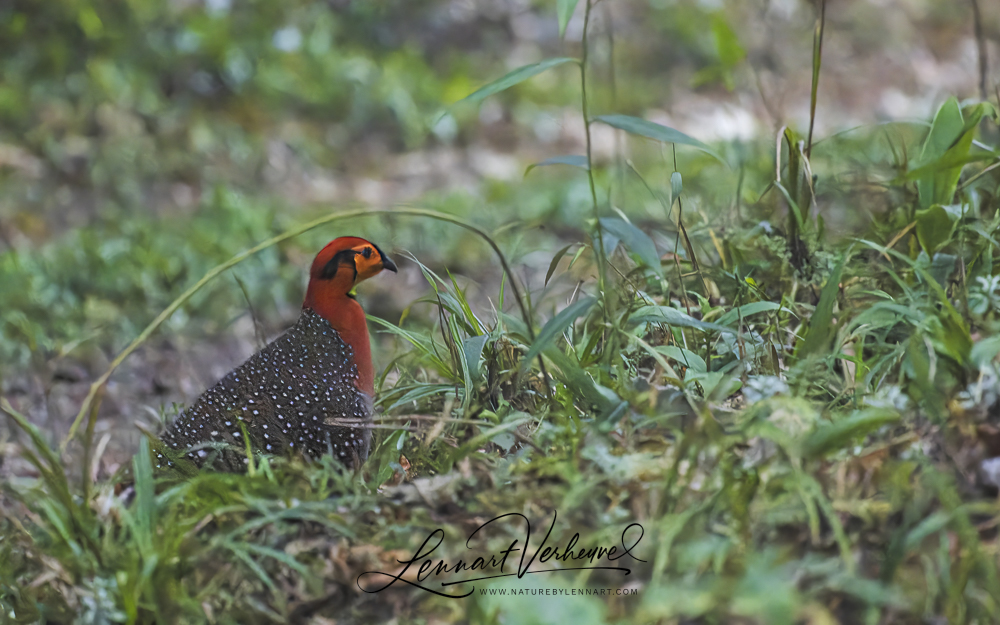
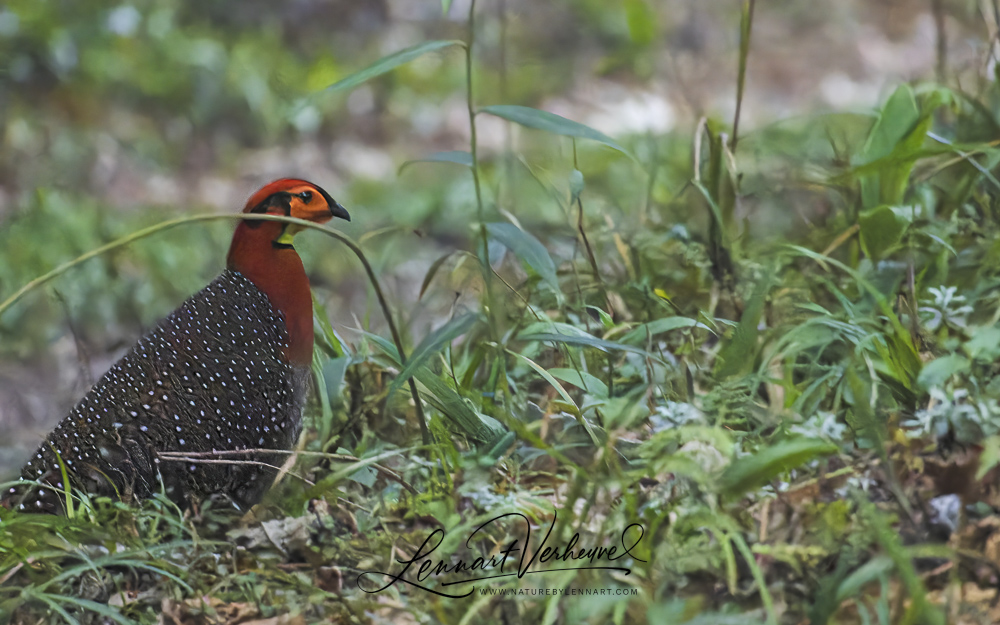
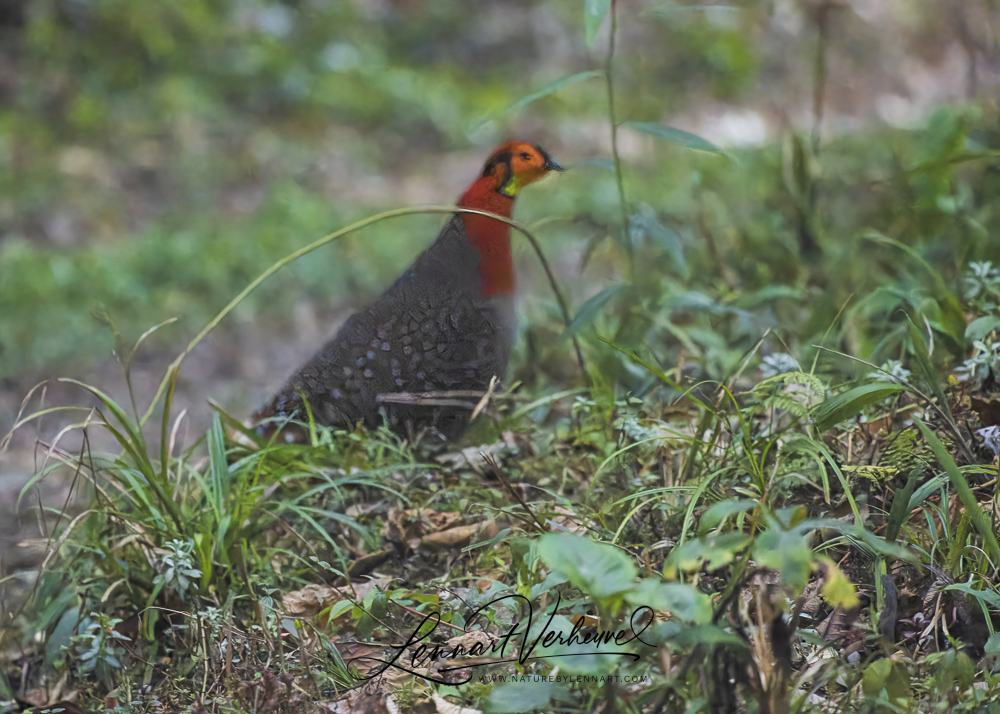
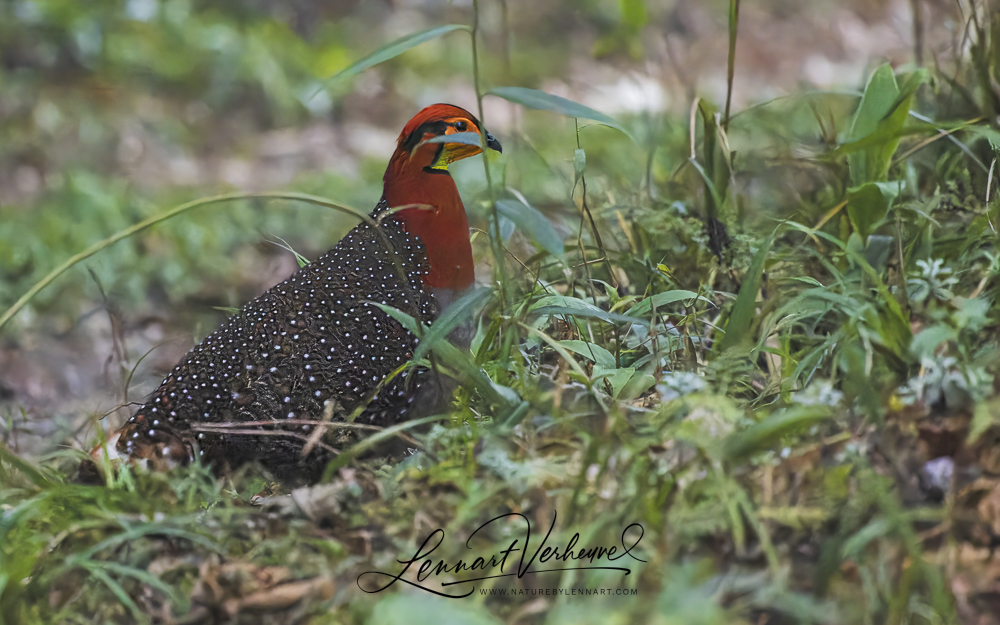
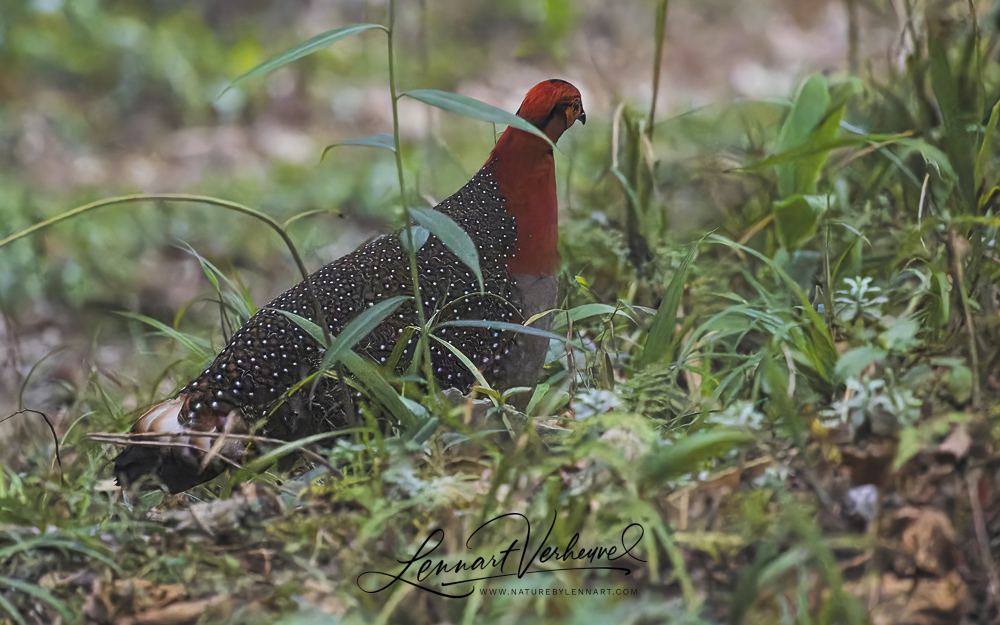
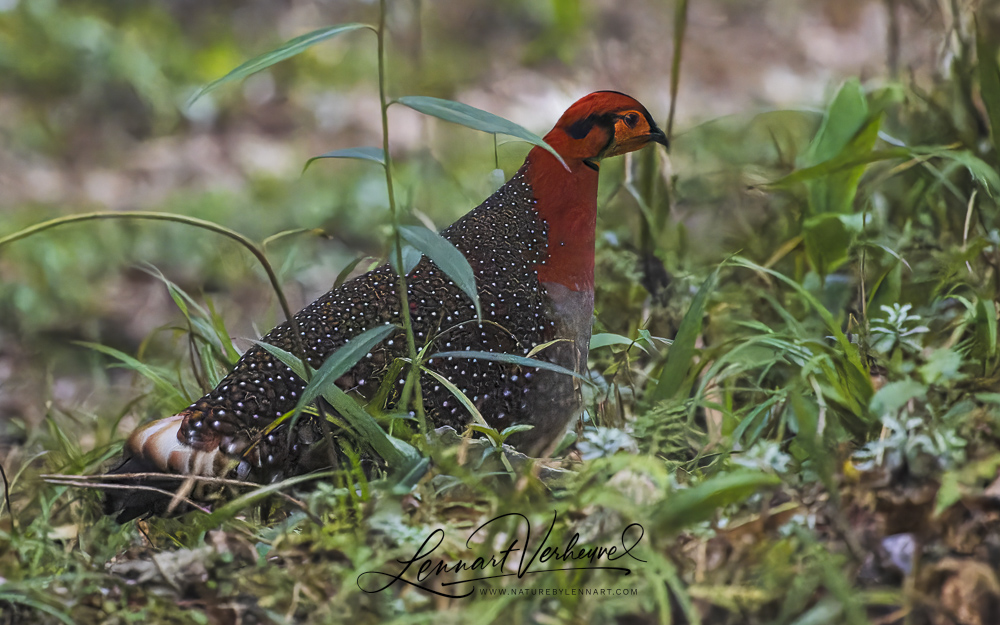
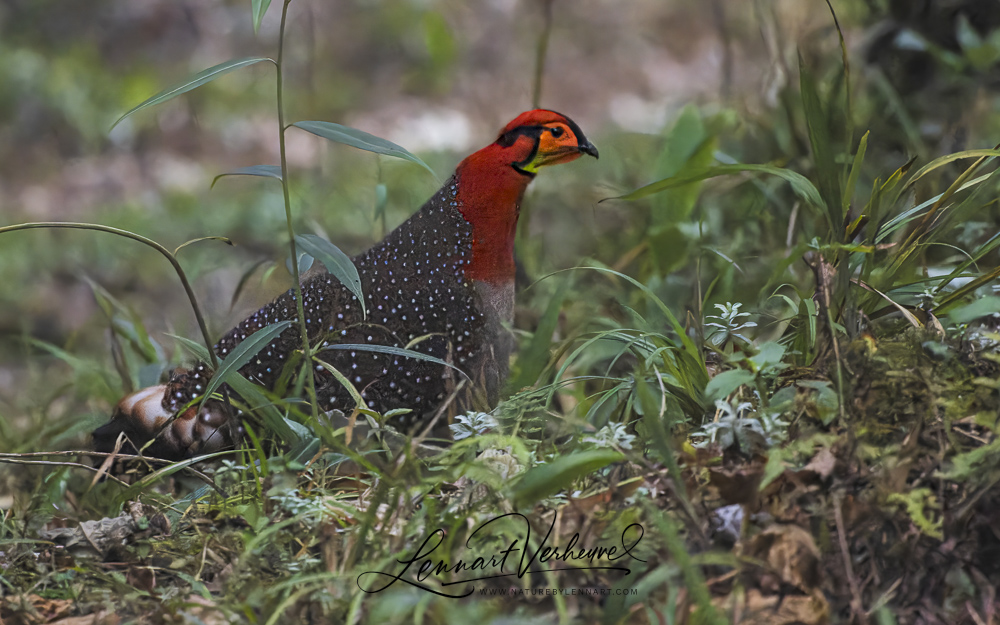
Blyth’s Tragopan
It was indeed a stunning male Blyth’s Tragopan! I was not fully prepared for this fast action, so my photos were not all sharp. I wanted a second look. Carefully I peered over the edge of the slope and soon I suddenly saw a little red head glistening in the green! The bird also realized that I was there and moved as quietly and inconspicuously as possible, but I could see the bird really well.
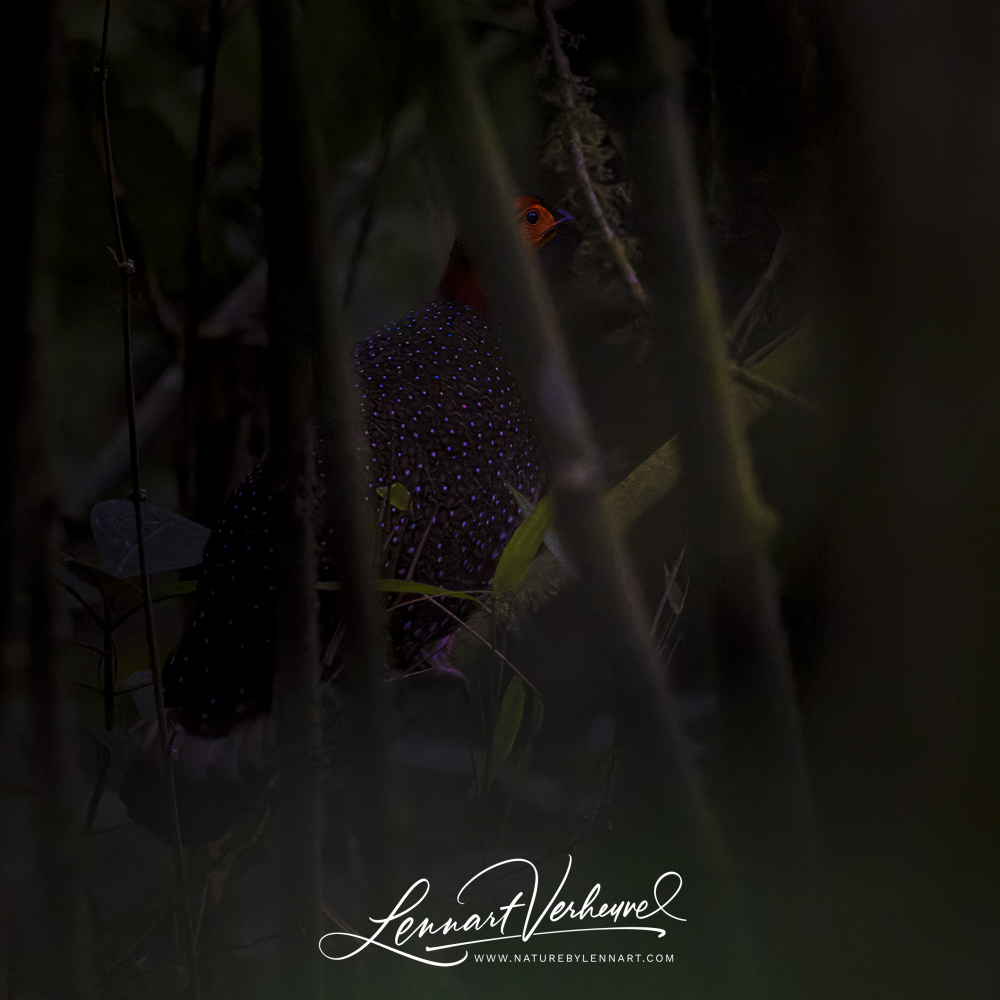
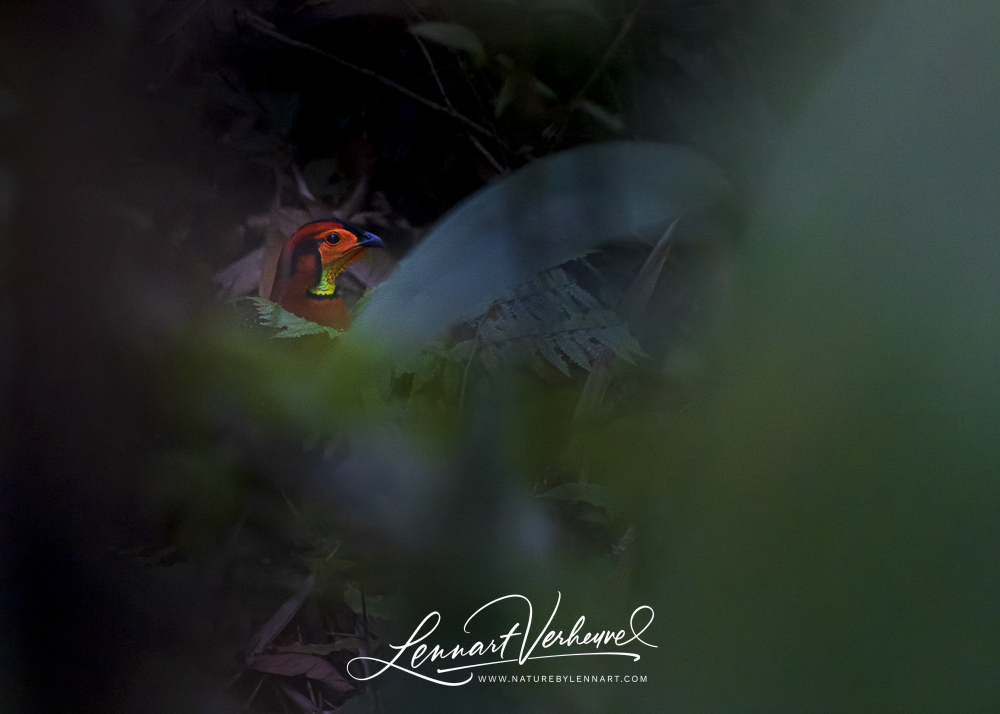
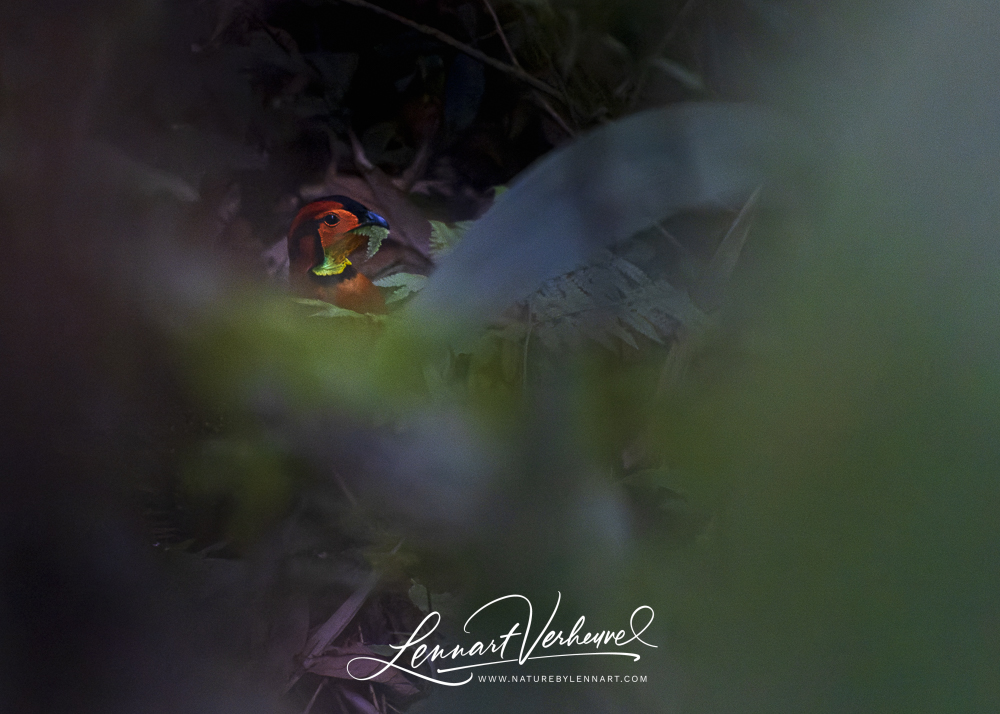
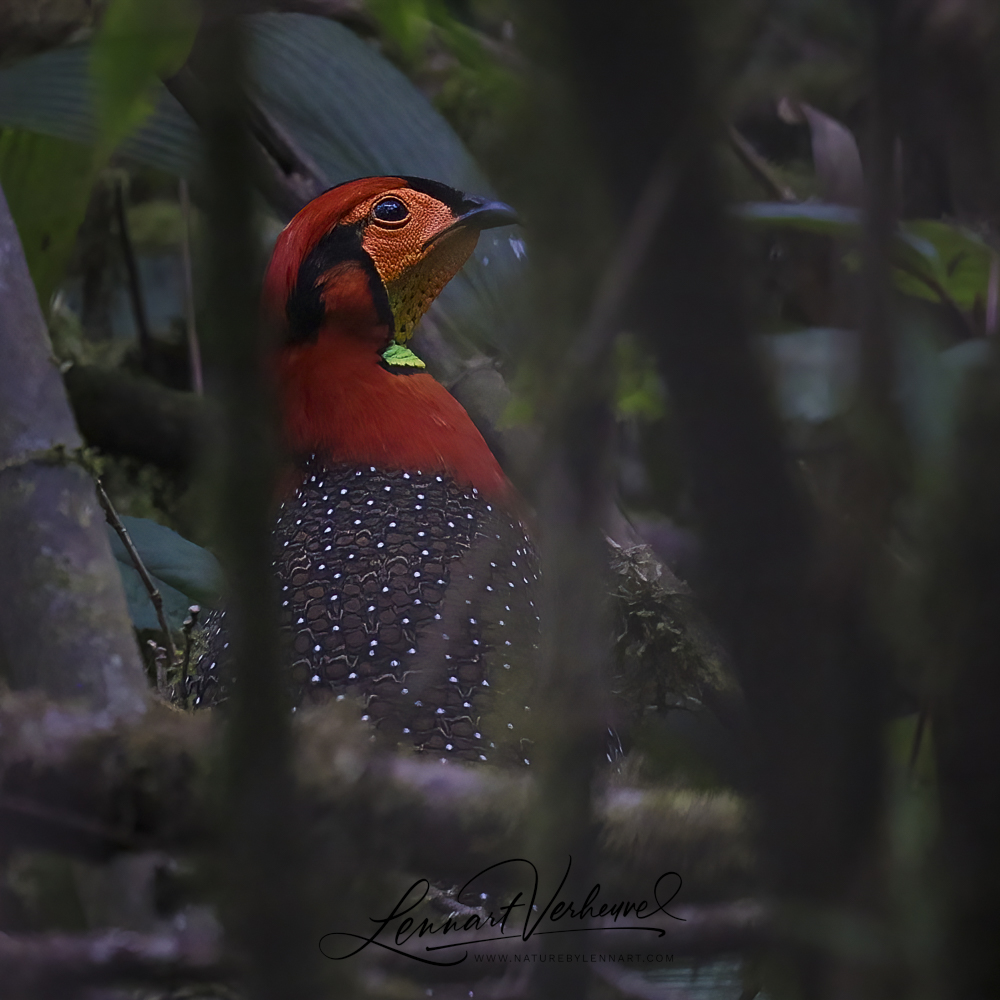

Blyth’s Tragopan
It even managed to get some video!
I was very happy that this Blyths Tragopan turned out so well.
On the subject of poultry I was also happy to see the Kalij Pheasant. Also a species that was not very easy to see, but certainly easier than the tragopan.
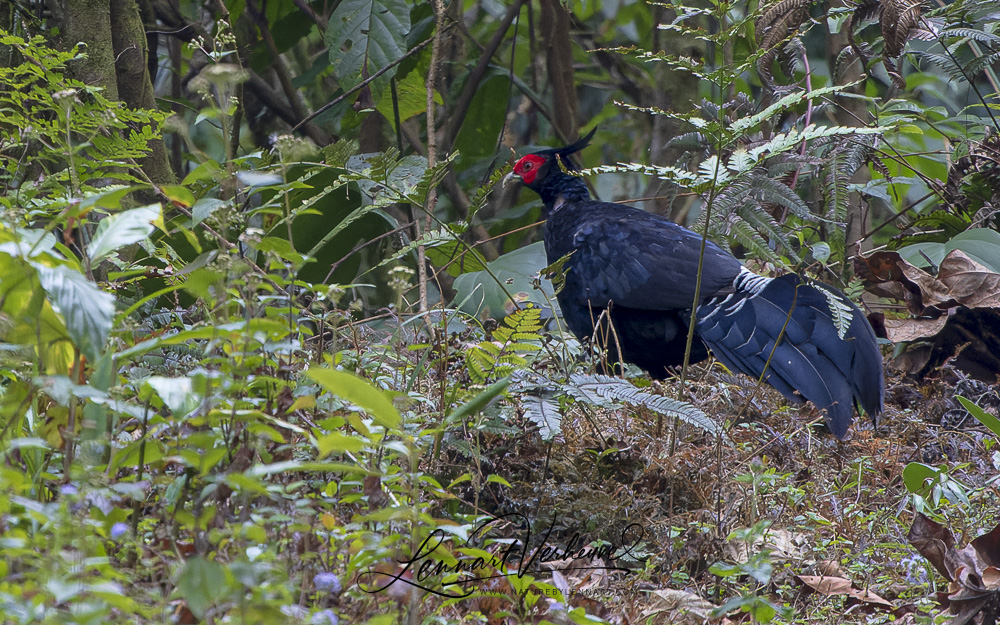
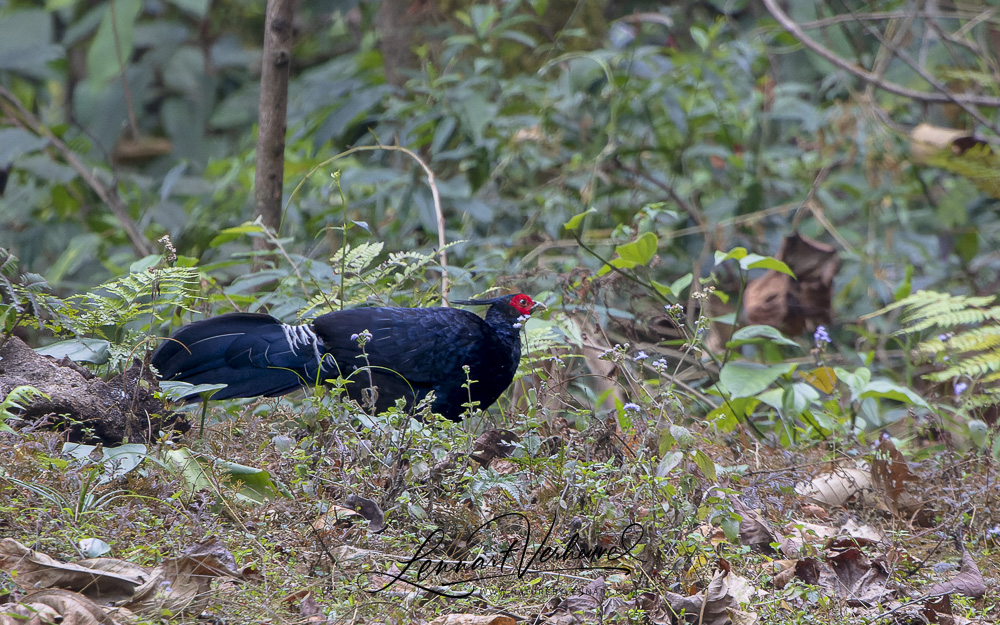
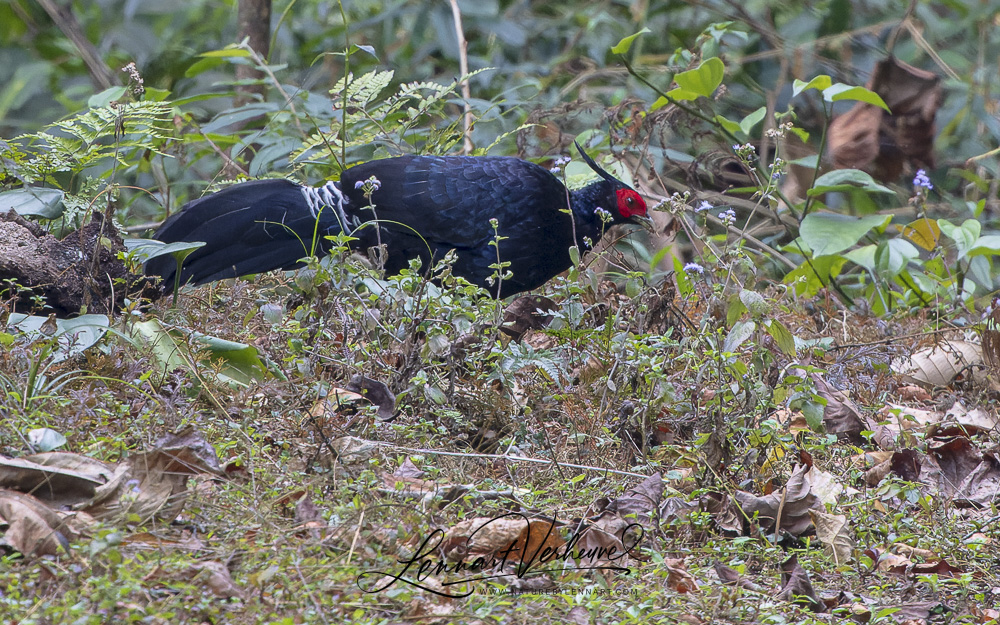
Kalij Pheasant
The forests were also full of songbirds that pass by in a so-called ‘feeding flock’. This is a group consisting of several species of birds that move through the forest together. Near Bompu Camp there was a large group consisting out of about forty or fifty birds. When it passed I just didn’t know where to look! Invariably, the Yellow-bellied Fantail was one of the first birds I saw when a feeding flock approached. The beautiful Fulvettas were also often present. In the gallery I have put pictures of some birds I regularly encountered.
A songbird that I want to highlight is the Beautiful Nuthatch. As far as I’m concerned this a bird that lives up to its name because what a beautiful nuthatch this is! This is certainly not a bird that can be found in every flock so I was very happy when I finally saw one.
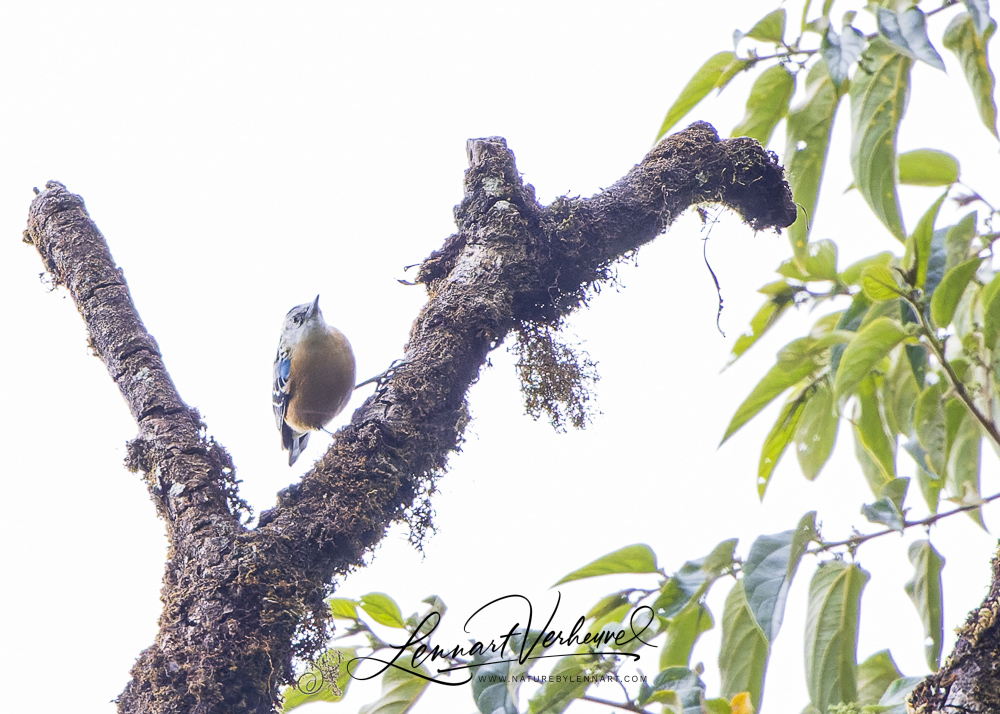
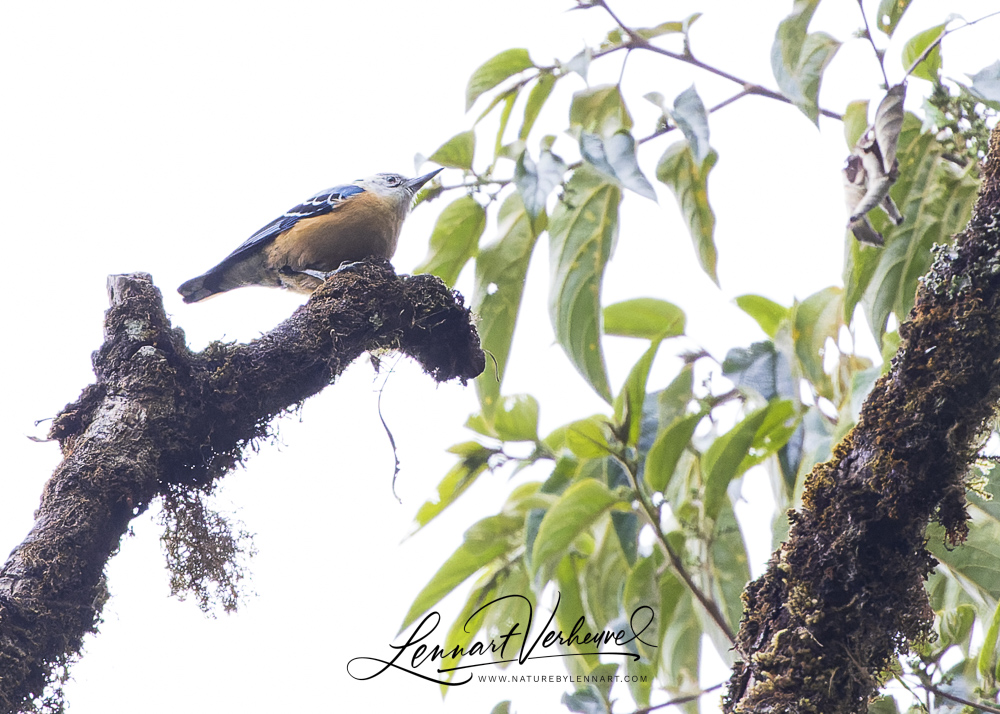
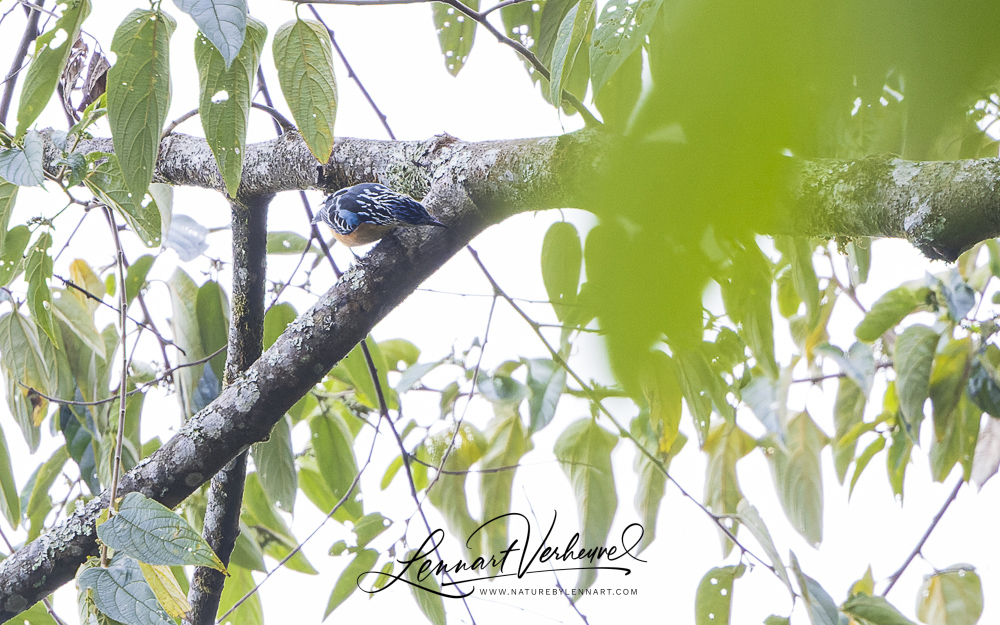
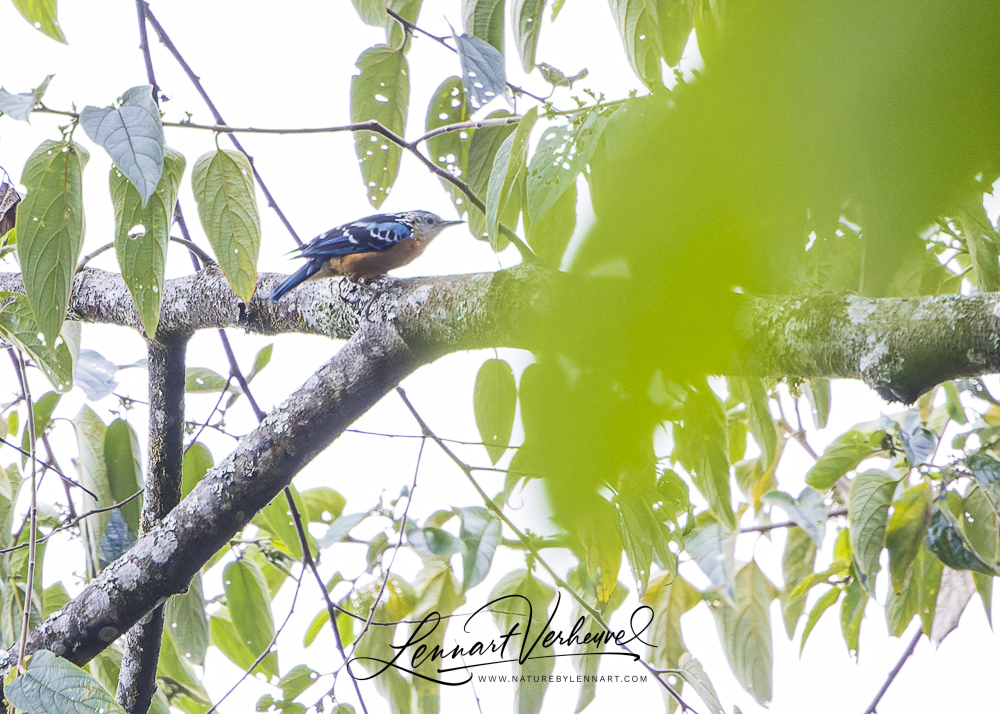
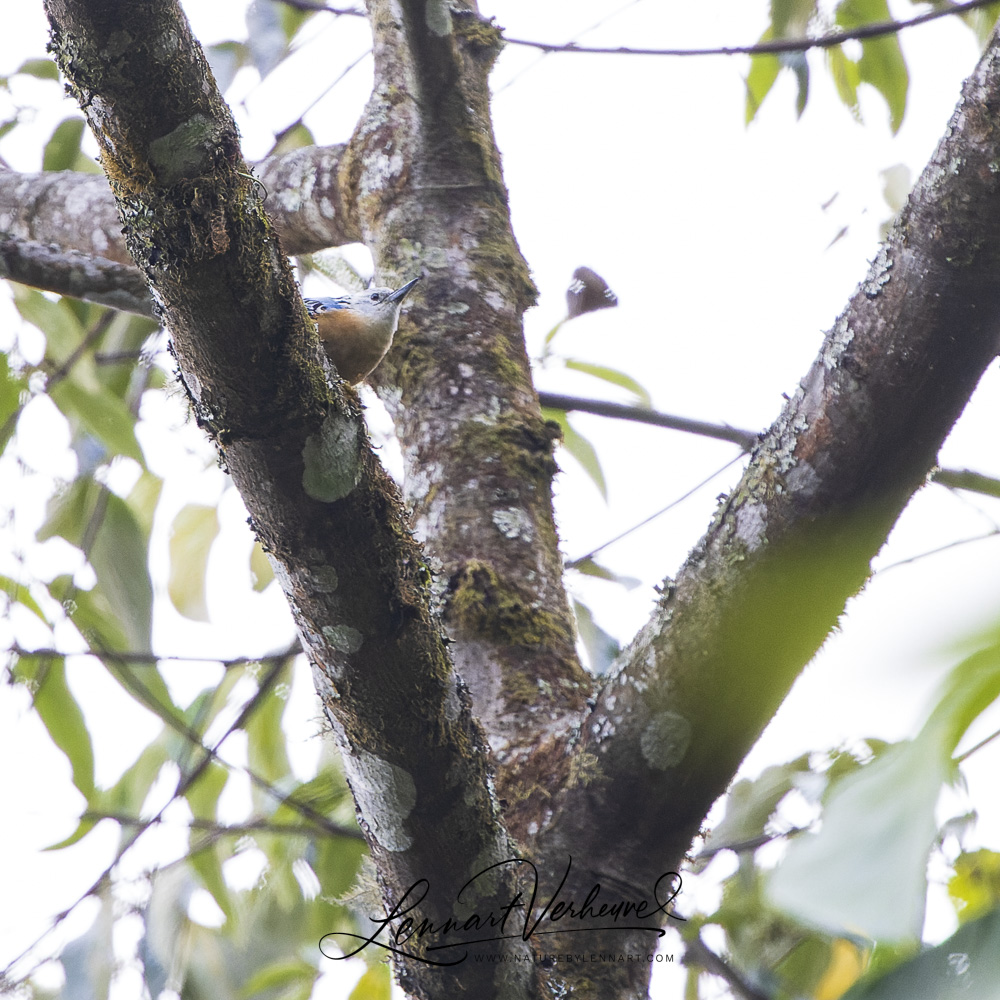
Beautiful Nuthatch
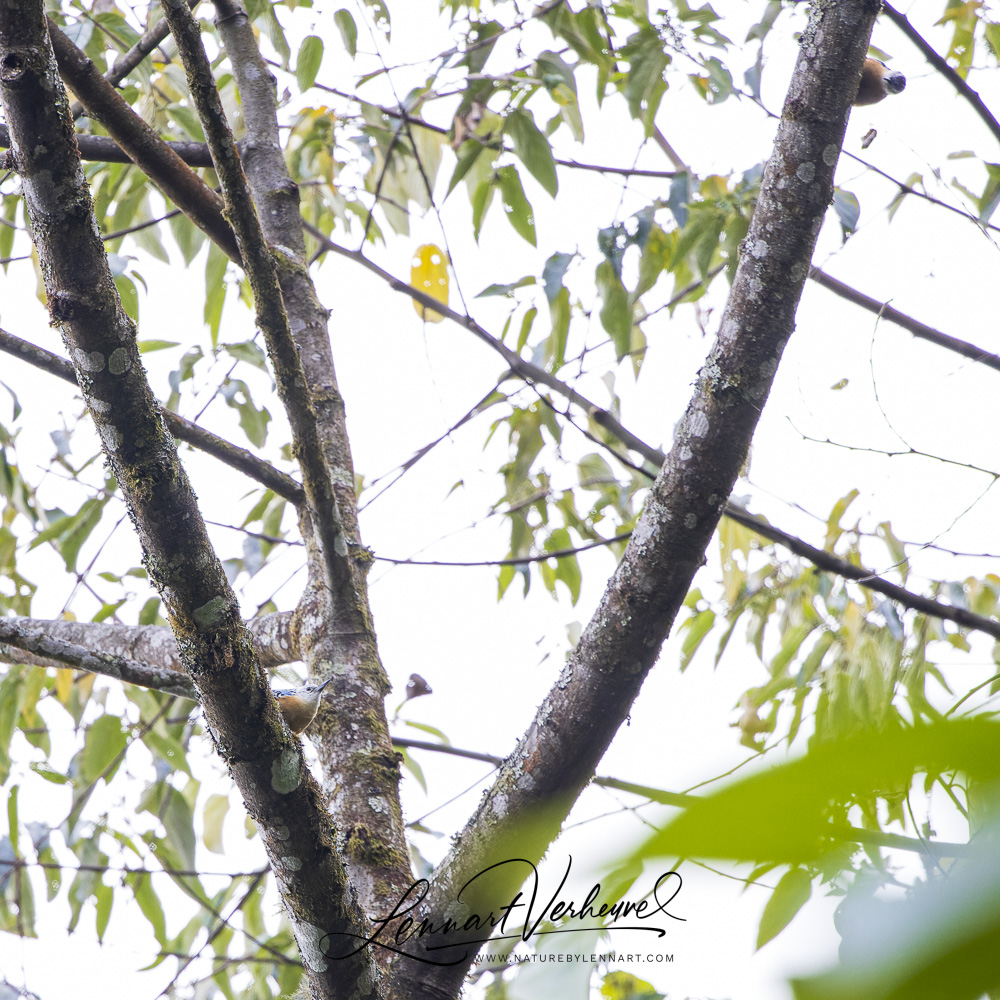
Beautiful Nuthatch and White-tailed Nuthatch
I also thought the Yellow-cheeked Tit was a very cool tit to see. The Sultan Tit is also a very cool tit that I saw there, but I my photo’s weren’t good of that one.
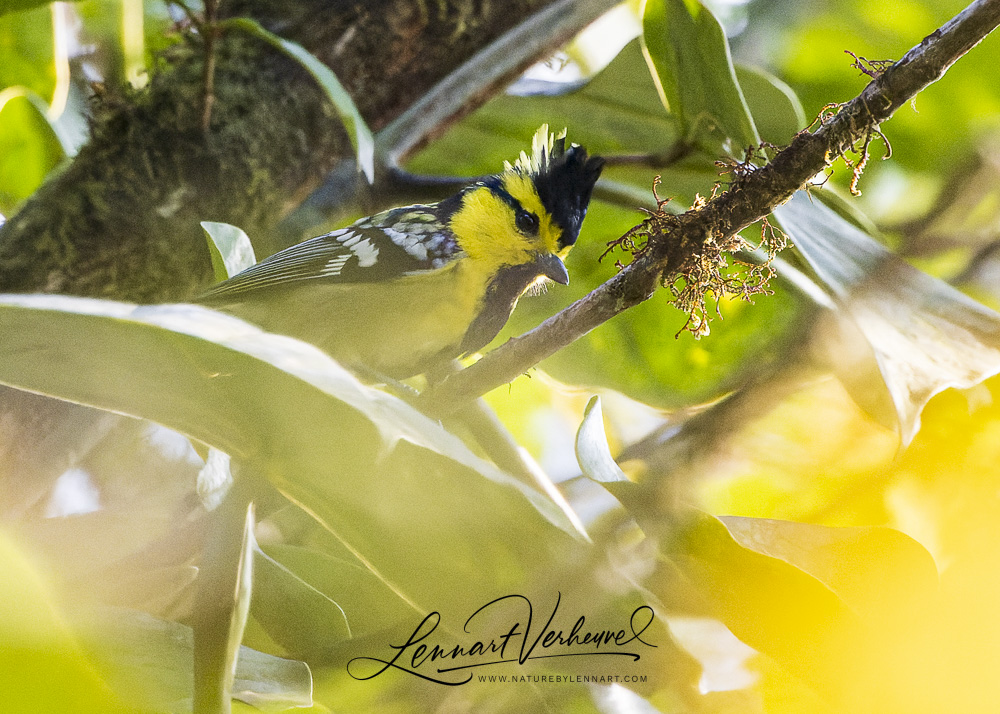
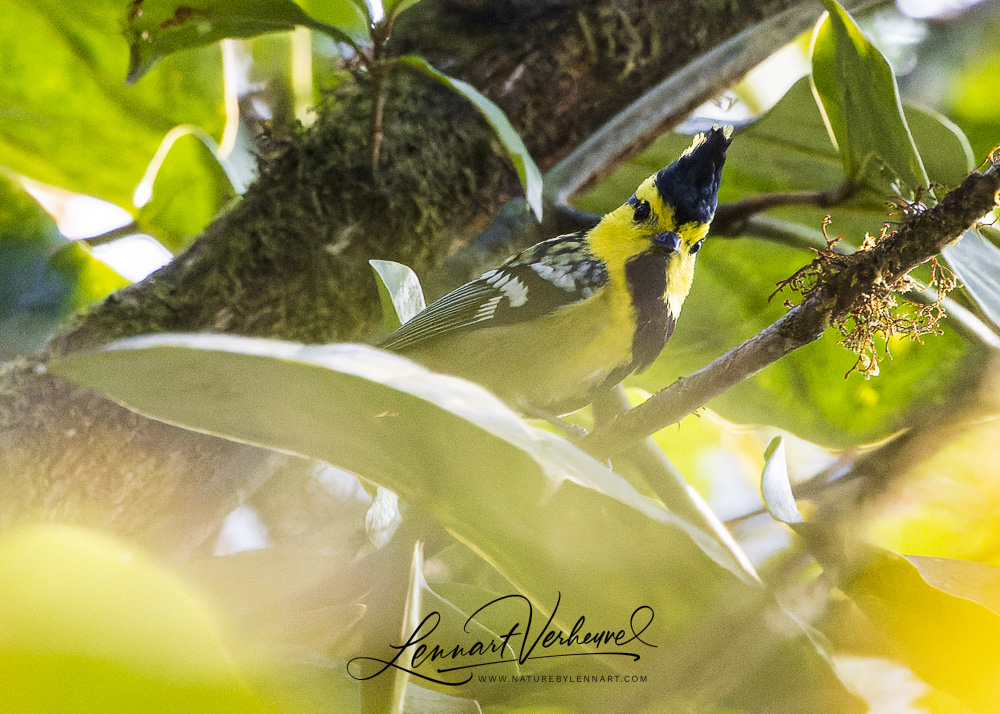
Yellow-cheeked Tit
Of course there were also the mammals during the day. For example, we enjoyed a beautiful Pallas’ Squirrel that was eating a nut on a branch across the road. The nut clearly had priority so we could get a good look at the squirrel for a while.
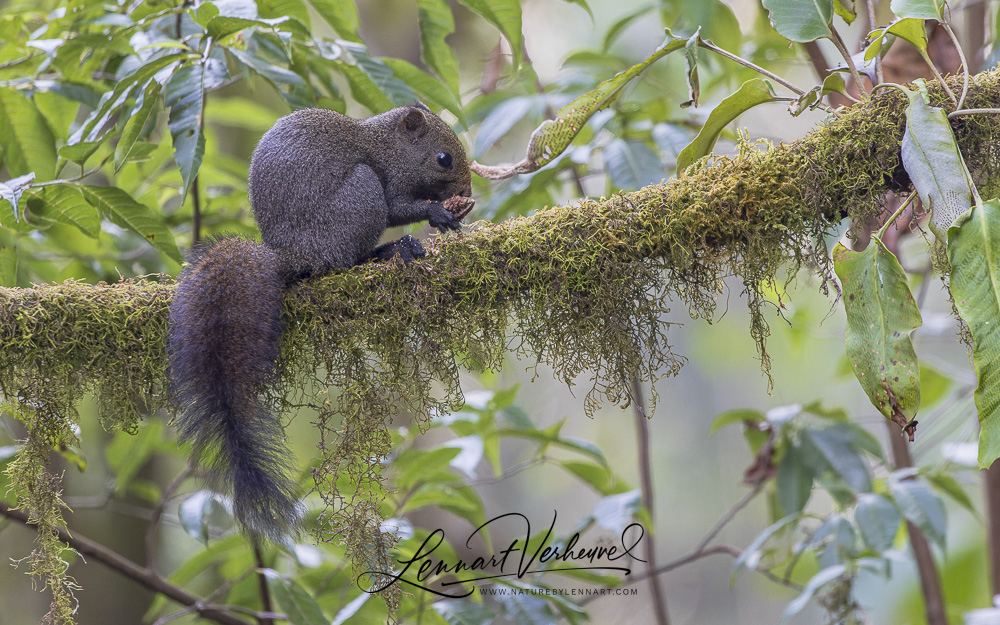
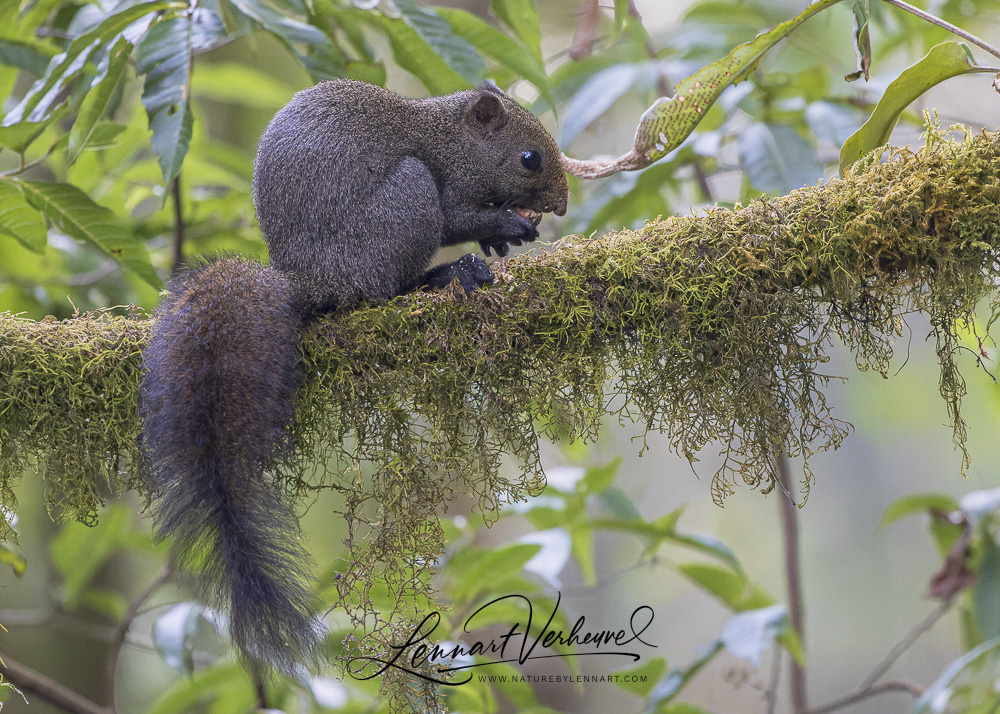
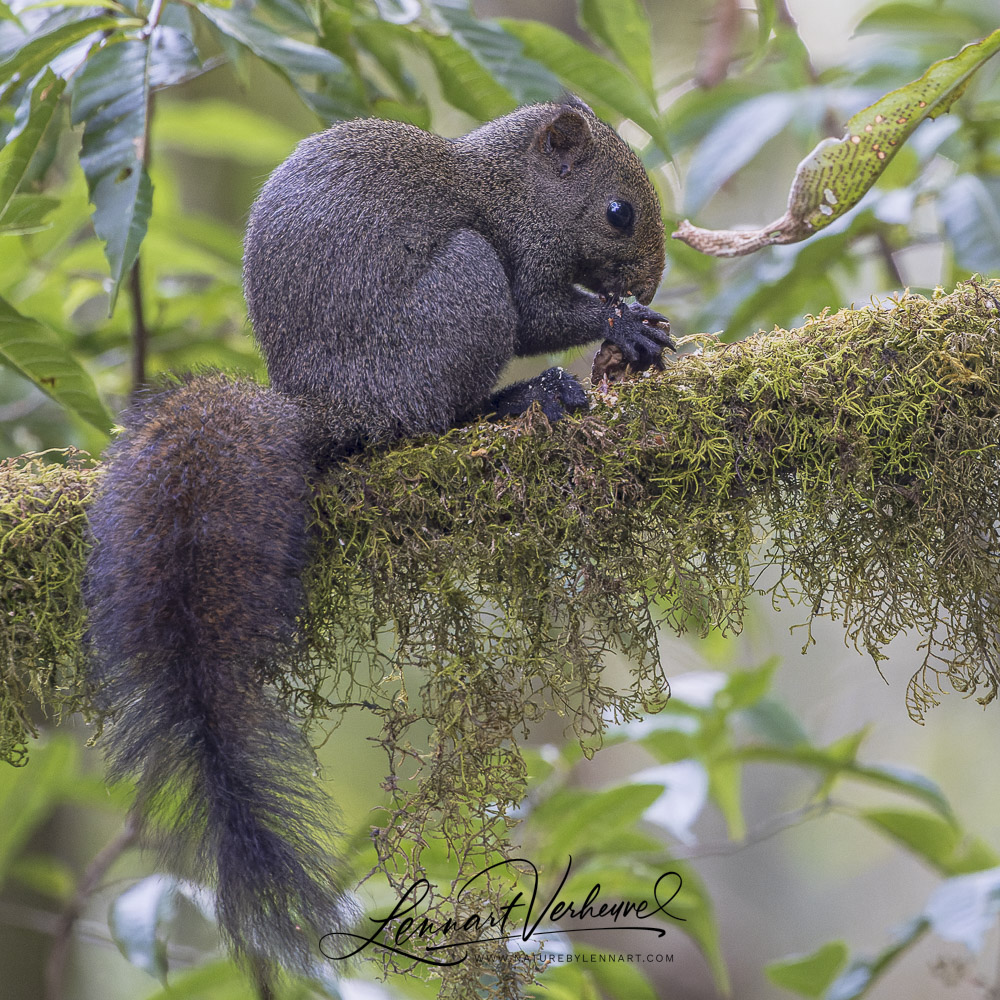
Pallas’ Squirrel
The coolest encounter during the day was seeing a Yellow-throated Marten. This beautiful marten allowed himself to be watched extensively for minutes while he was licking the sap from a tree. At first he ran off when we drove up, but luckily he came back and we were able to follow him for a long time as he ran from one hole in the tree to the next. That resulted in a lot of photos and also a video!
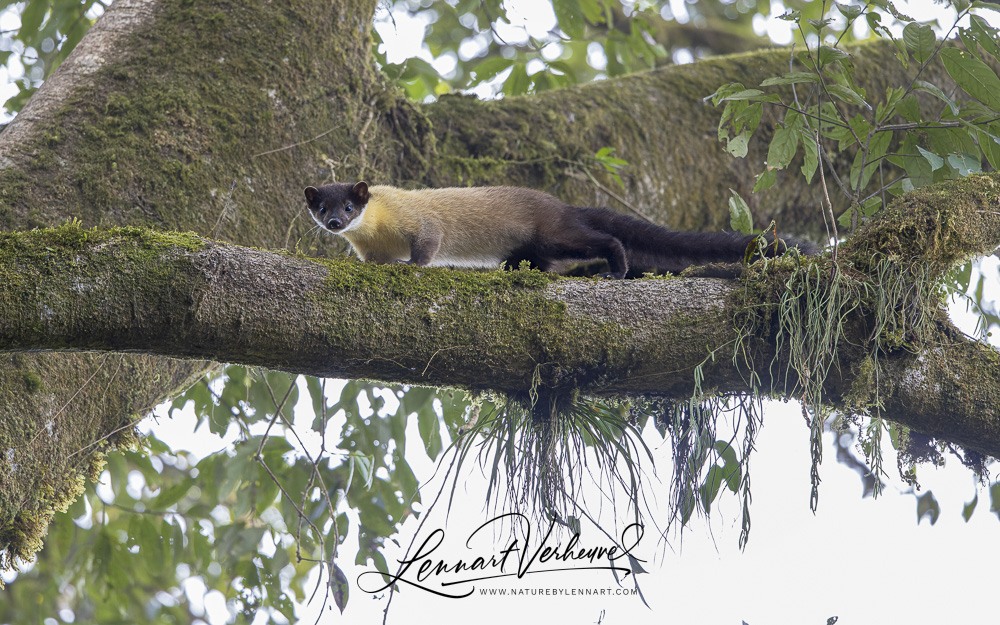
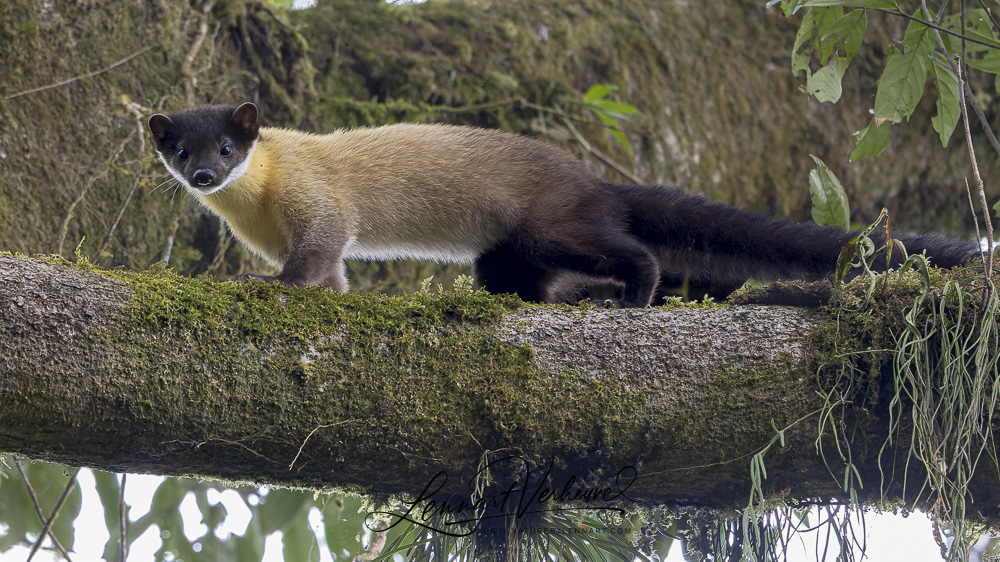
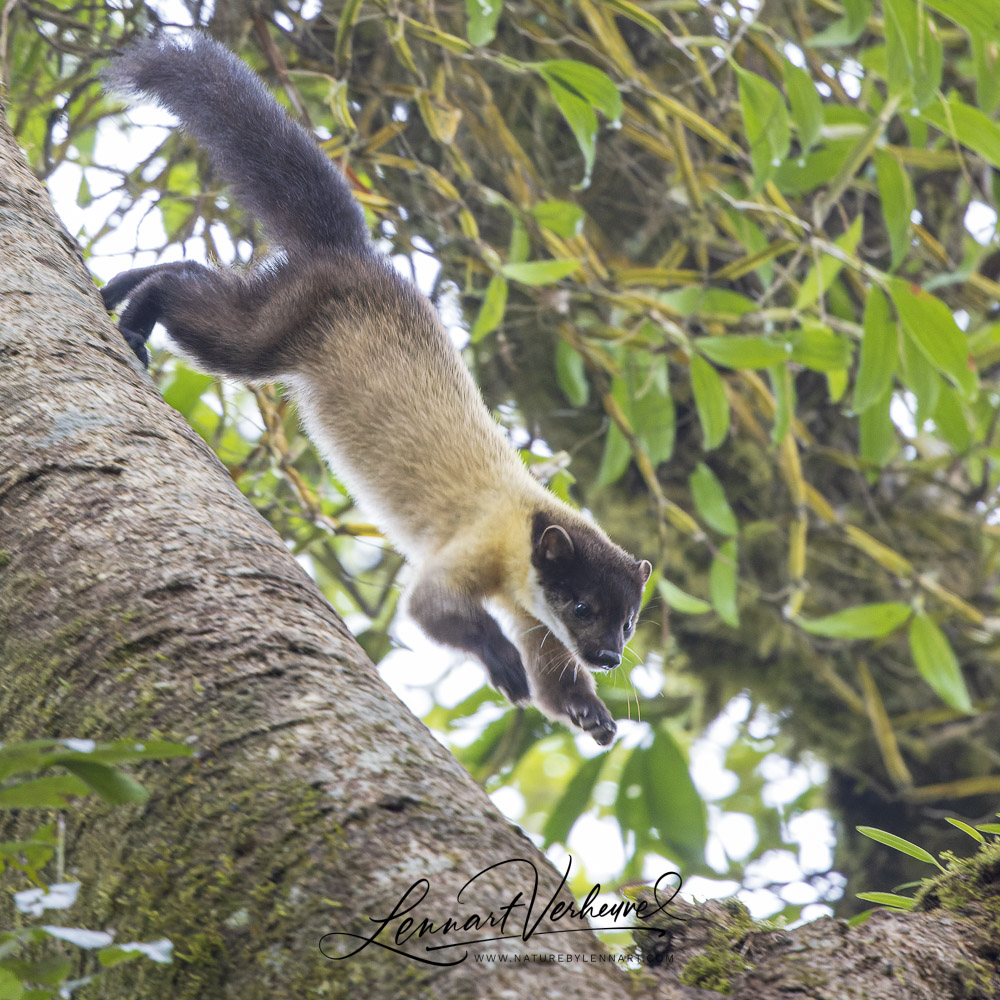
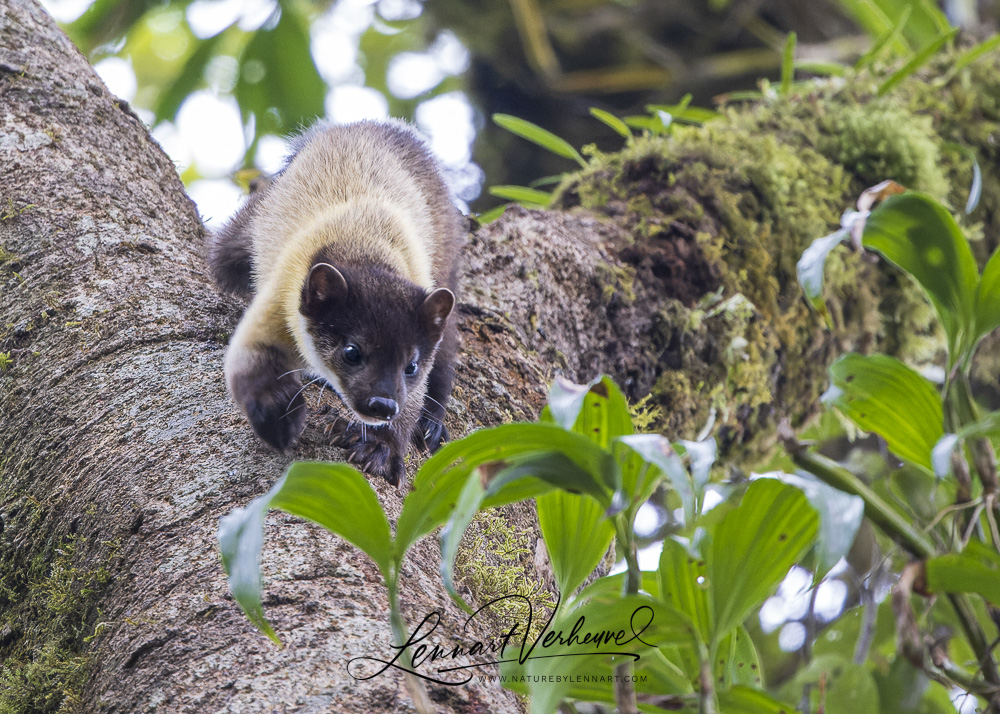
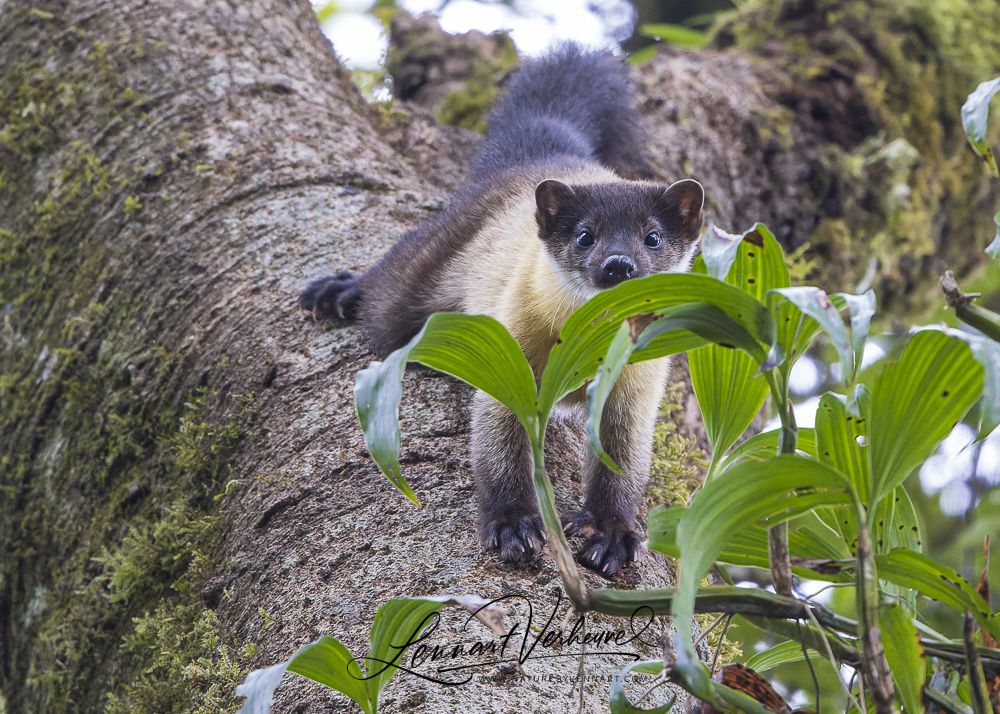
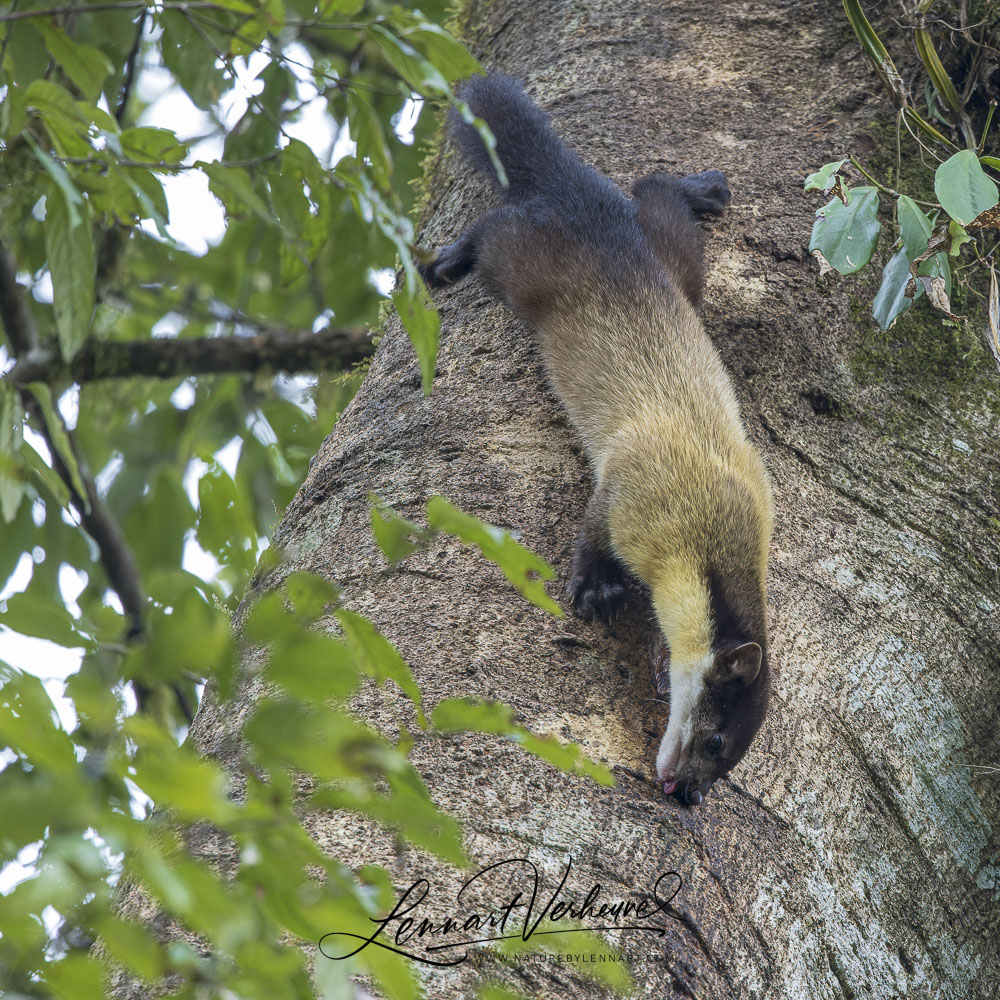
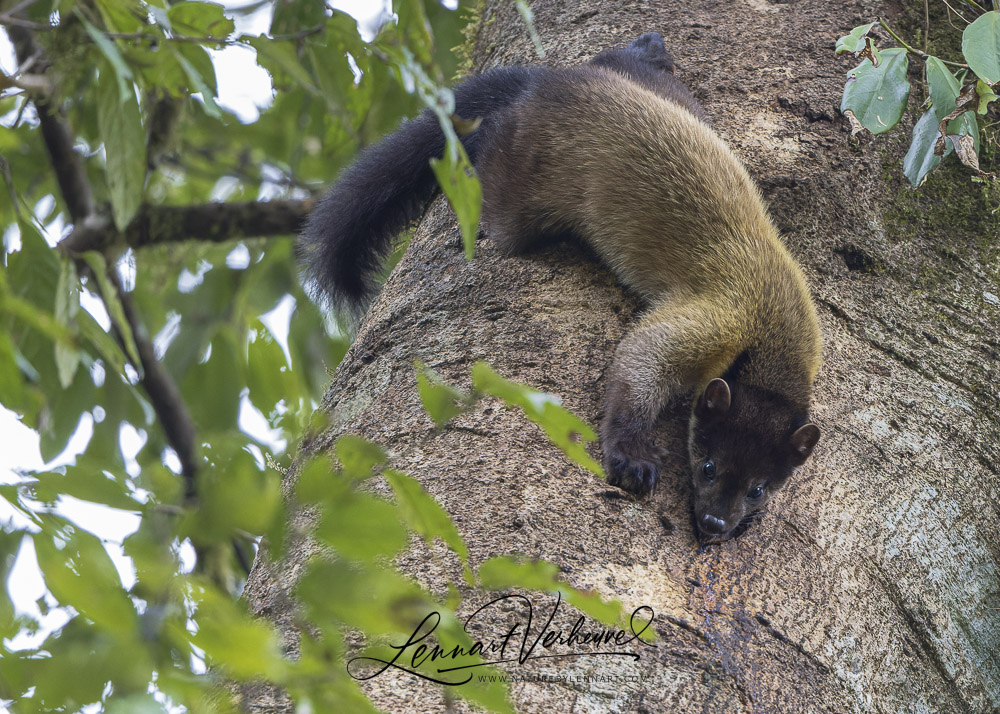
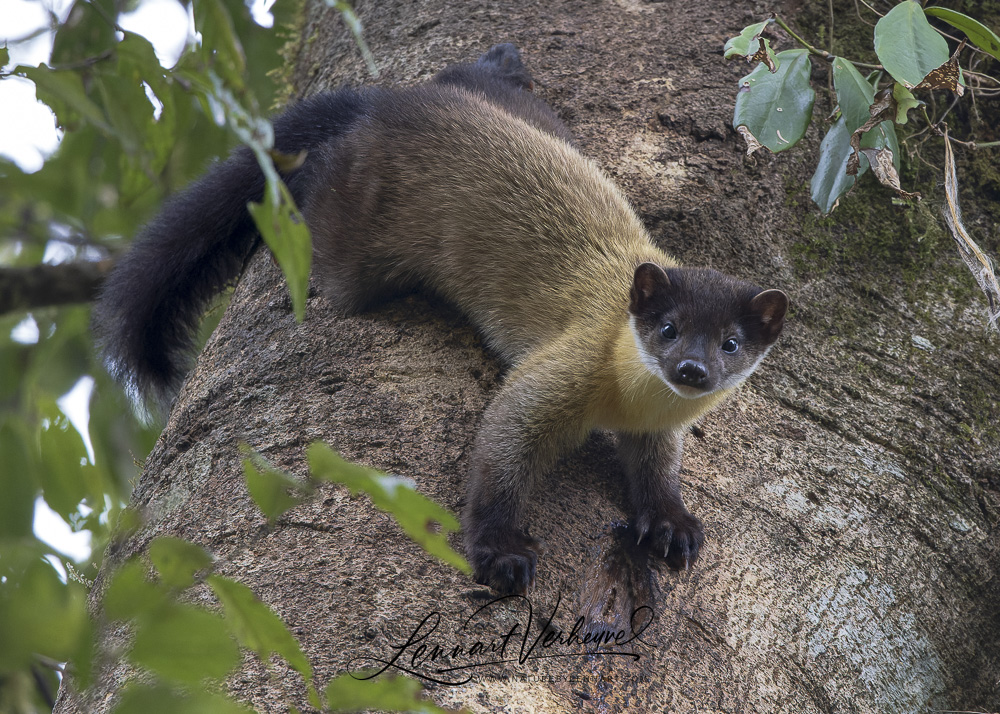
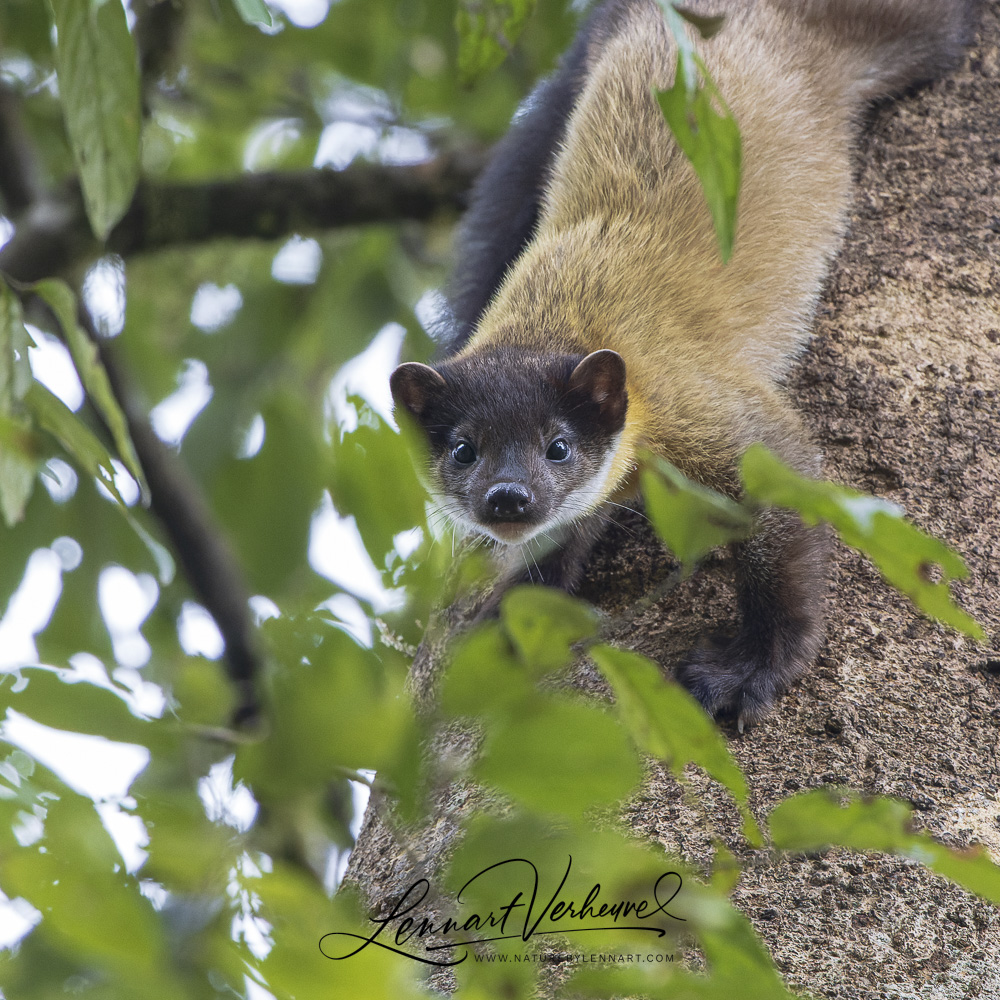
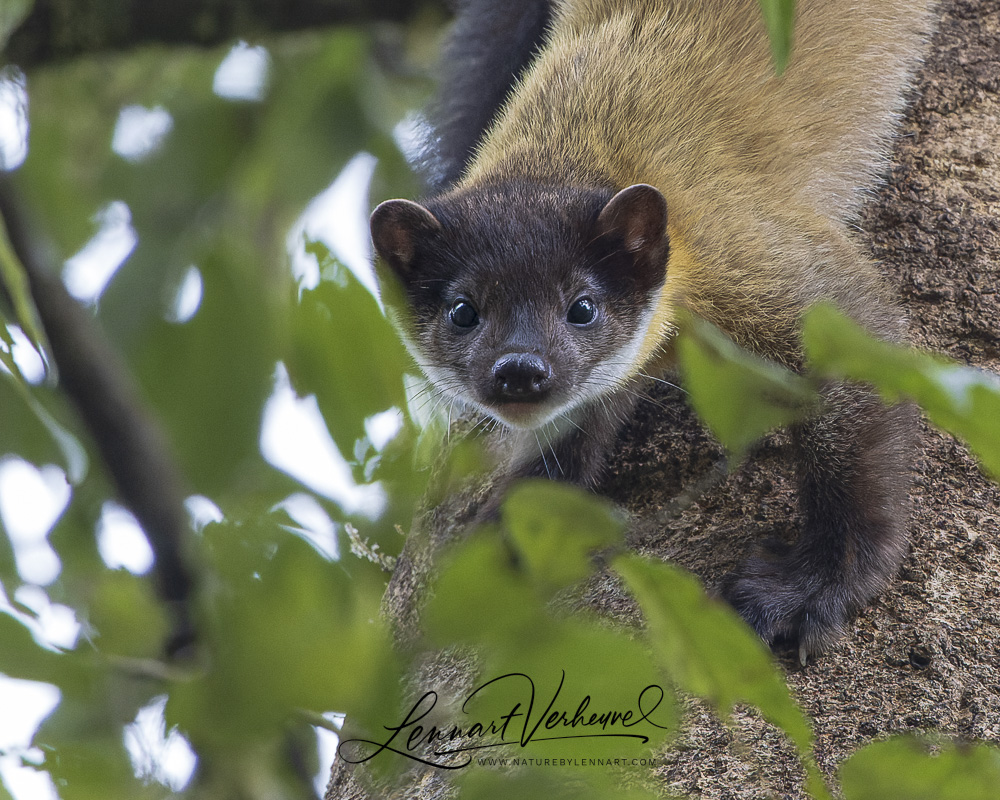
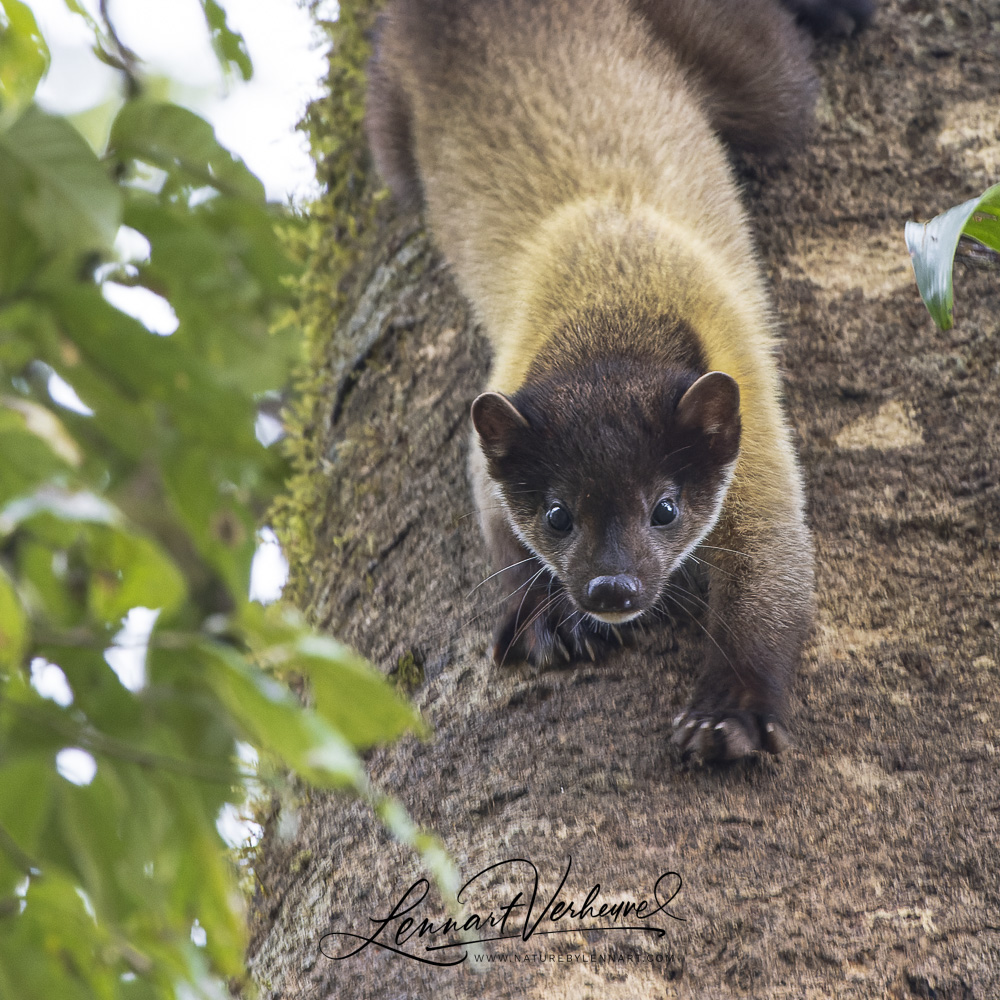
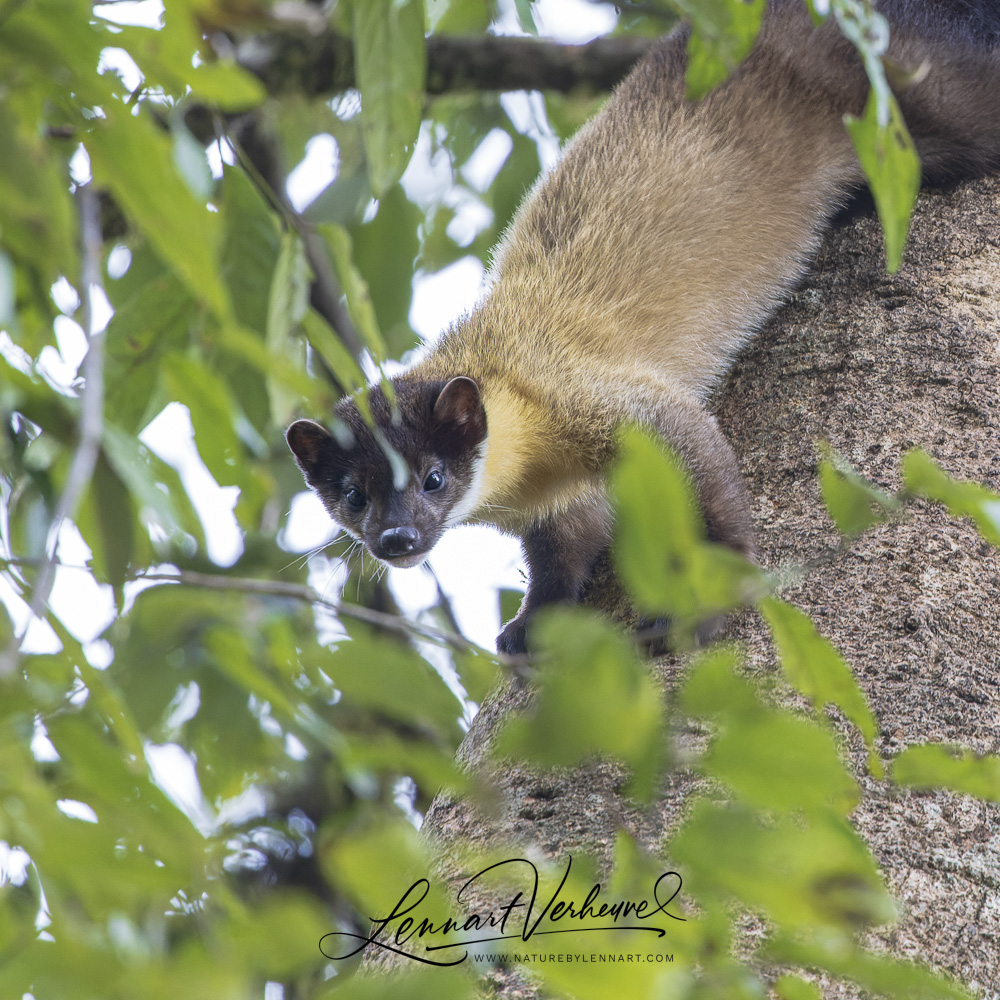
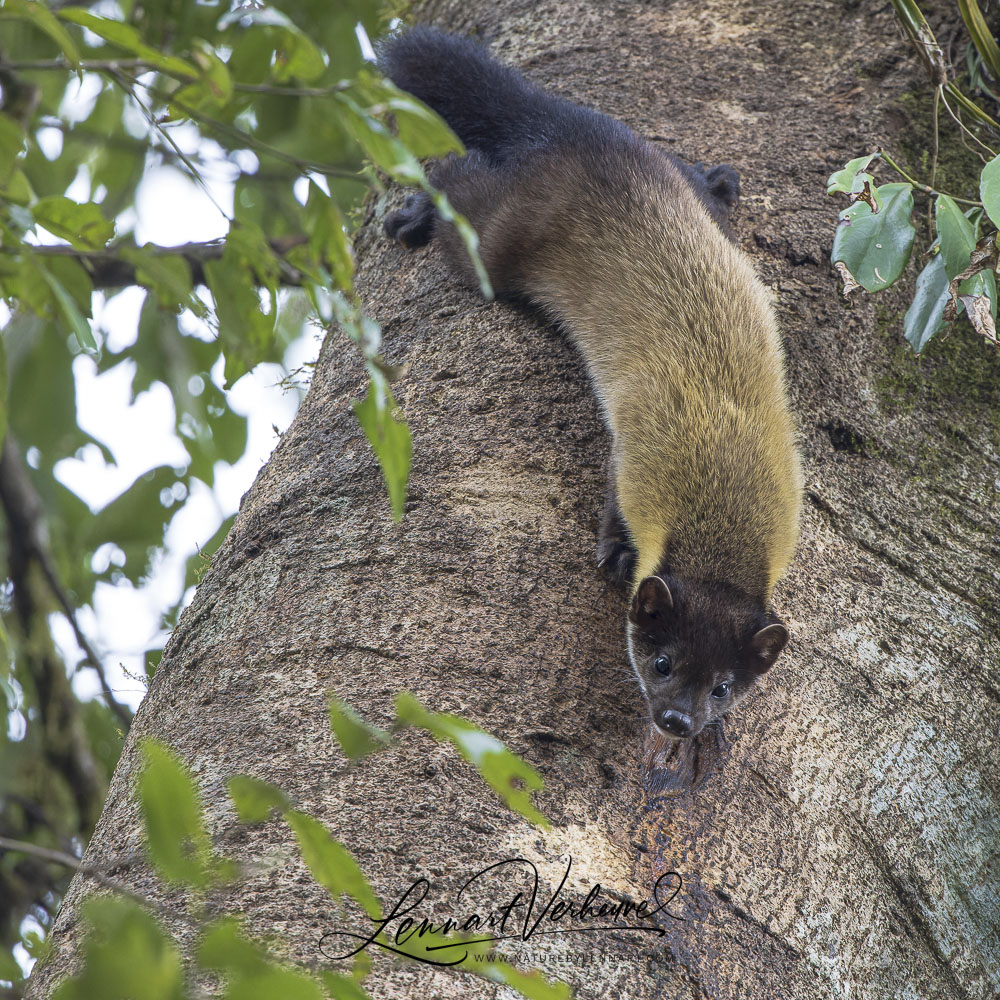
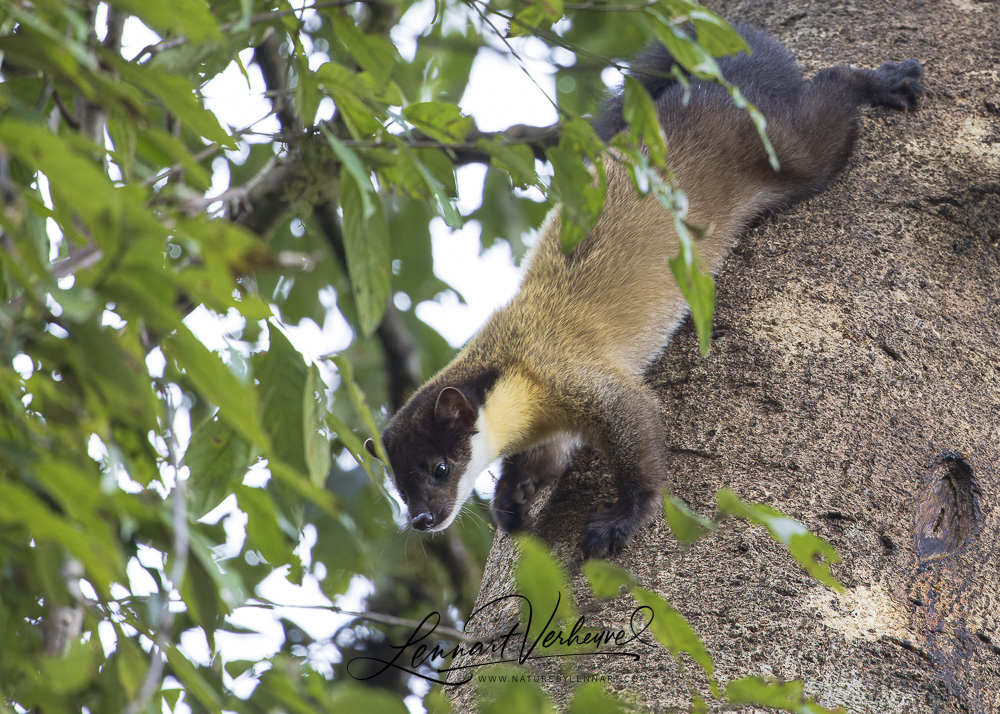
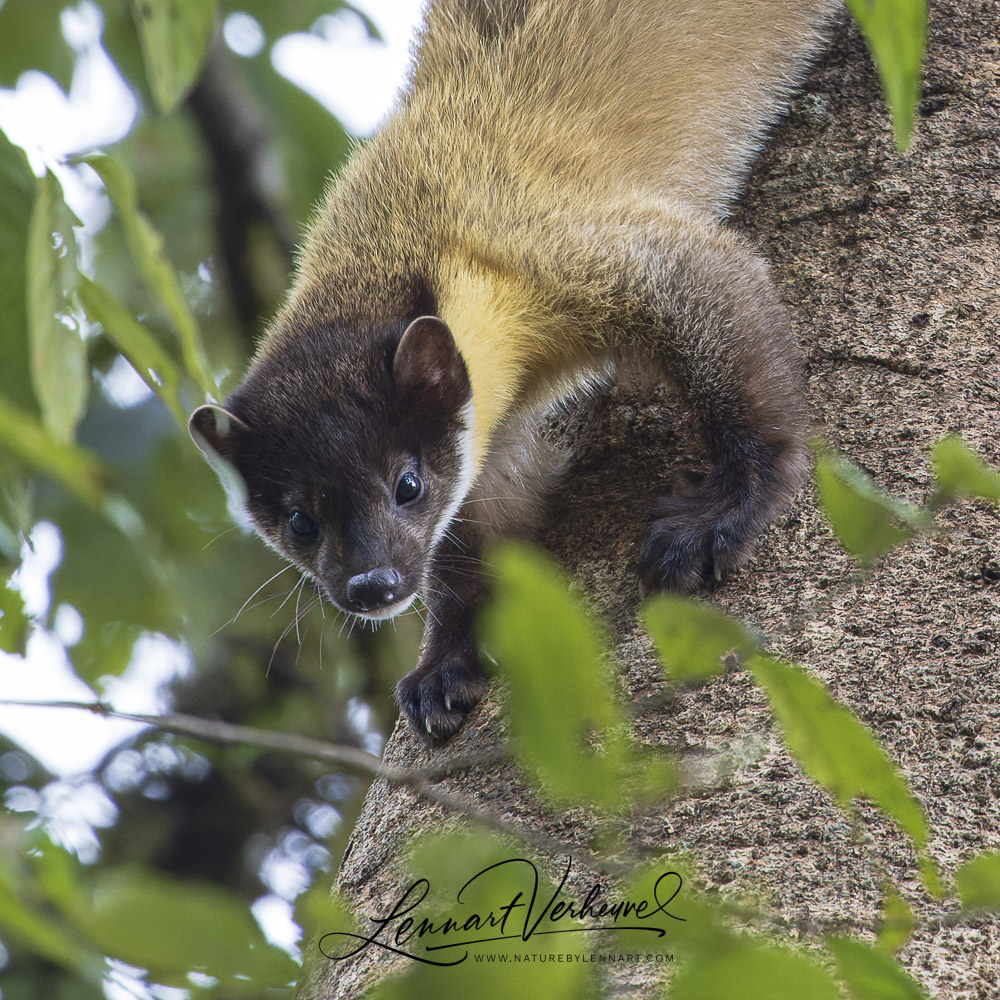
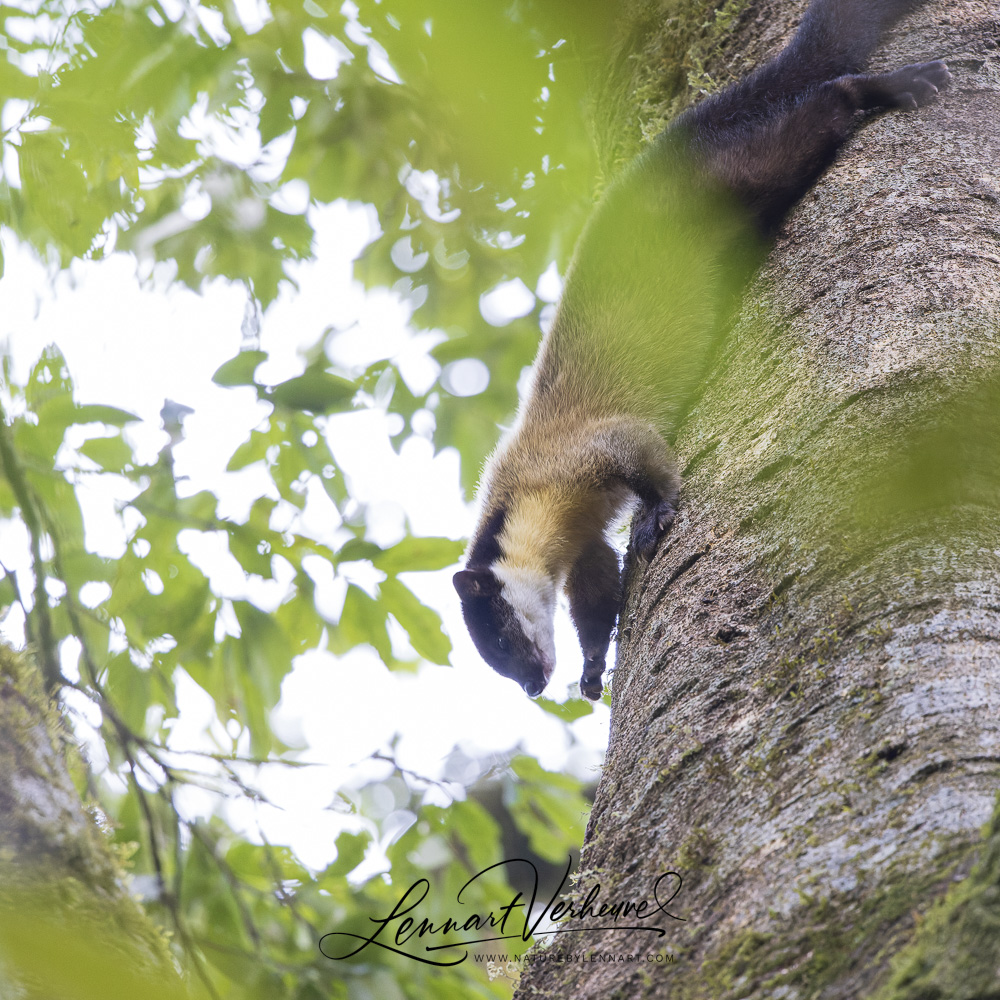
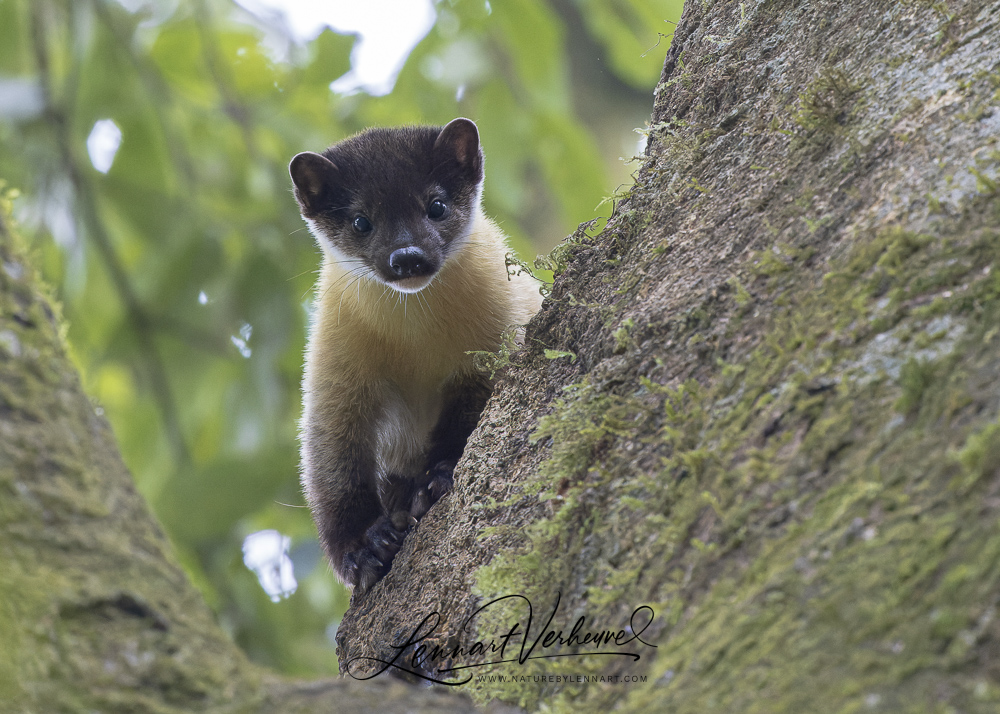
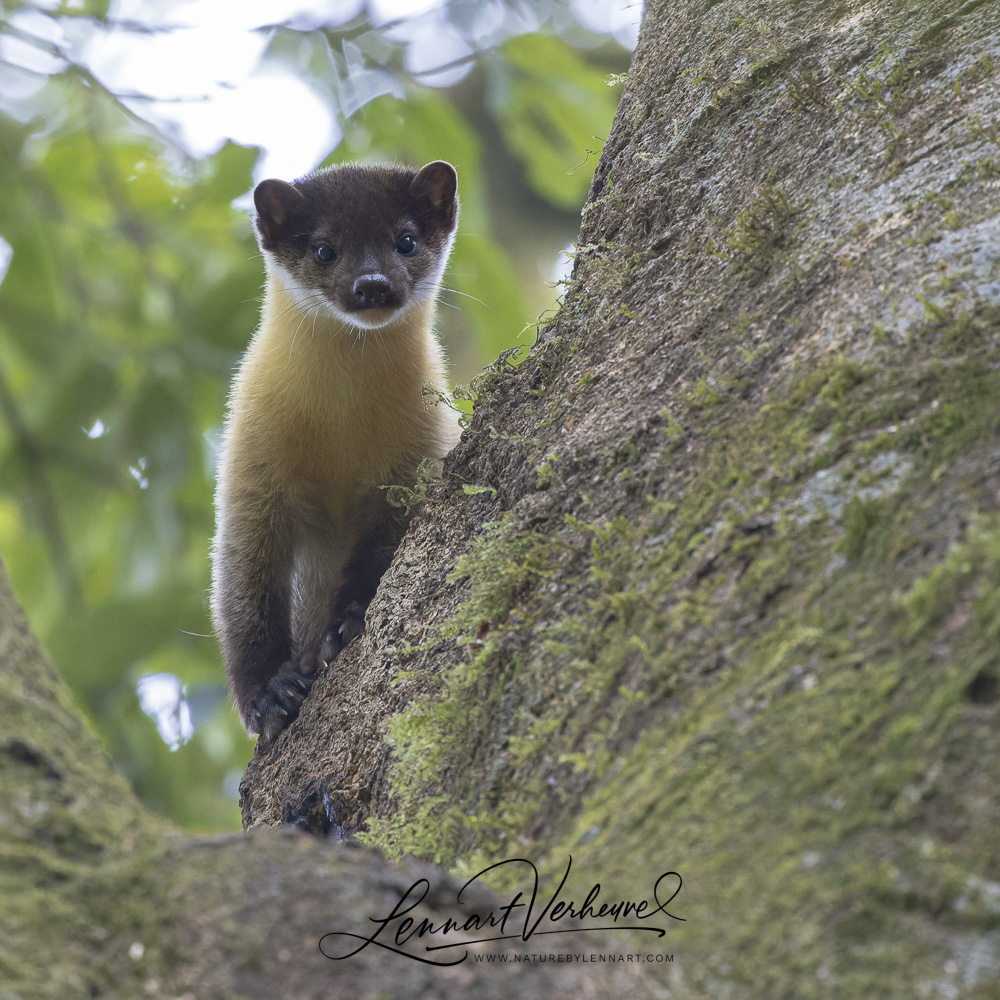
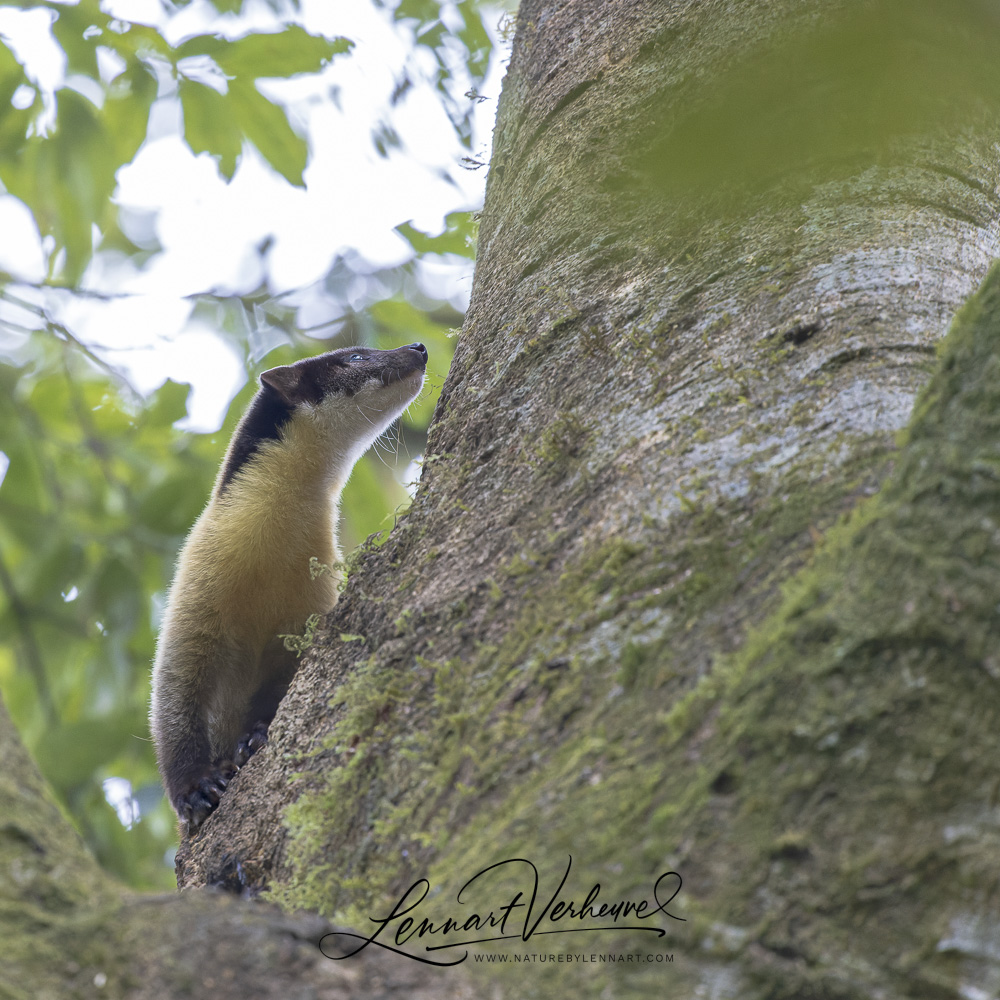
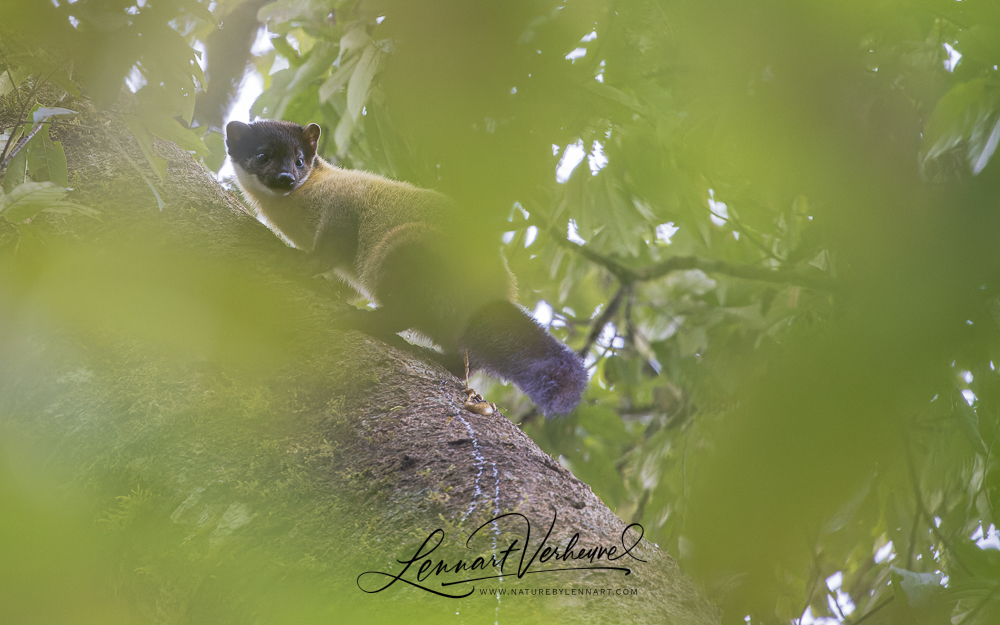
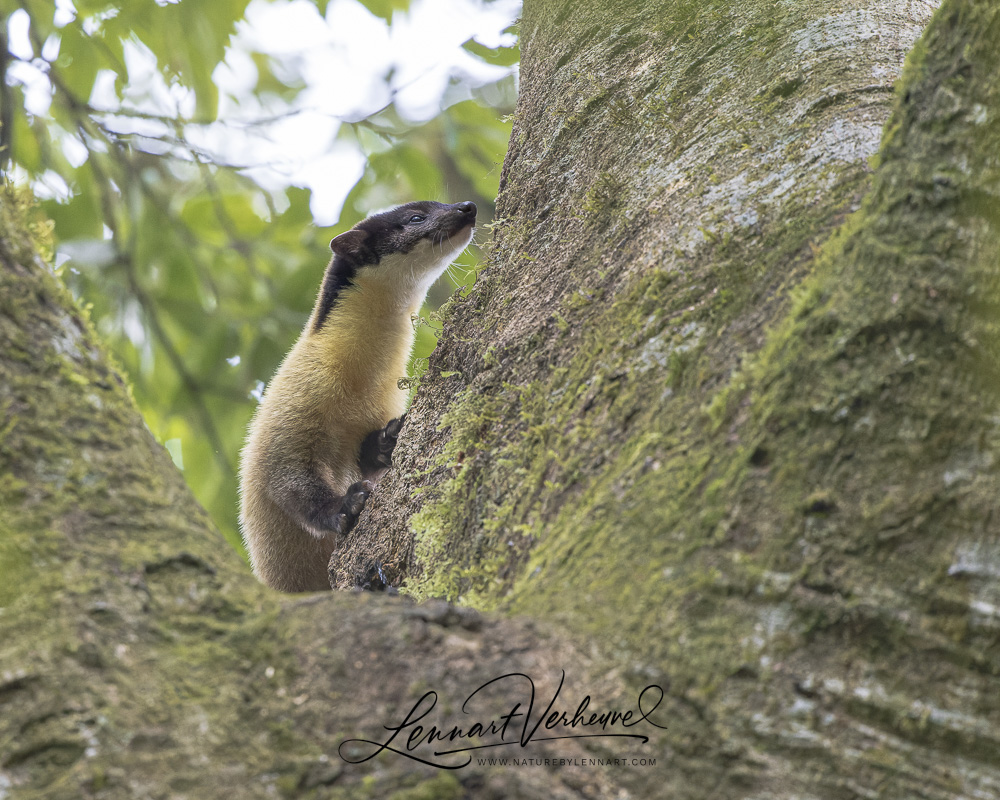
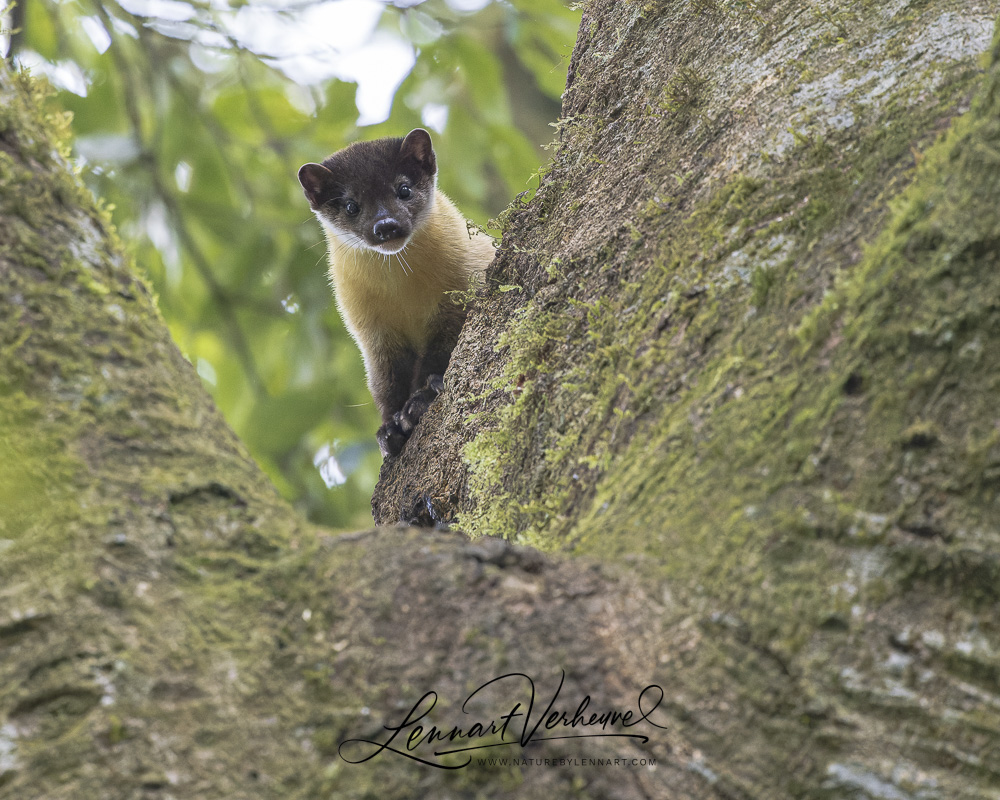
Yellow-throated Marten
For the mammals, however, the night was the time to score. Our main goal was the Asiatic Golden Cat, but there was of course more to see. Which was good, because it turned out we weren’t going to see that Golden Cat.
When we drove past the tree at night where we had seen the Yellow-throated Marten, it turned out that there was now a Masked Palm Civet on the spot of the marten! He also paid much more attention to the tree than to us although we got a good look.
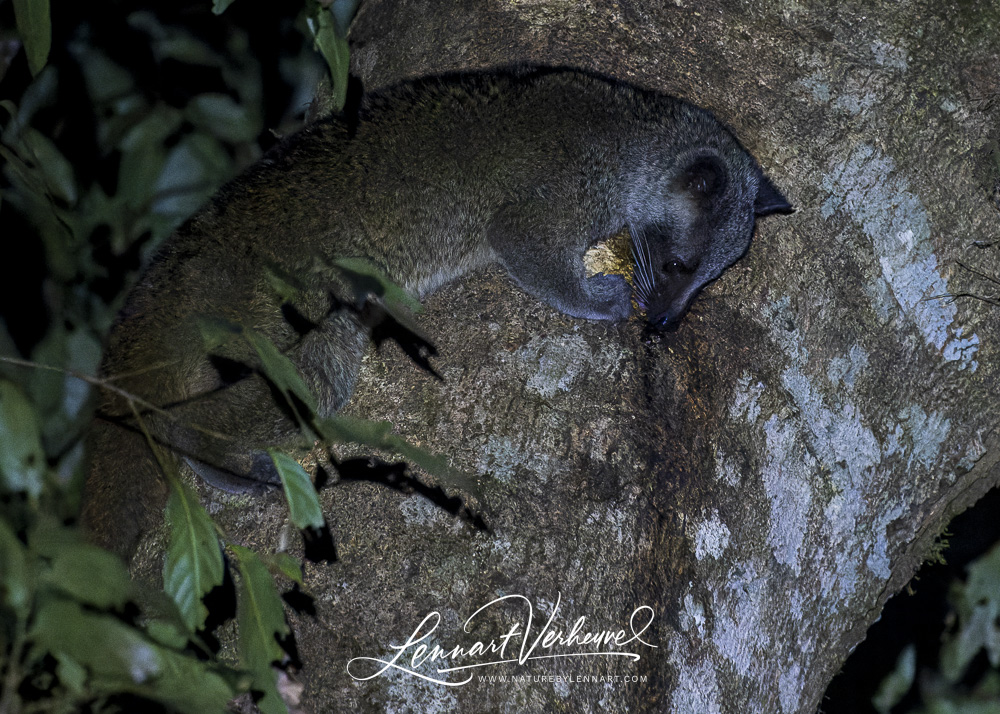
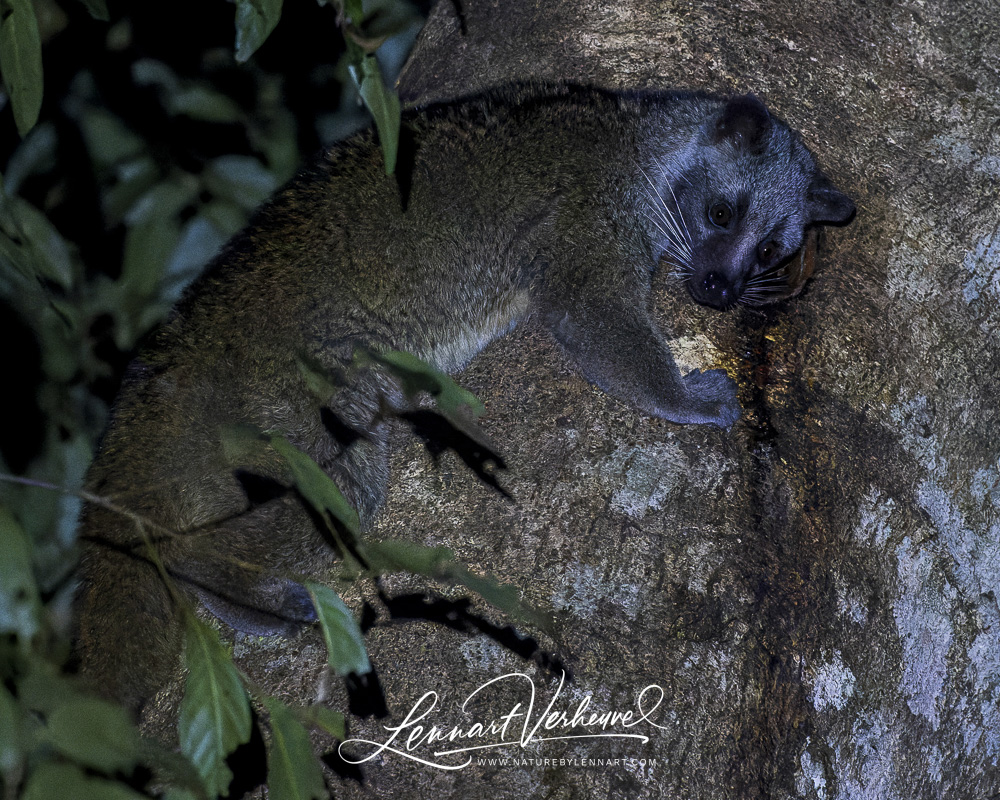
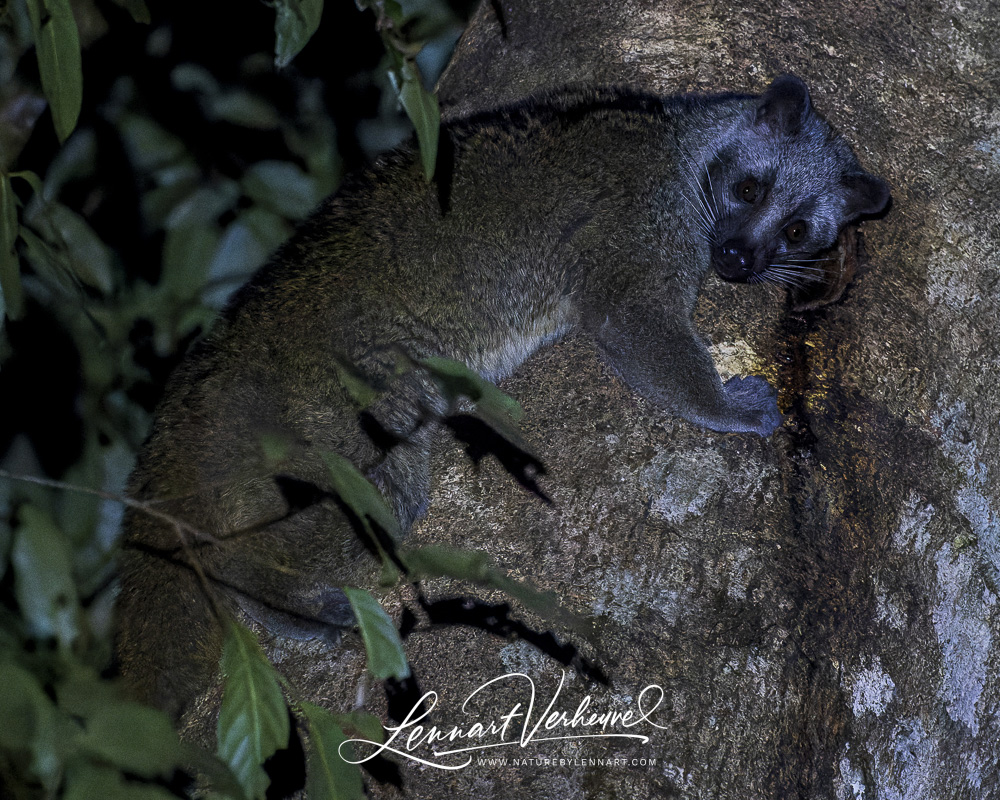
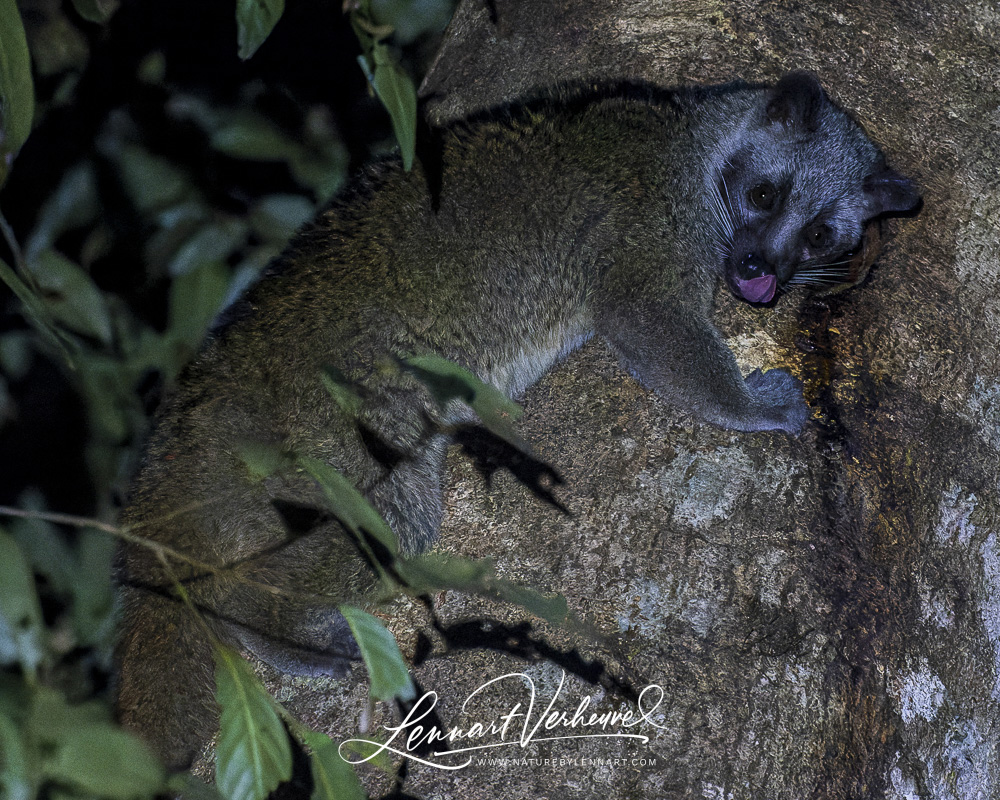
Masked Palm Civet
When he ran further up the tree, there was another surprise: another Masked Palm Civet! They got into a fight, but after a short struggle, they appeared to be settled down.
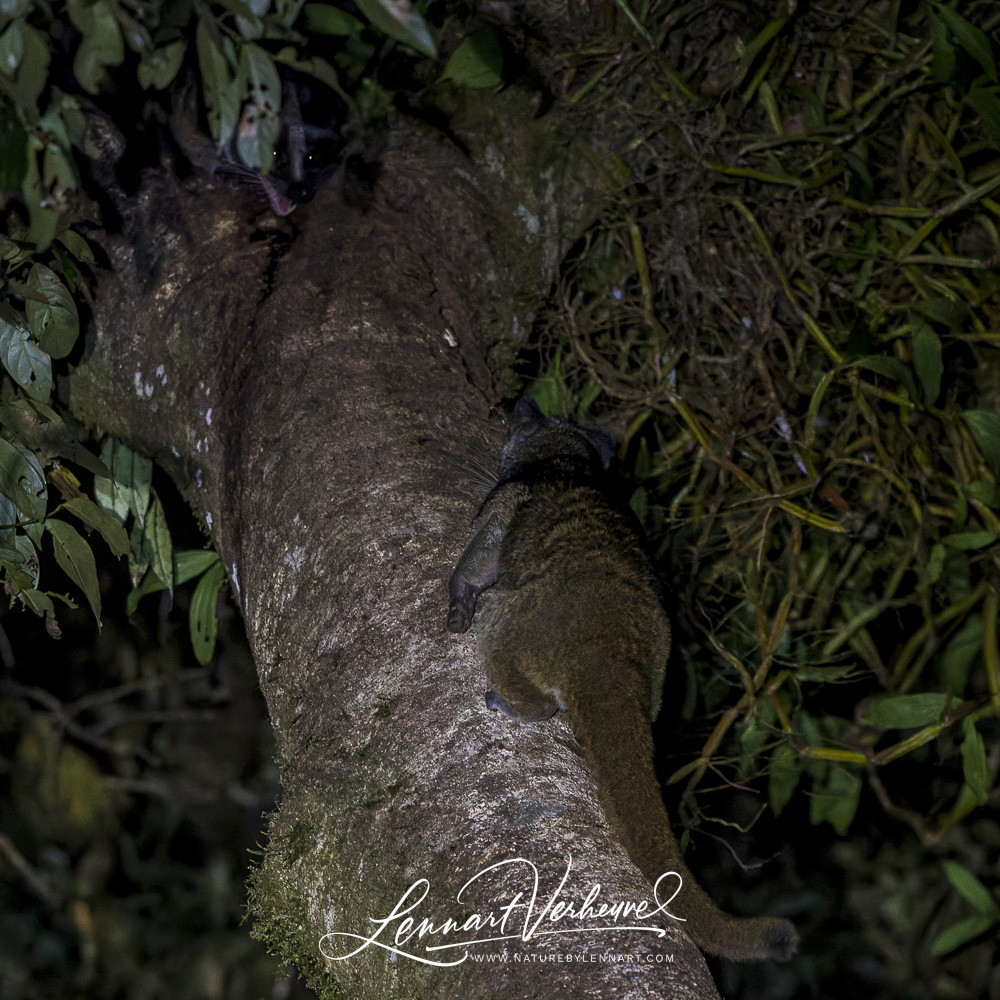
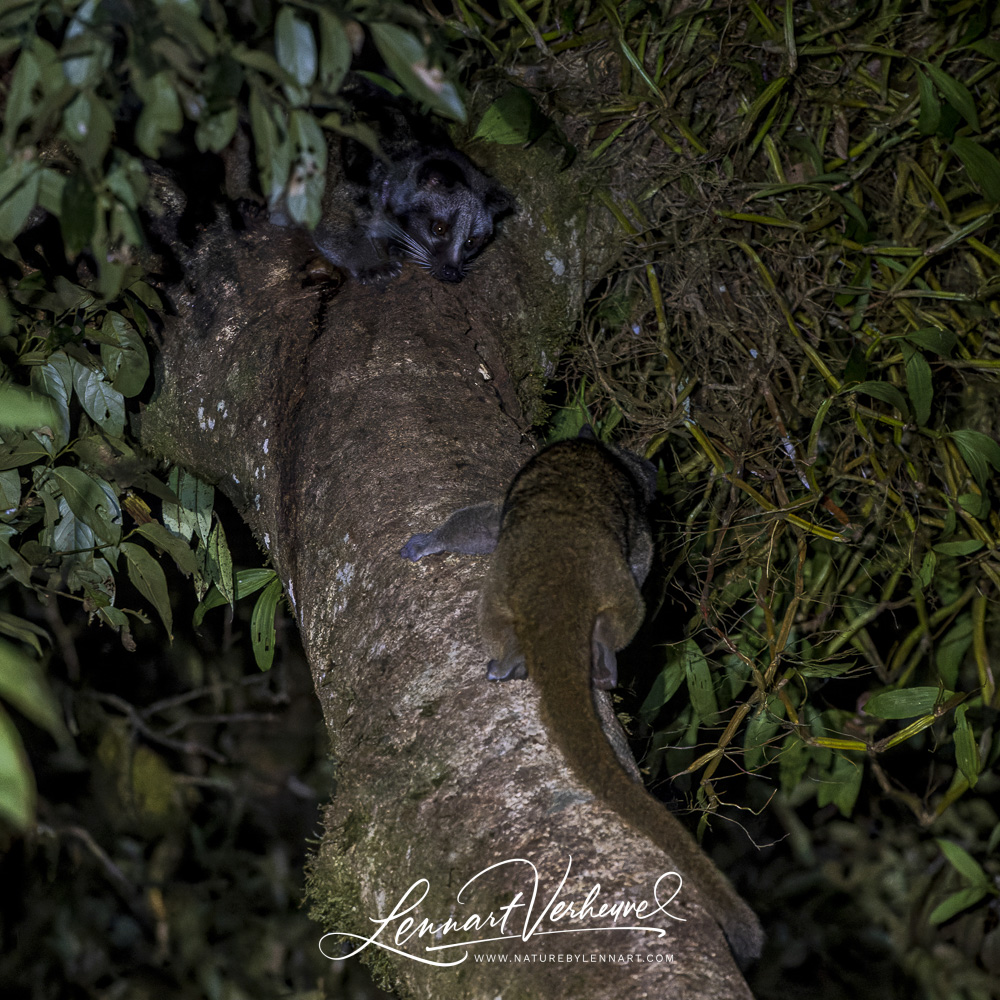
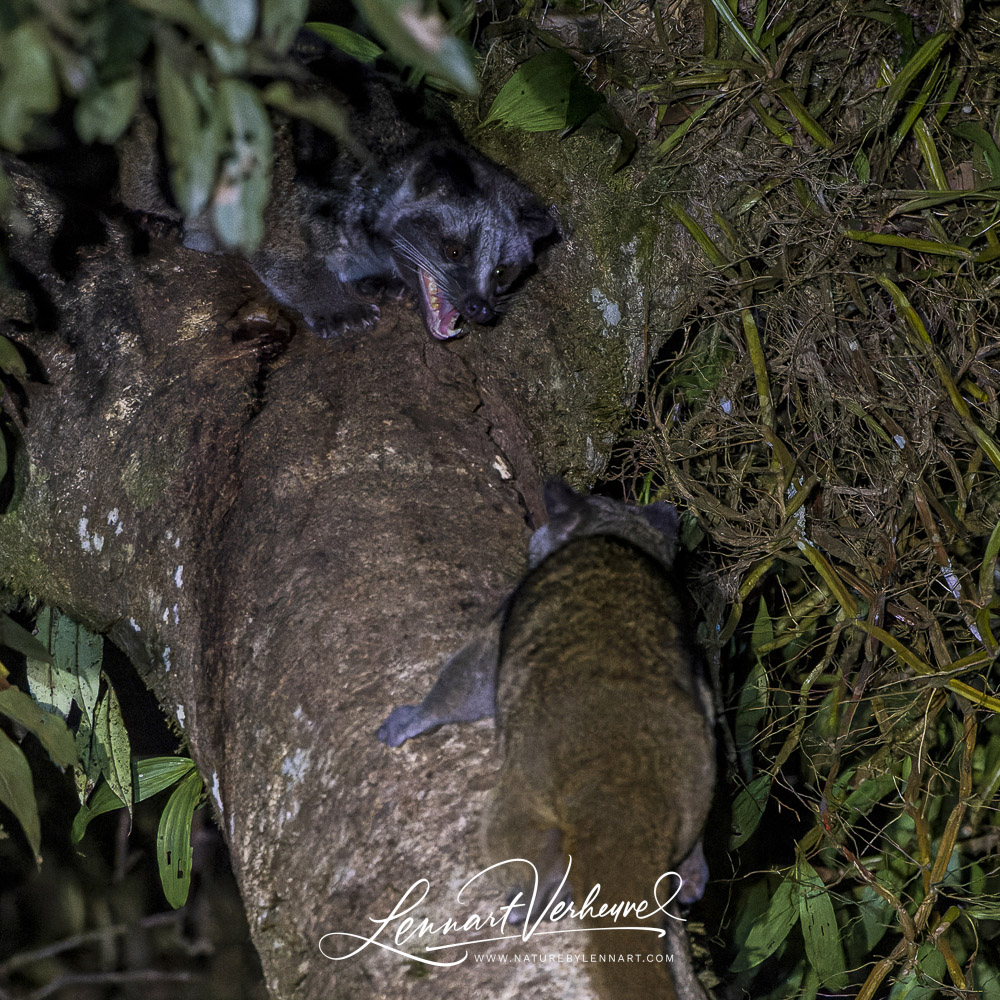
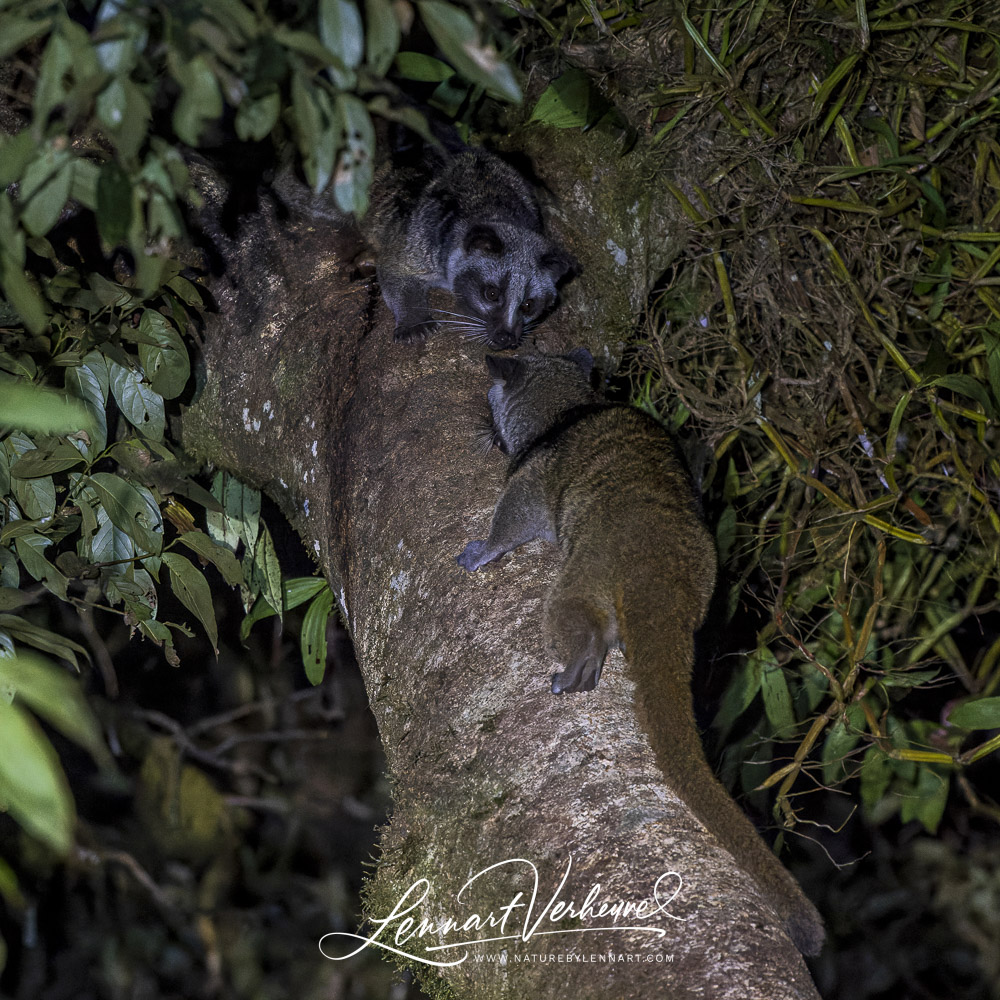
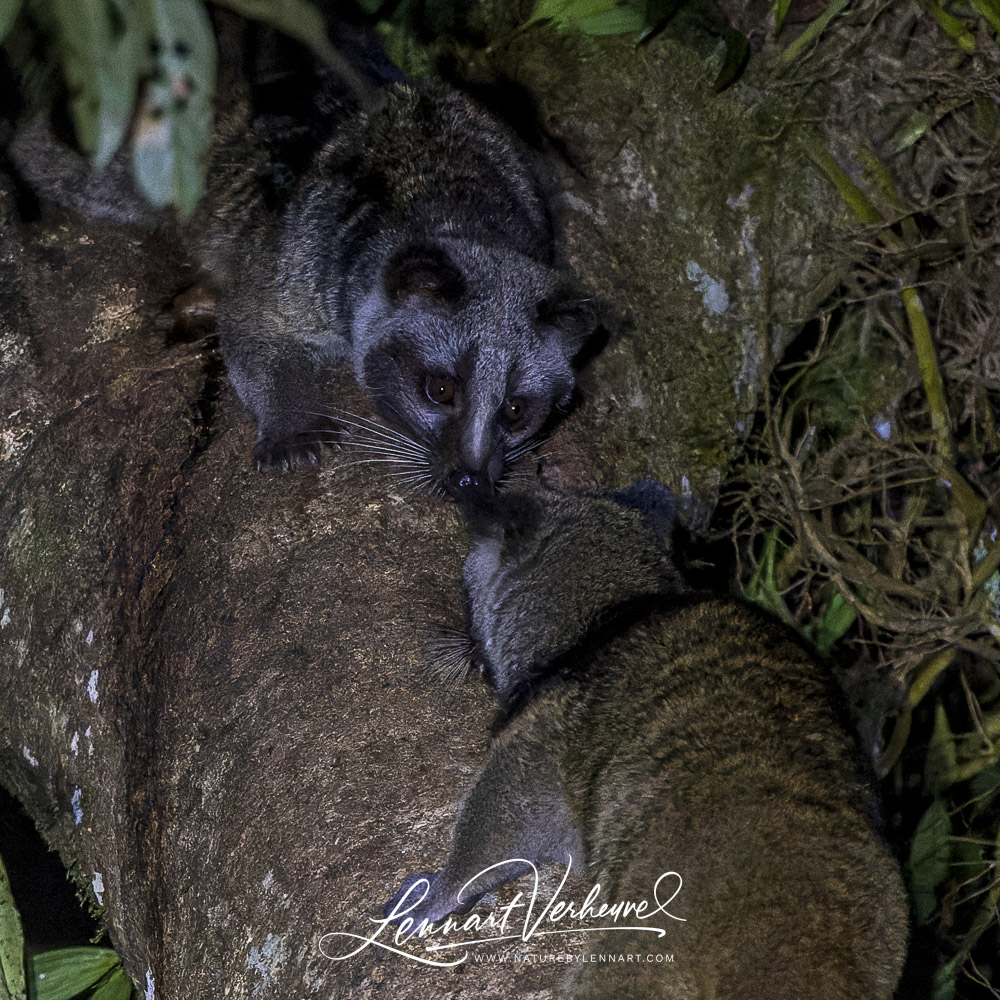
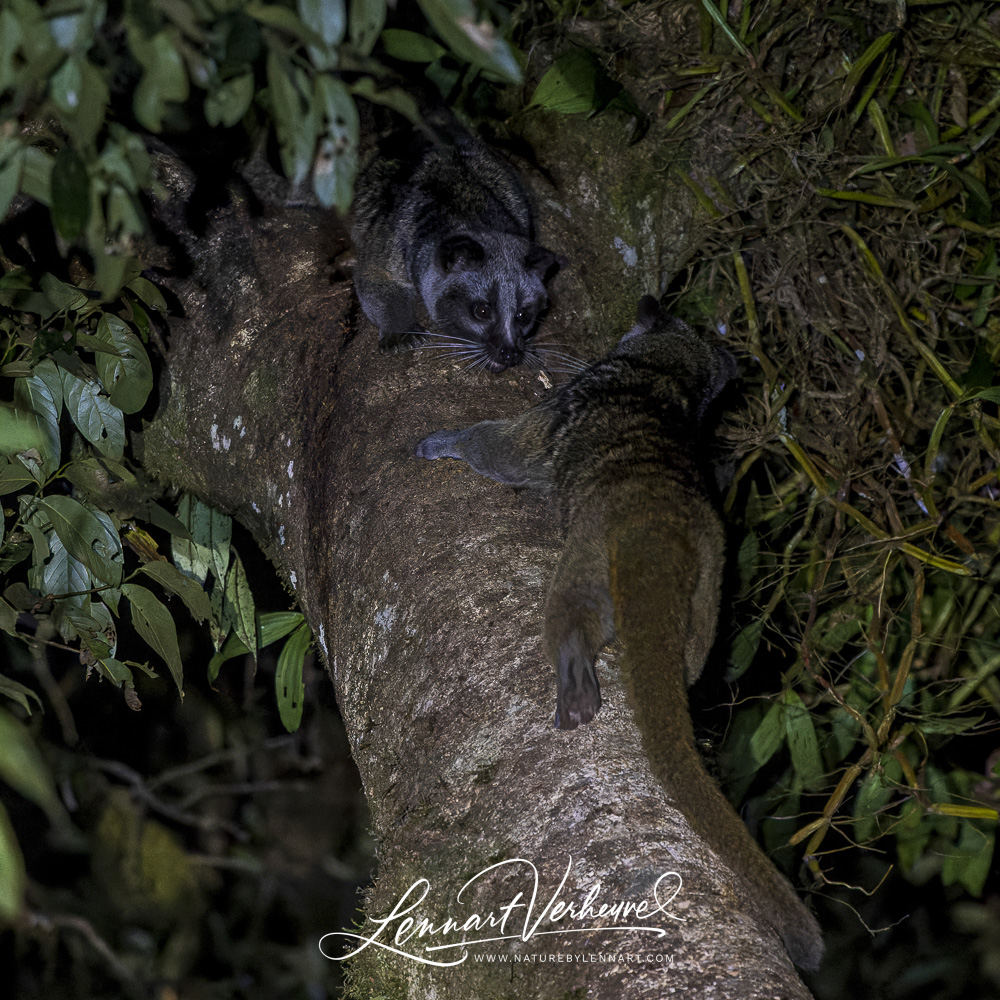
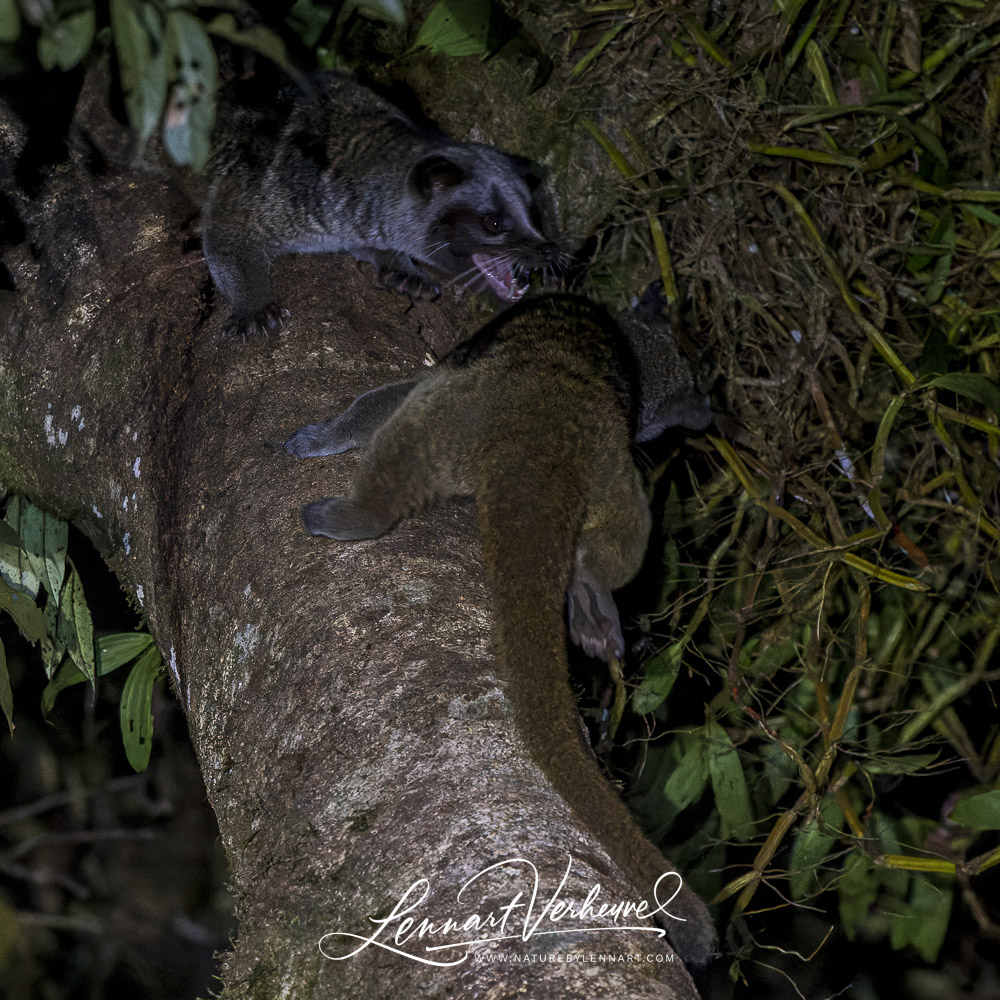
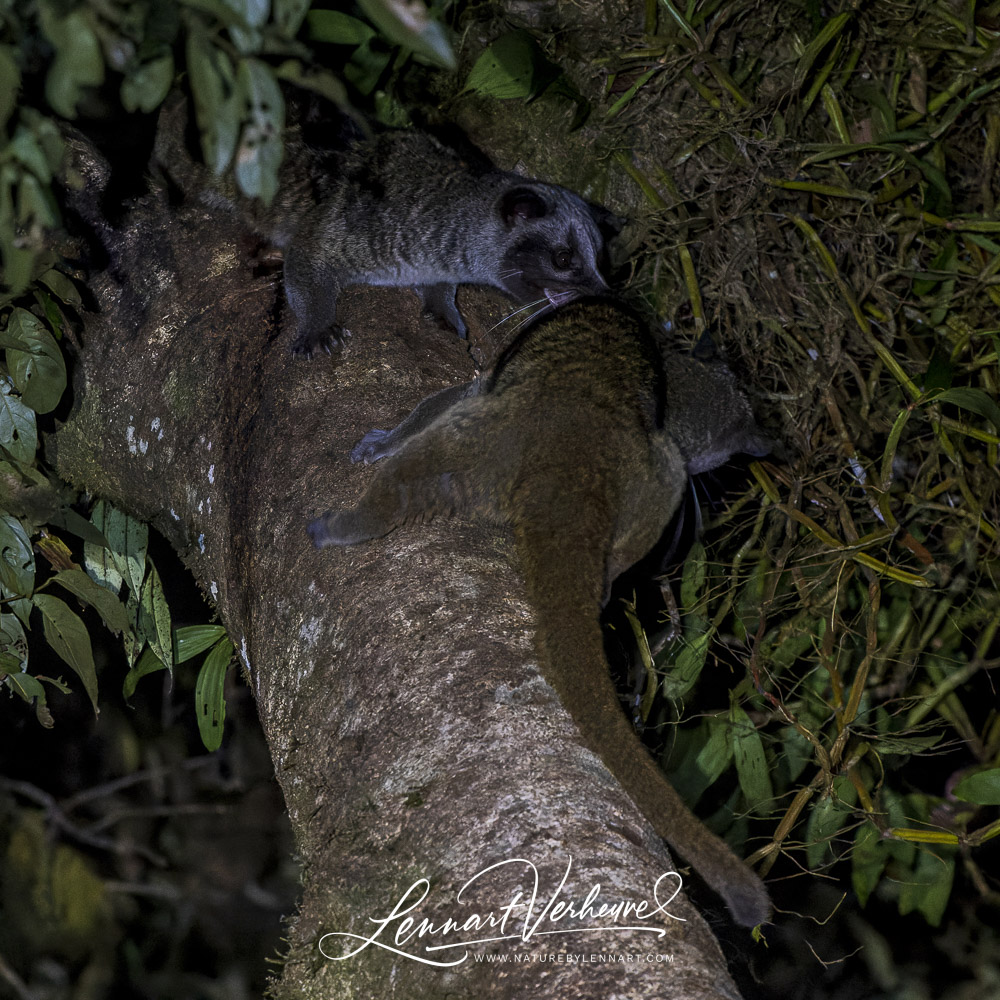
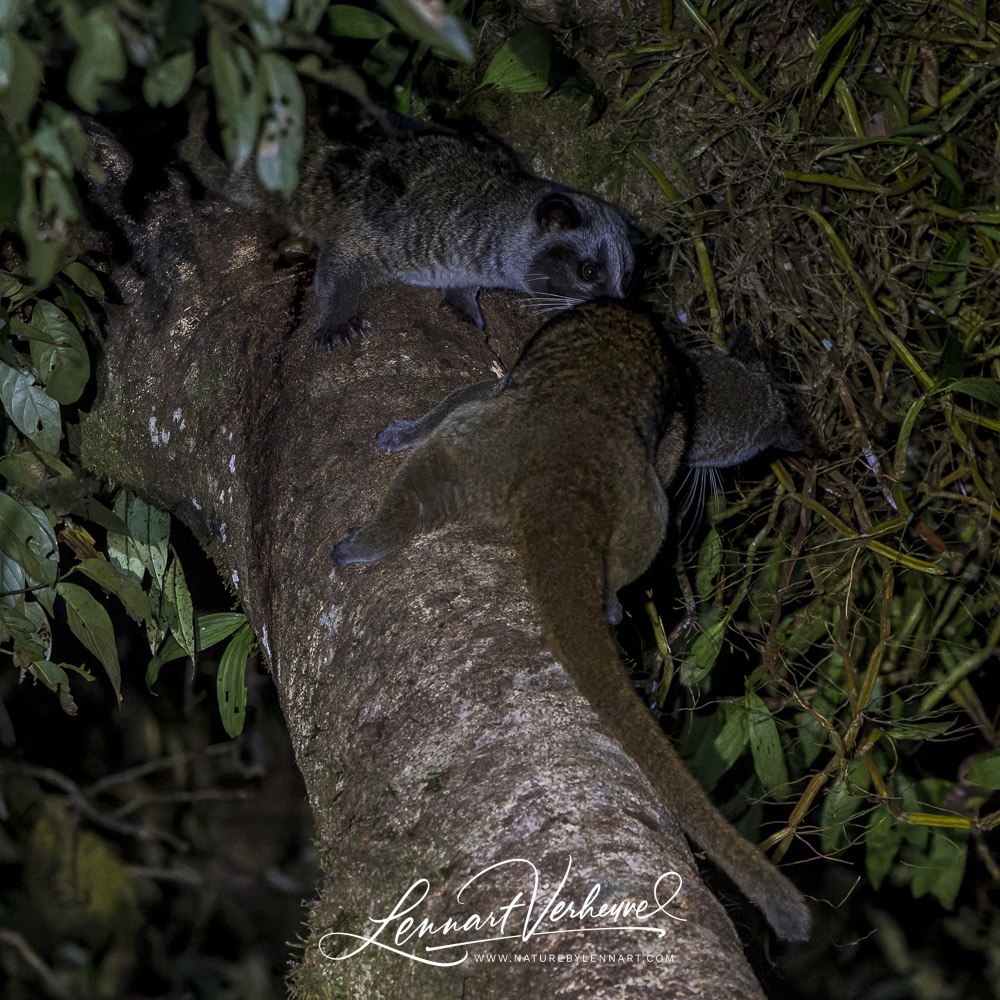
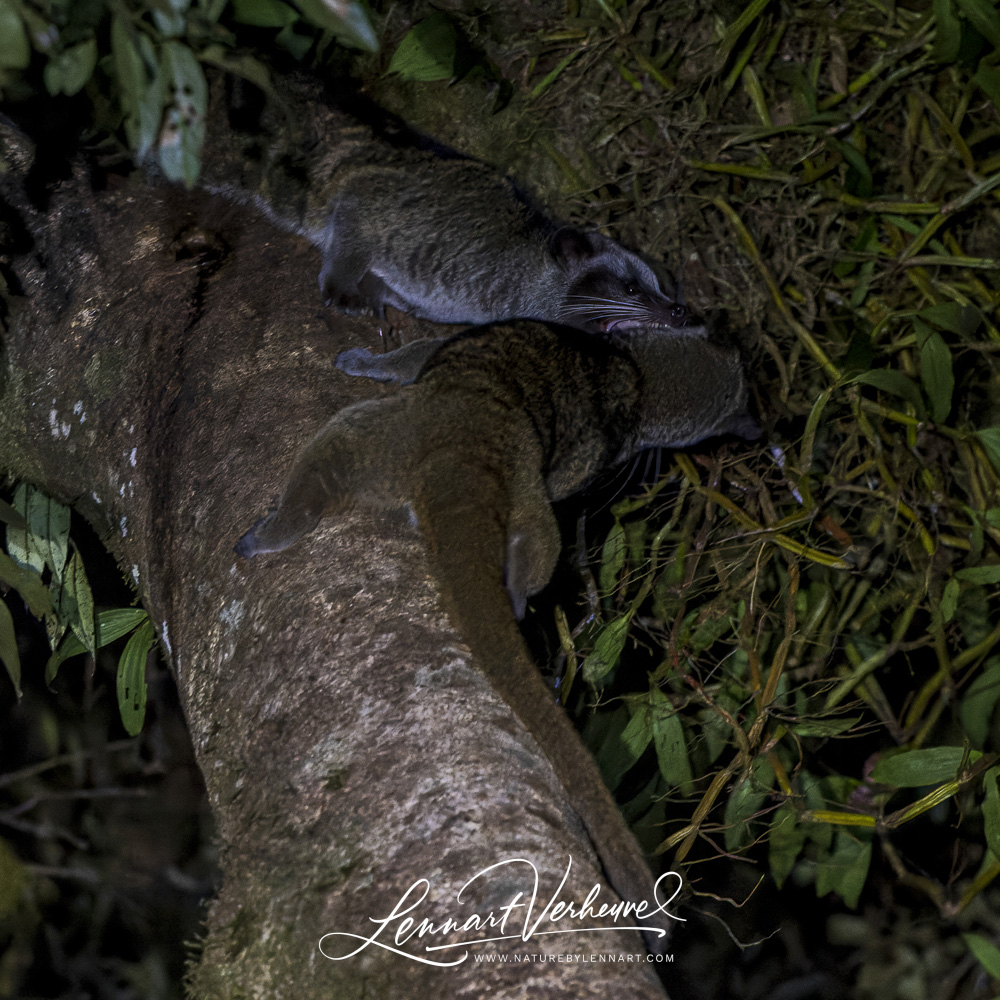
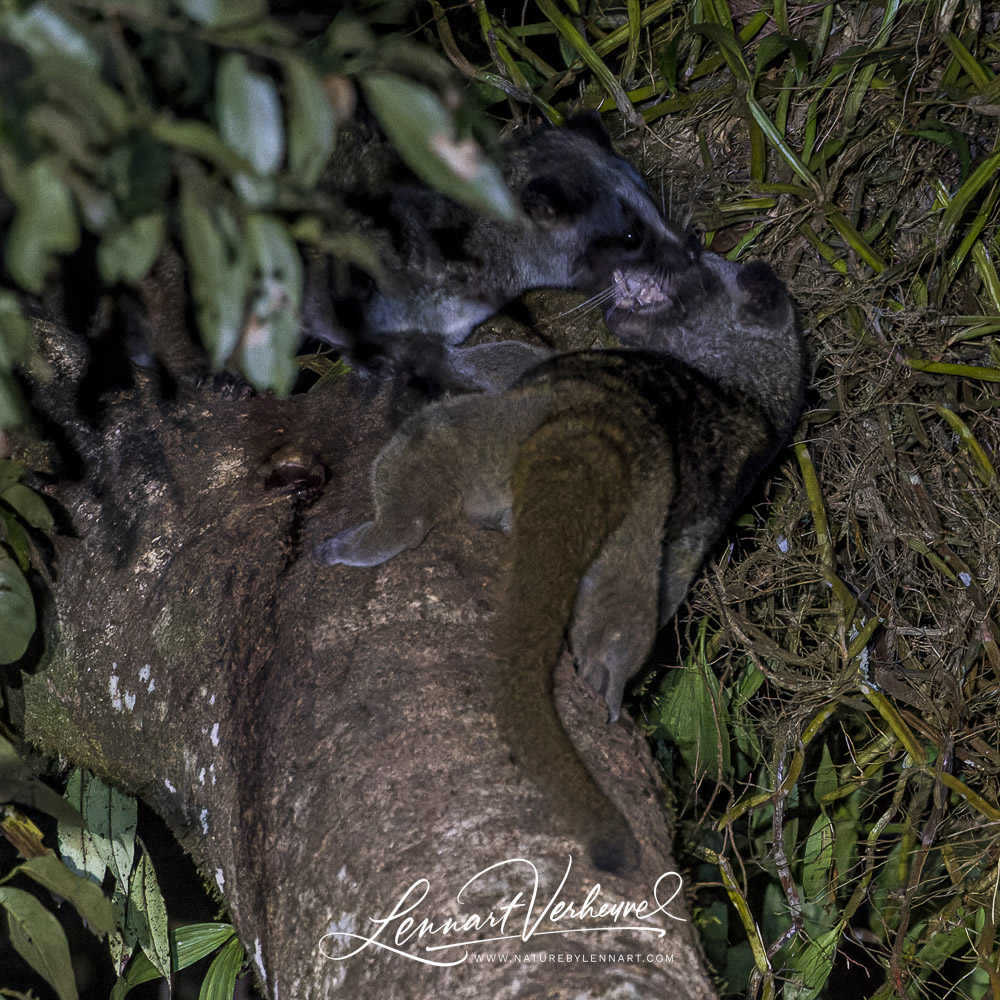
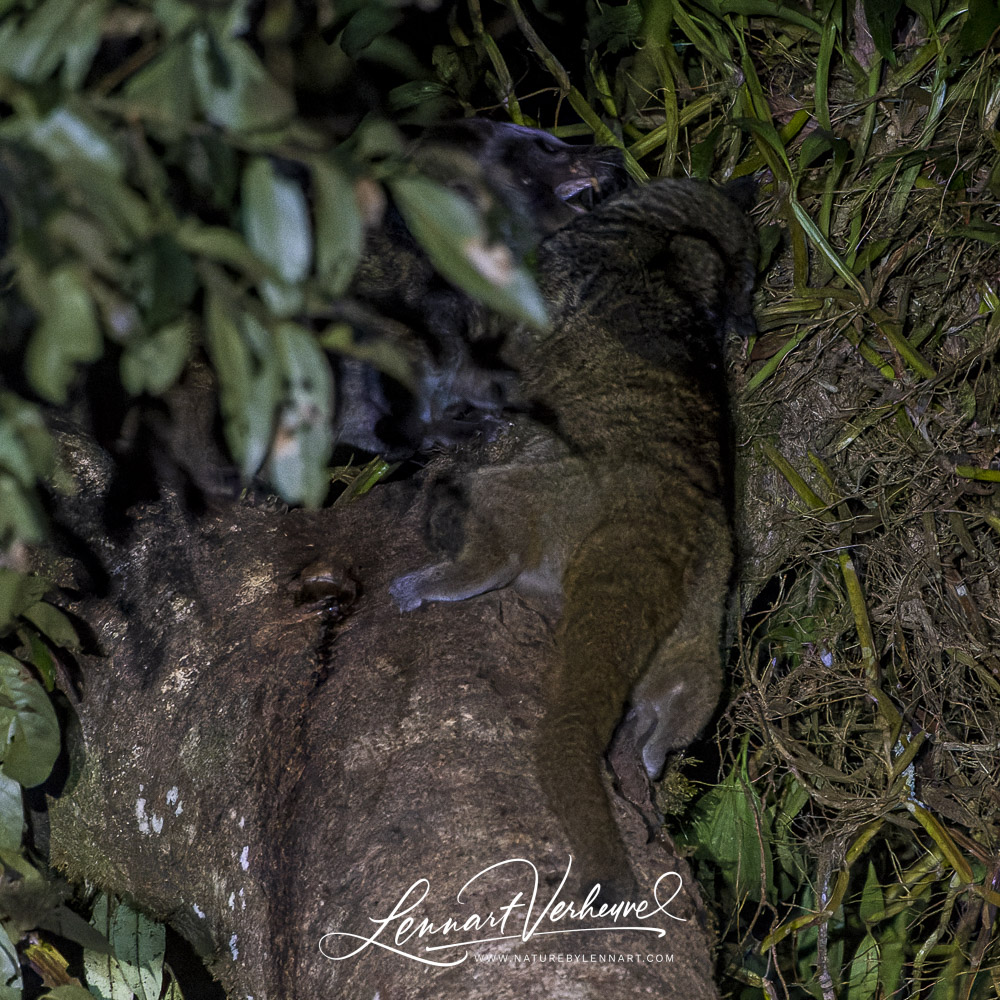
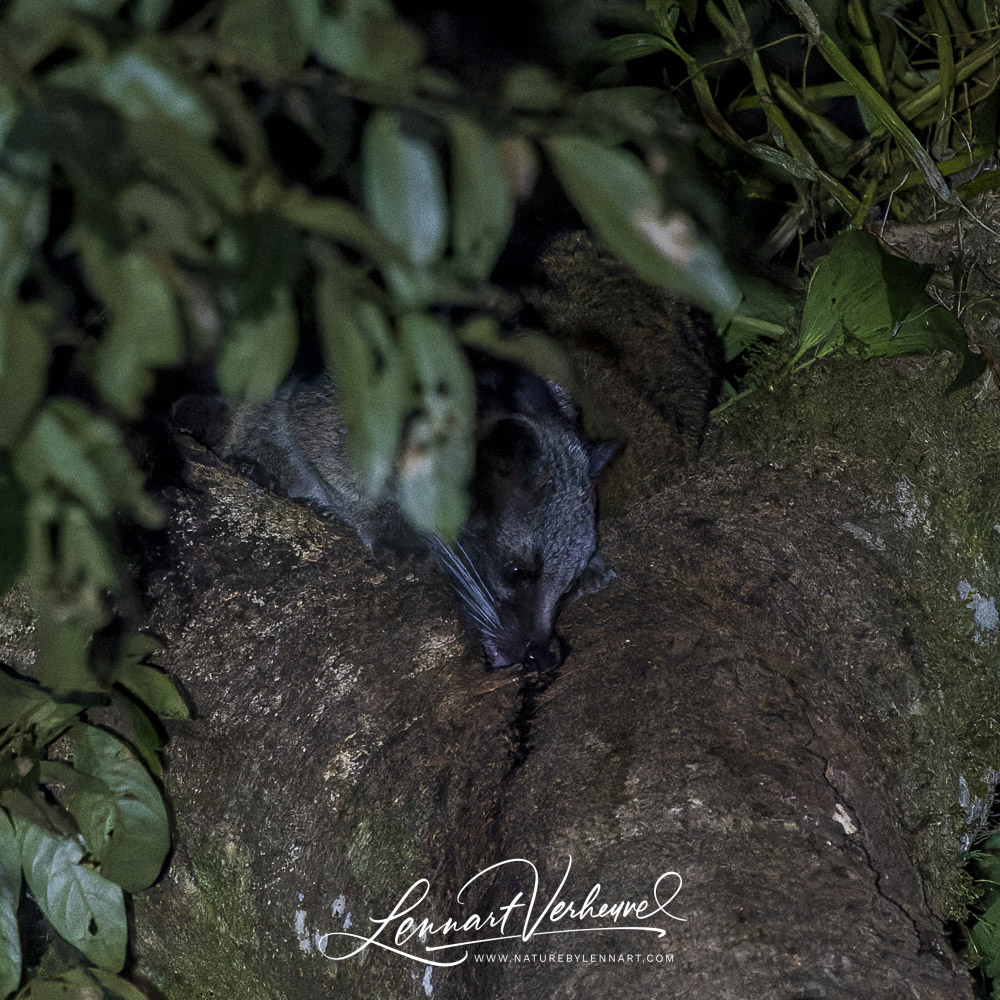
Masked Palm Civet
The diversity of the nocturnal animals was not that high. We did always enjoy seeing flying squirrels. We saw some more Bhutan Giant Flying Squirrels.
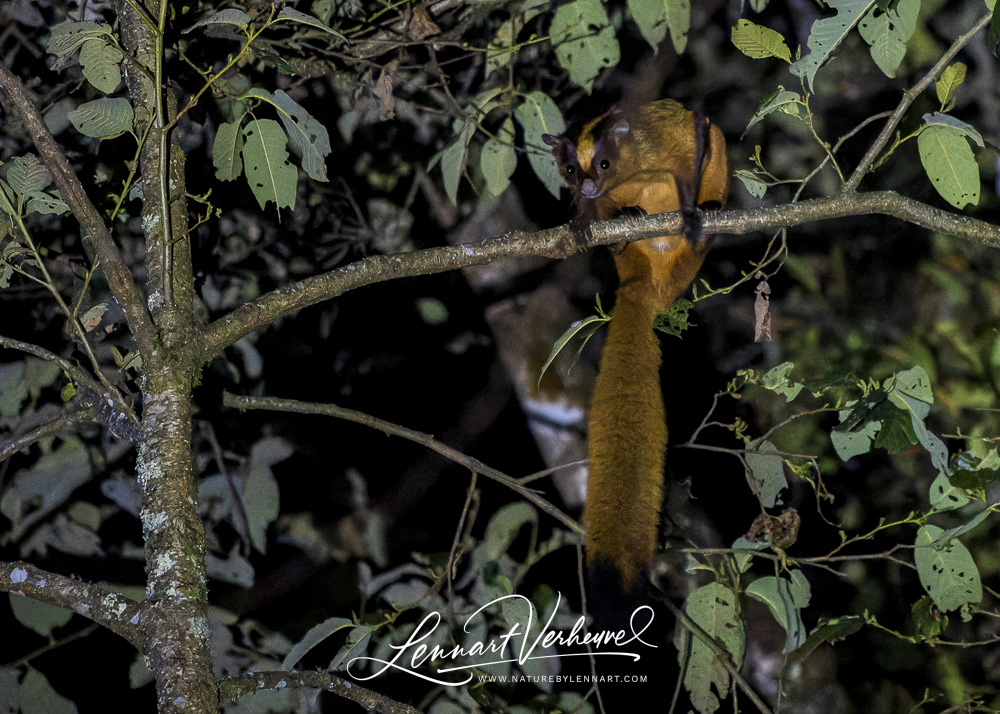
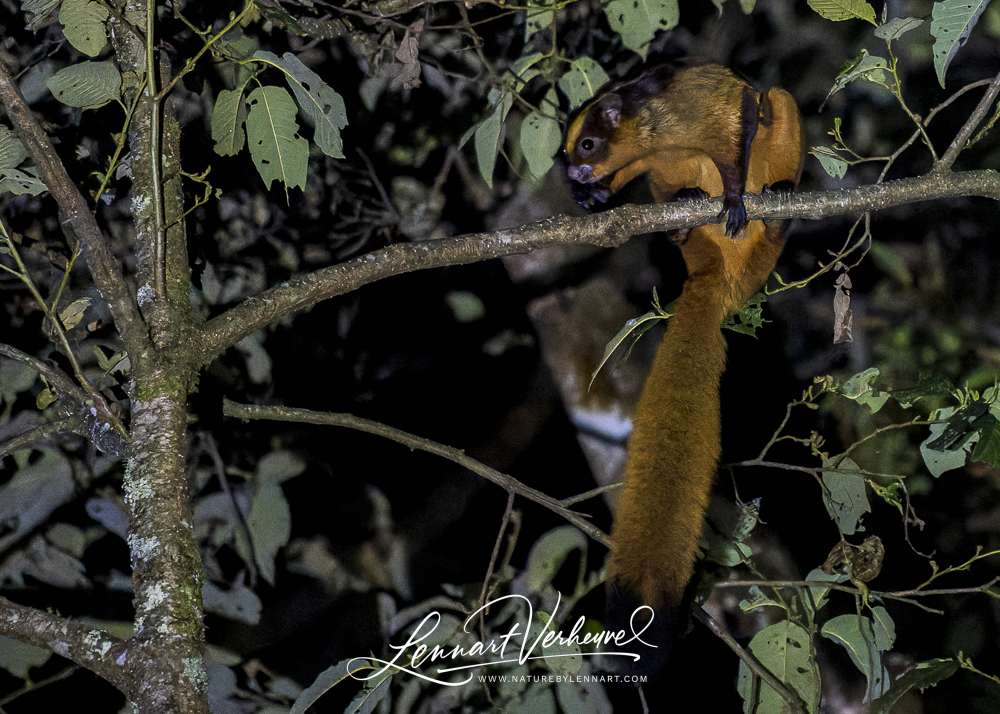
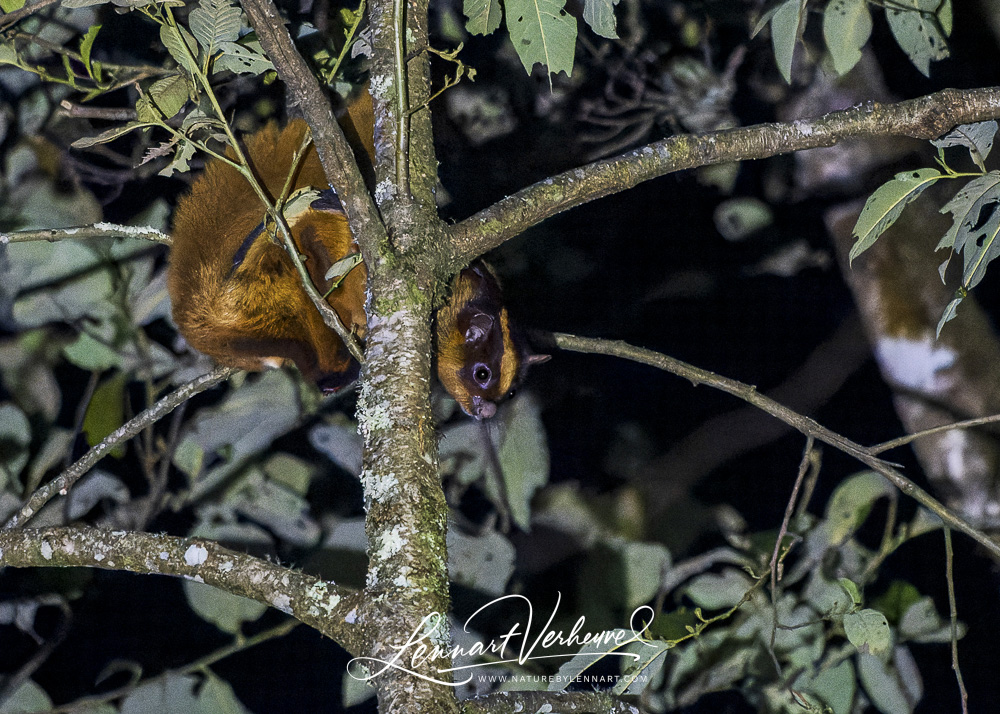
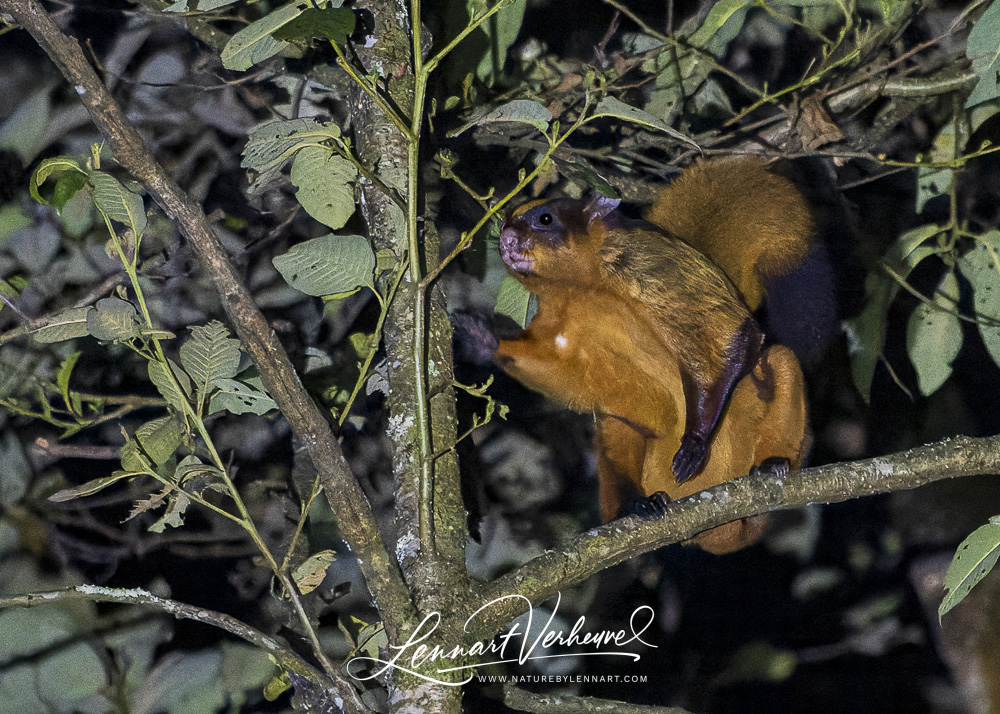
Bhutan Giant Flying Squirrel
We also had an excellent sighting of the Grey-headed Flying Squirrel. Very few good photos have been taken of this species so it was very nice to be able to change that.
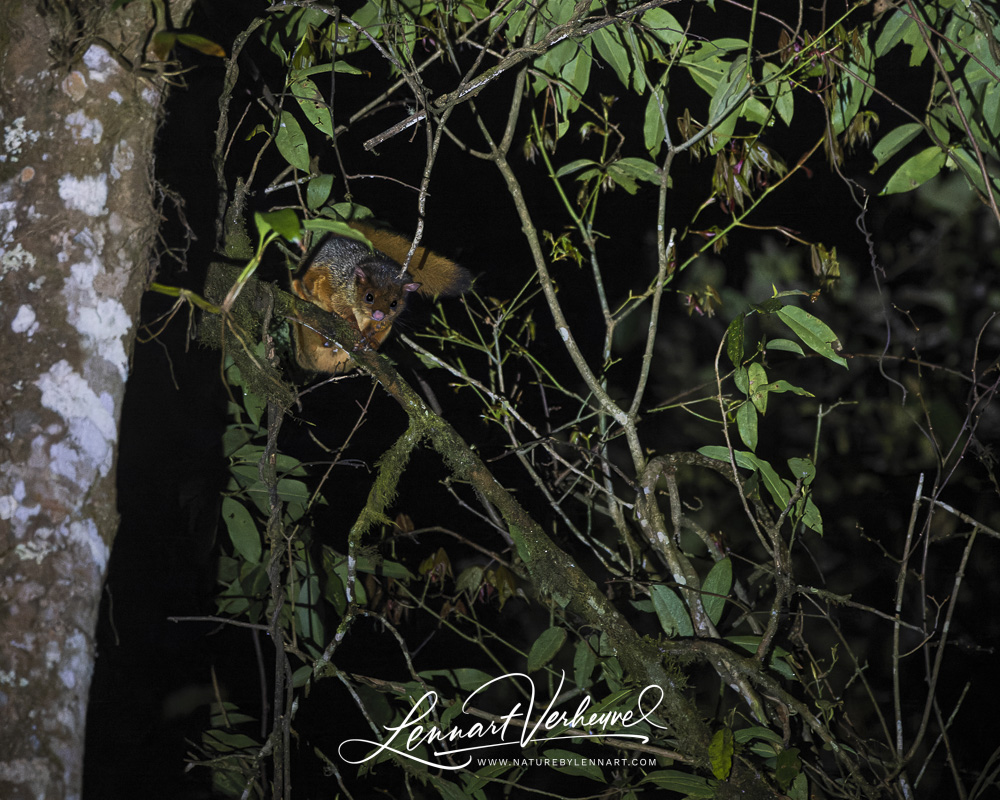
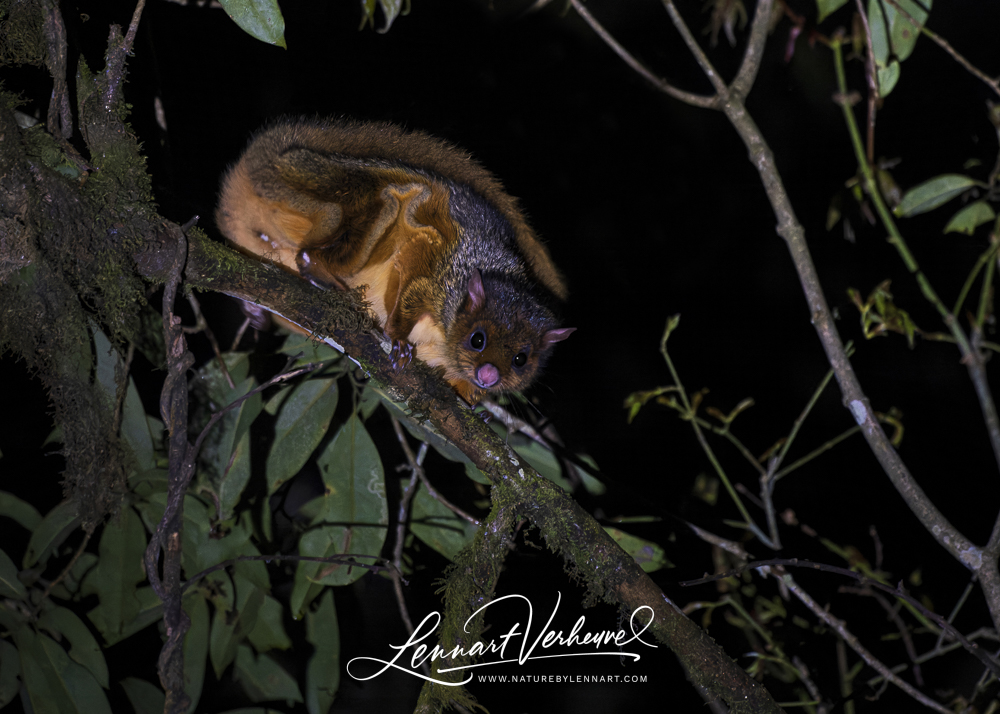
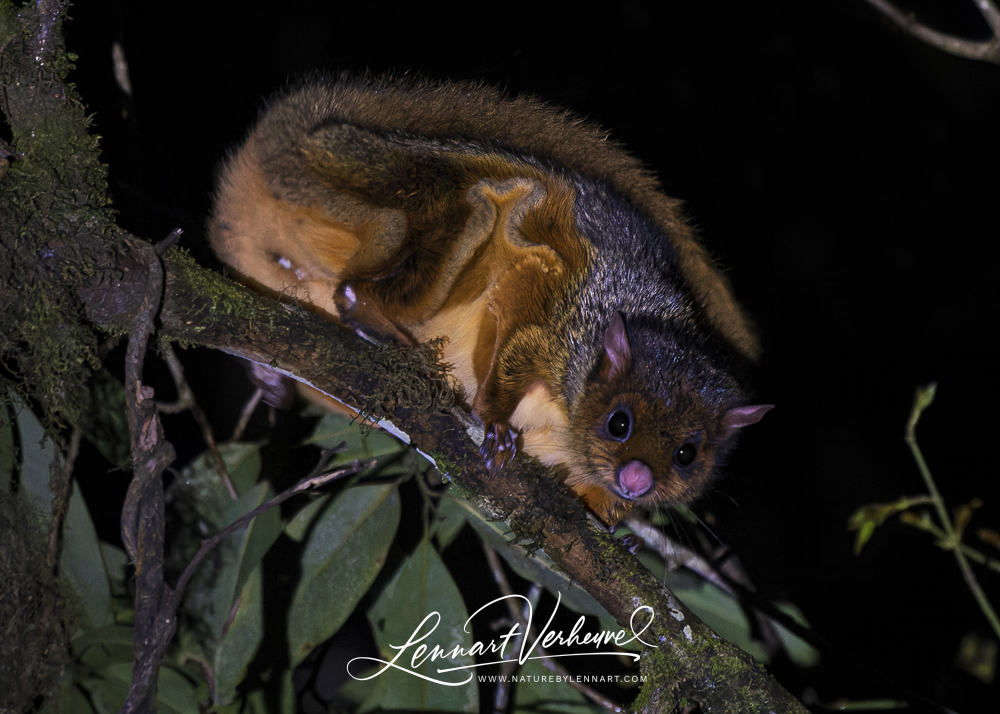
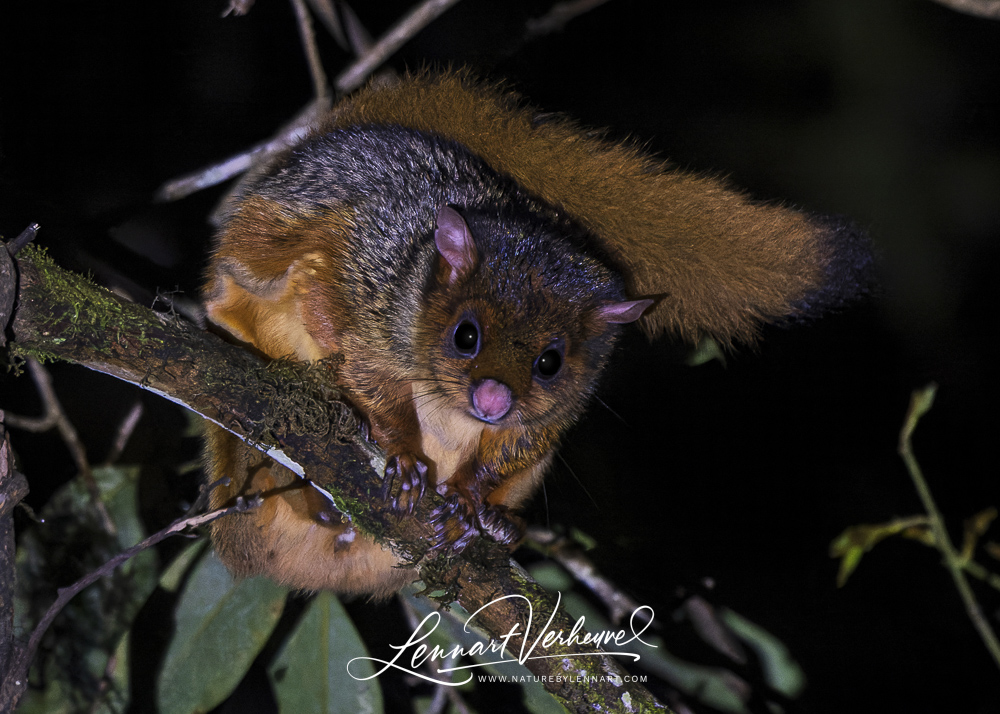
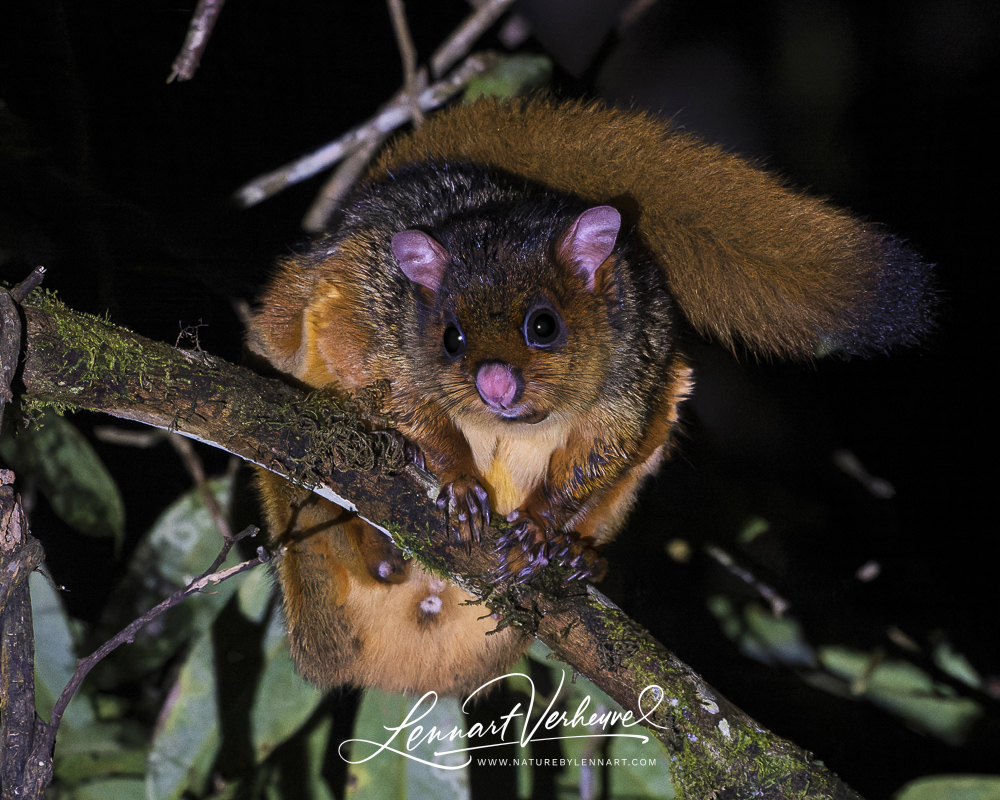
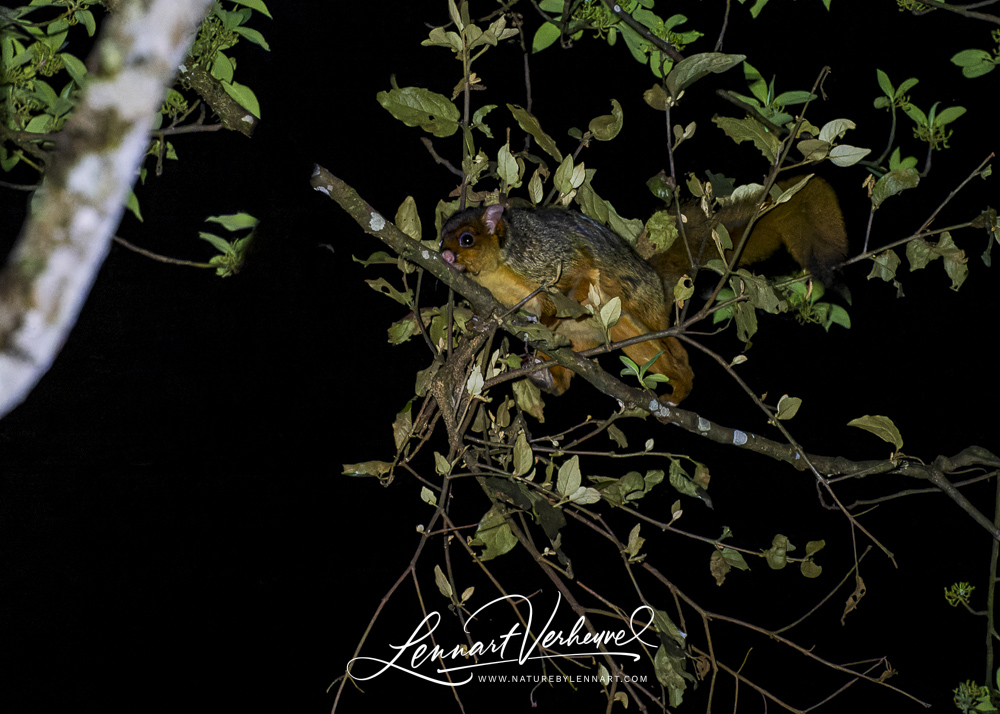
Grey-headed Flying Squirrel
The Particolored Flying Squirrel is a lot smaller making it much harder to see. We also had some good observations of that one though.
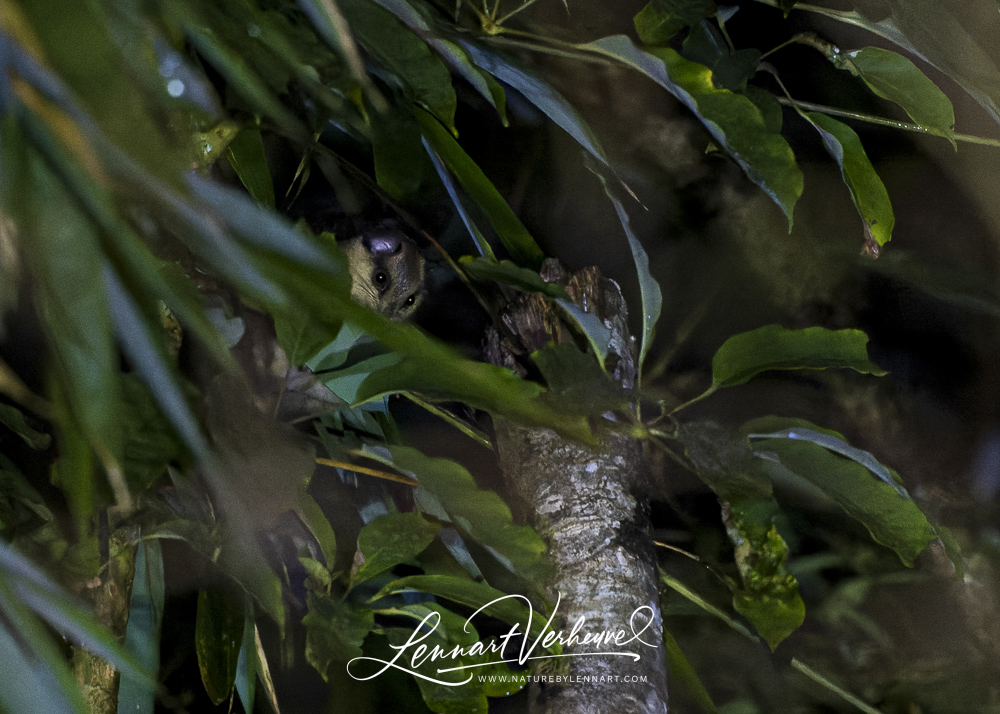
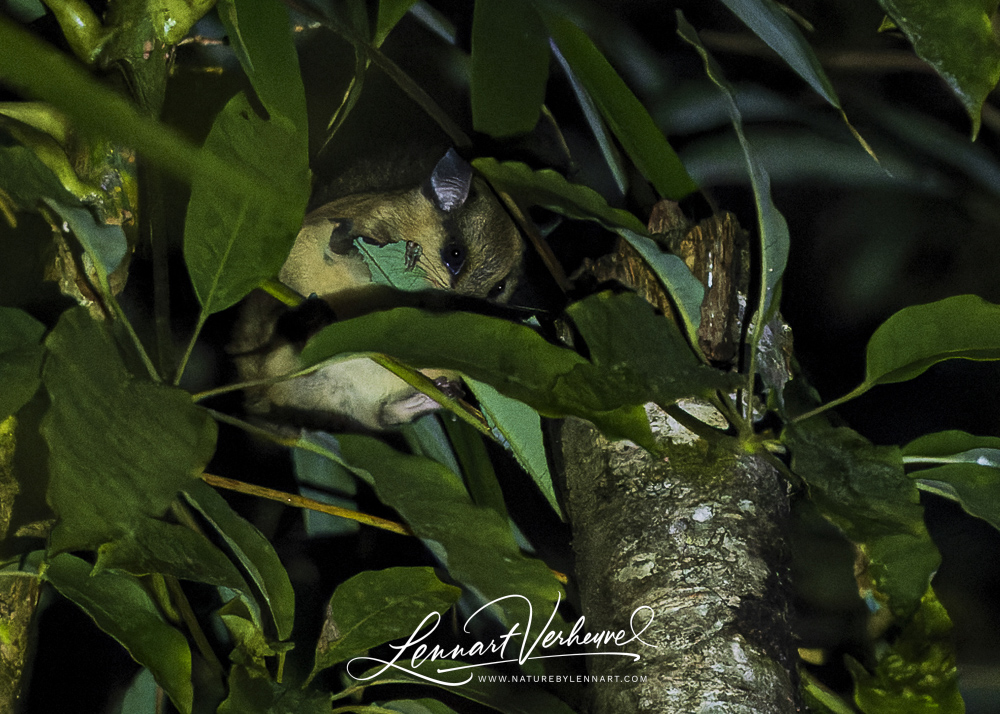
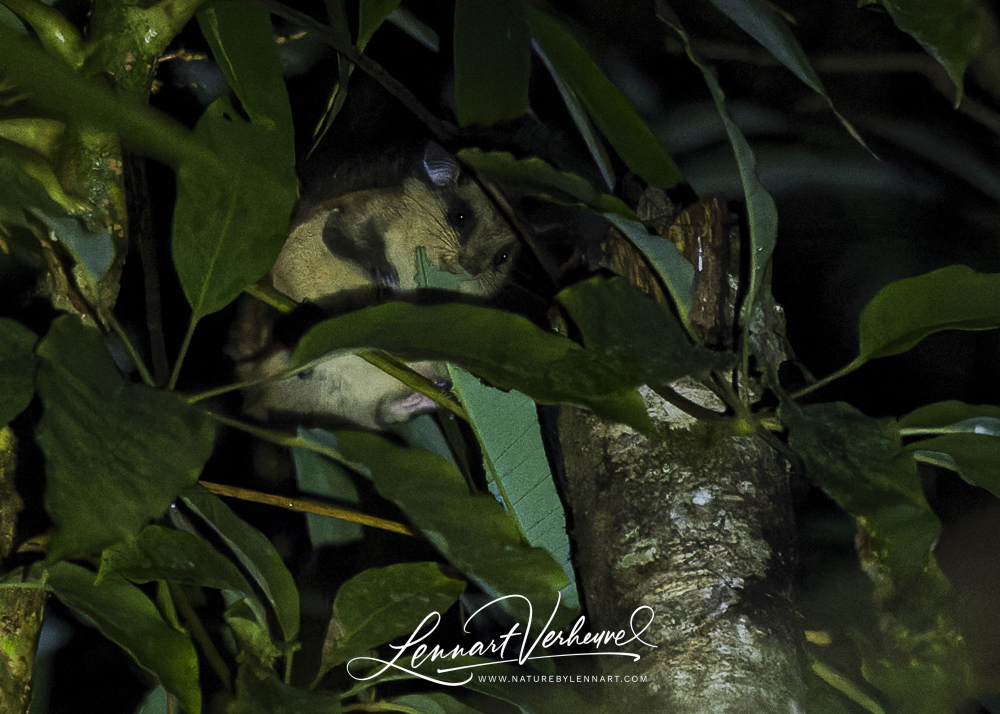

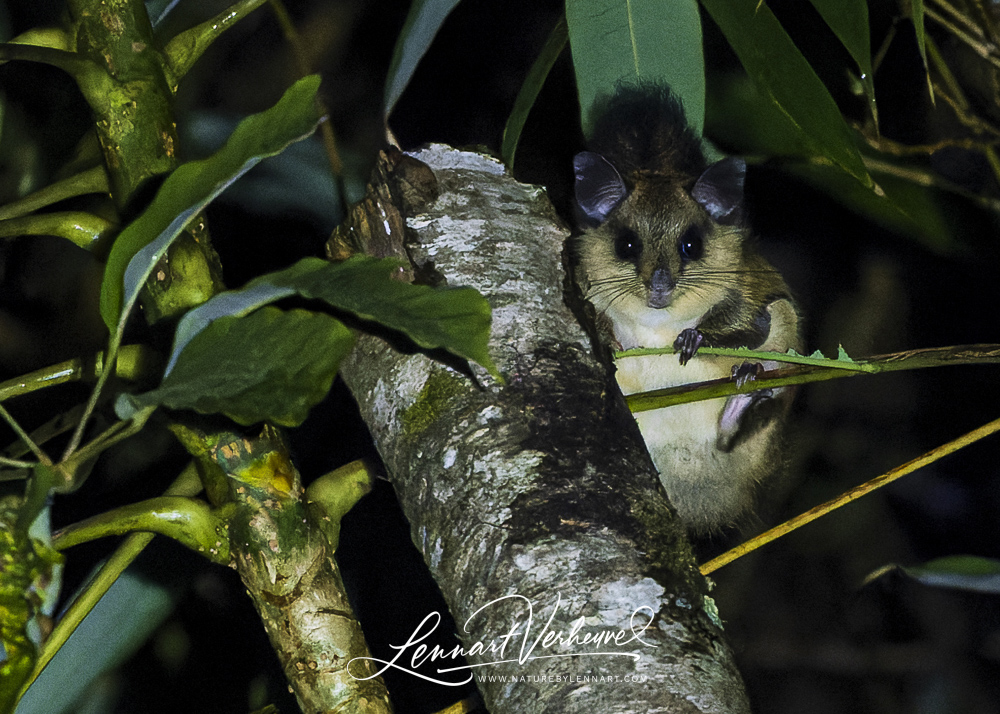
Particolored Flying Squirrel
These were also about our nightly highlights. Unfortunately, the best species did not allow any pictures! Things got very exciting on our last night when I picked up eye shine from a rock with a small tree in front of it. We drove there because we couldn’t see very well what it was. It turned out not to be possible to see anything from the side, so soon we were right in front of the spot, a few meters from the rock face. It seemed suddenly too close, but it all went pretty fast. The animal also seemed to have disappeared at first. While shining my flashlight I suddenly saw a cat’s head looking at me! It was a brown cat’s head with black specks on the cheeks. I didn’t see more than the head because the animal immediately disappeared. I was a bit confused because it went very quickly. I immediately thought of the Golden Cat, but after a few moments of thinking I realized that it has white stripes on the cheeks. The Mainland Leopard Cat has a very white muzzle. Only one species fit perfectly and that was the Marbled Cat! I had already seen that species in Borneo, so it was of little use to me for the list. It was all the more unfortunate for Janco and Andreas who had not yet seen the species and also didn’t see this one.
Our second cat sighting came as we left Bompu Camp in the rain at 3am. Due to the heavy rain it seemed impossible to search any further. We were all very focused on the road because we didn’t want to miss anything if we did come across a cat. And sure enough: suddenly a cat ran off the road! I only saw the behind legs and a tail. Janco had seen it sitting. Due to the size, color and length of the tail it was quickly clear that it had been a Mainland Leopard Cat, but what an awful sighting!
That’s how left Eaglenest. Our time here didn’t bring us what we wanted, but it sure was interesting! We went back in the car for another day, back to the airport of Guwahati from where we would leave for our next and my final destination: Pench National Park! Before that, however, we took some pictures of Rhesus Macaques along the way, which are a familiar sight in many villages in India.
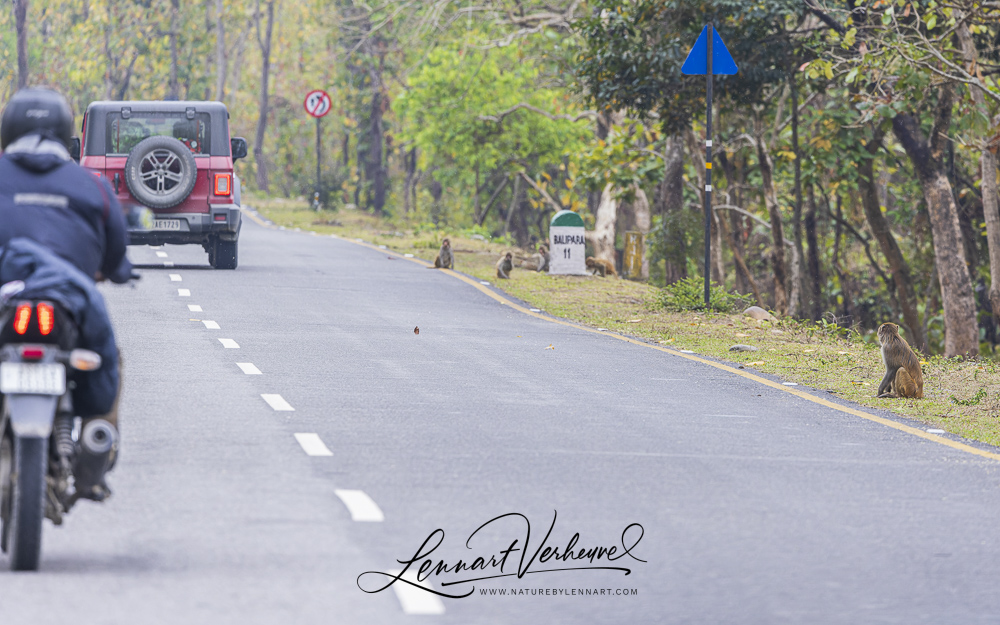
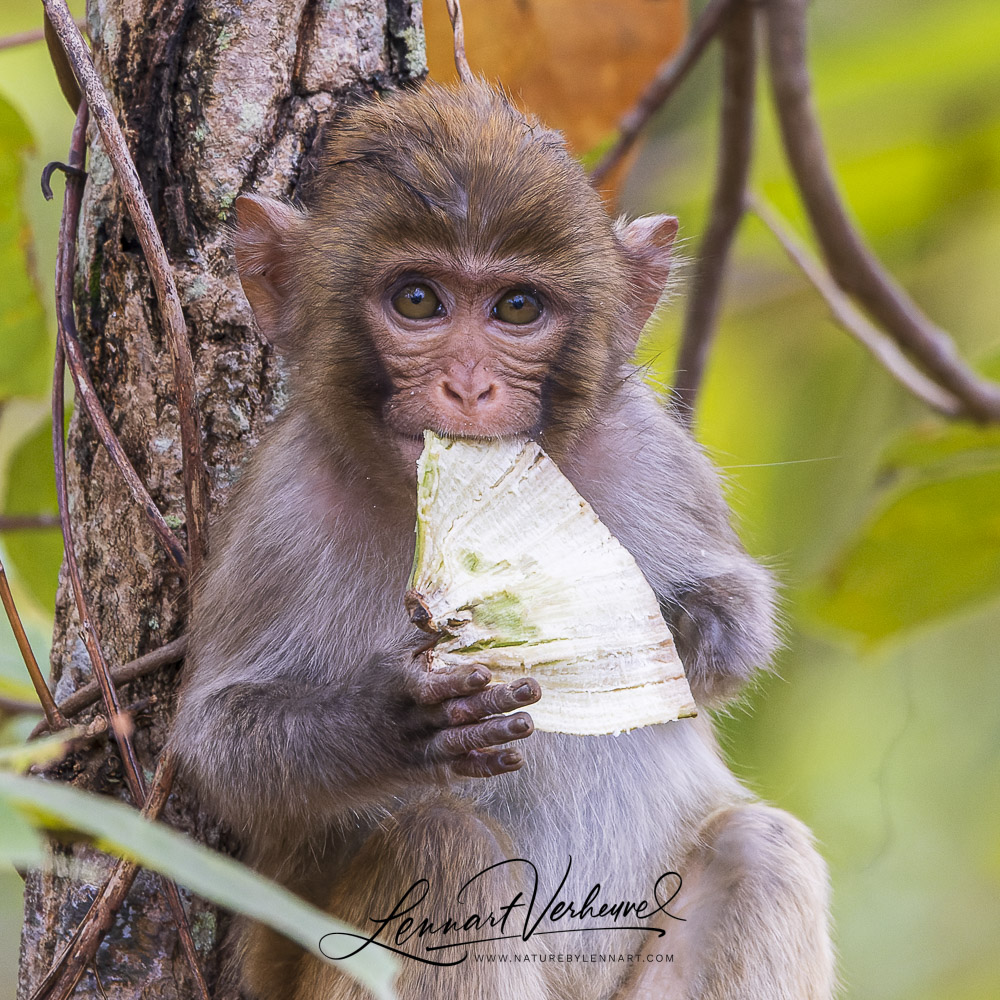
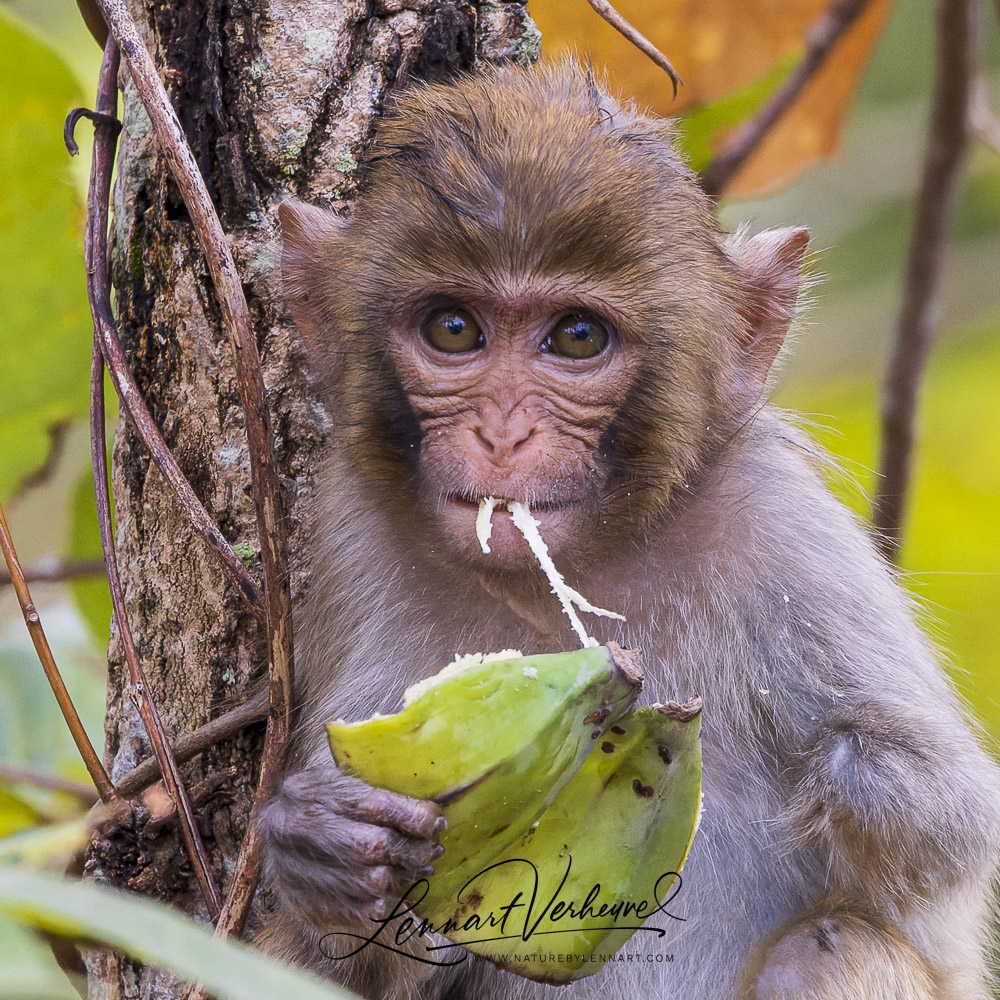
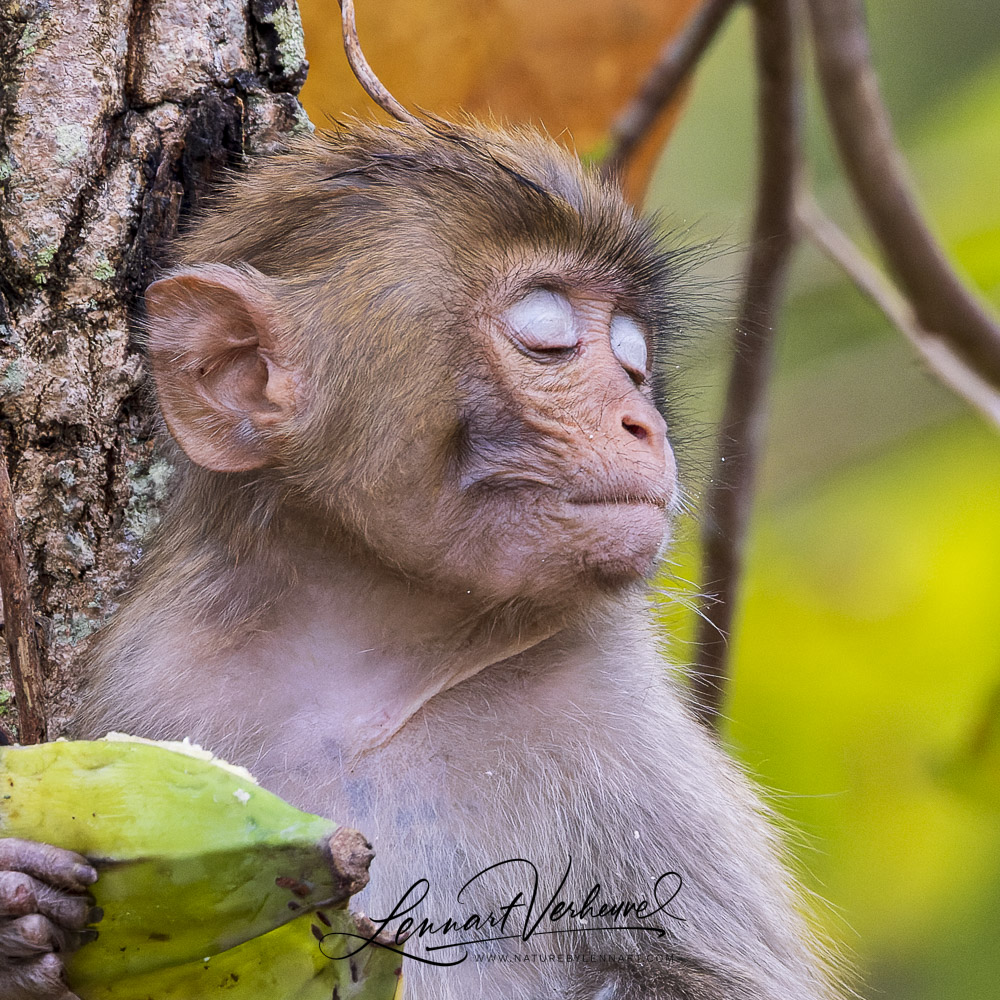
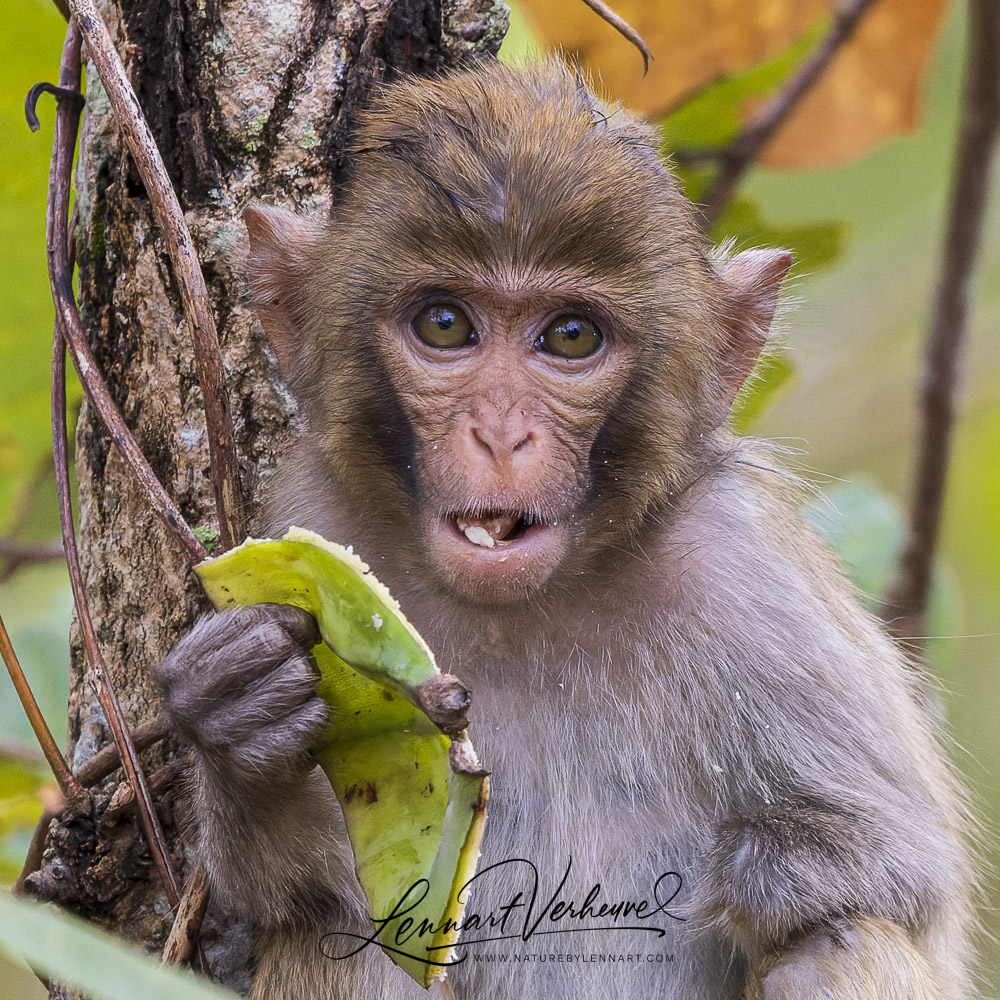
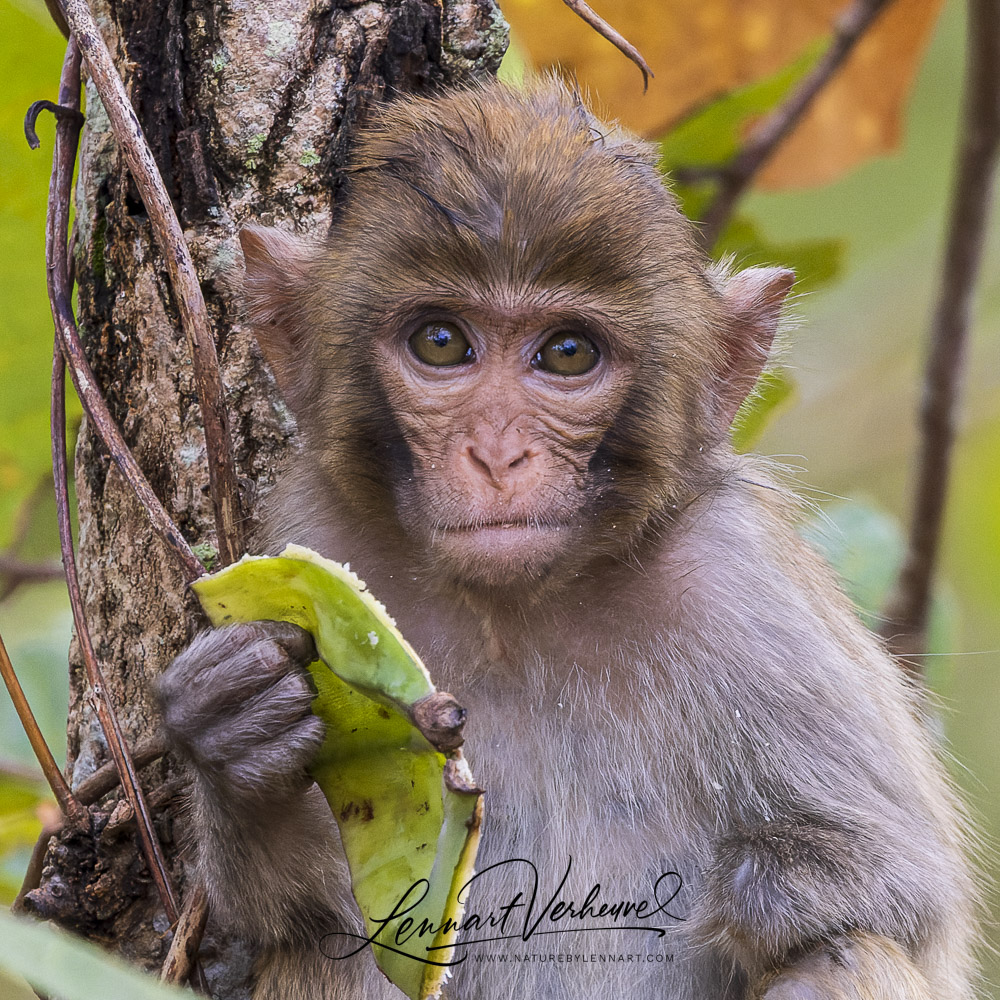
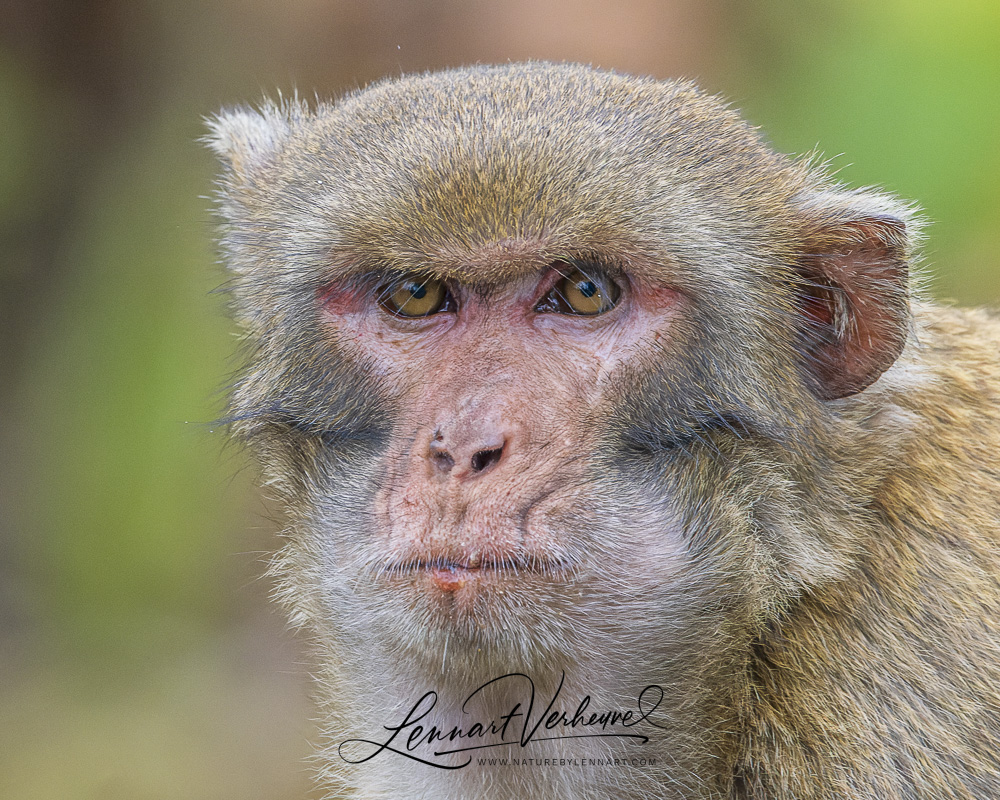

Rhesus Macaque
Want to see the final part? We saw the largest and smallest cat in the world: click here!
Want to see Snow Leopards? Click here!
And have a look here for the grumpiest cat in the world.
Copyright of articles and pictures on naturebylennart.com remains with Lennart Verheuvel and without permission they can not be used in any way

2 comments so far
VikramPosted on7:04 am - Jul 6, 2023
Amazing report and images.
adminPosted on2:19 pm - Jul 6, 2023
Thank you!